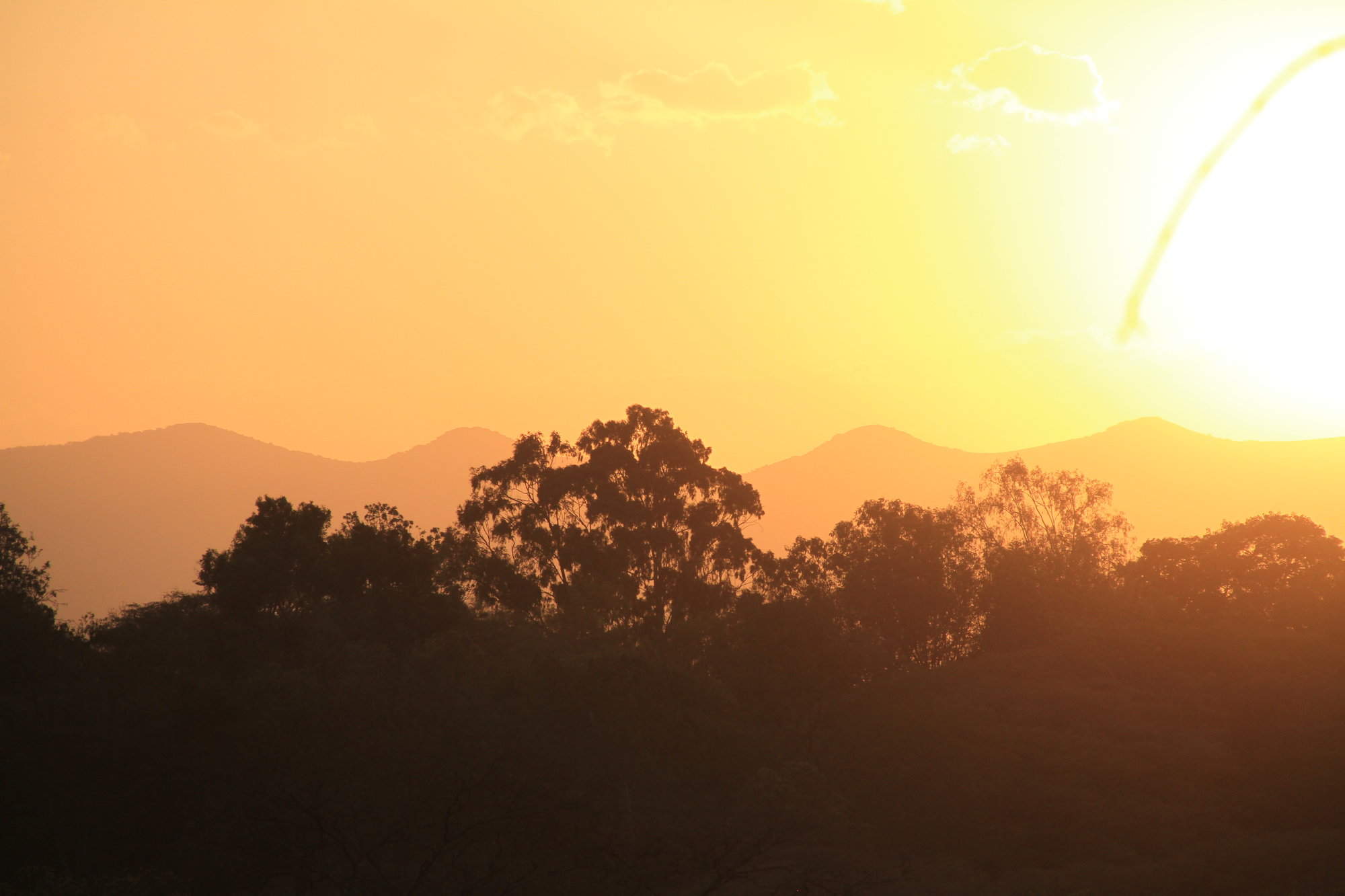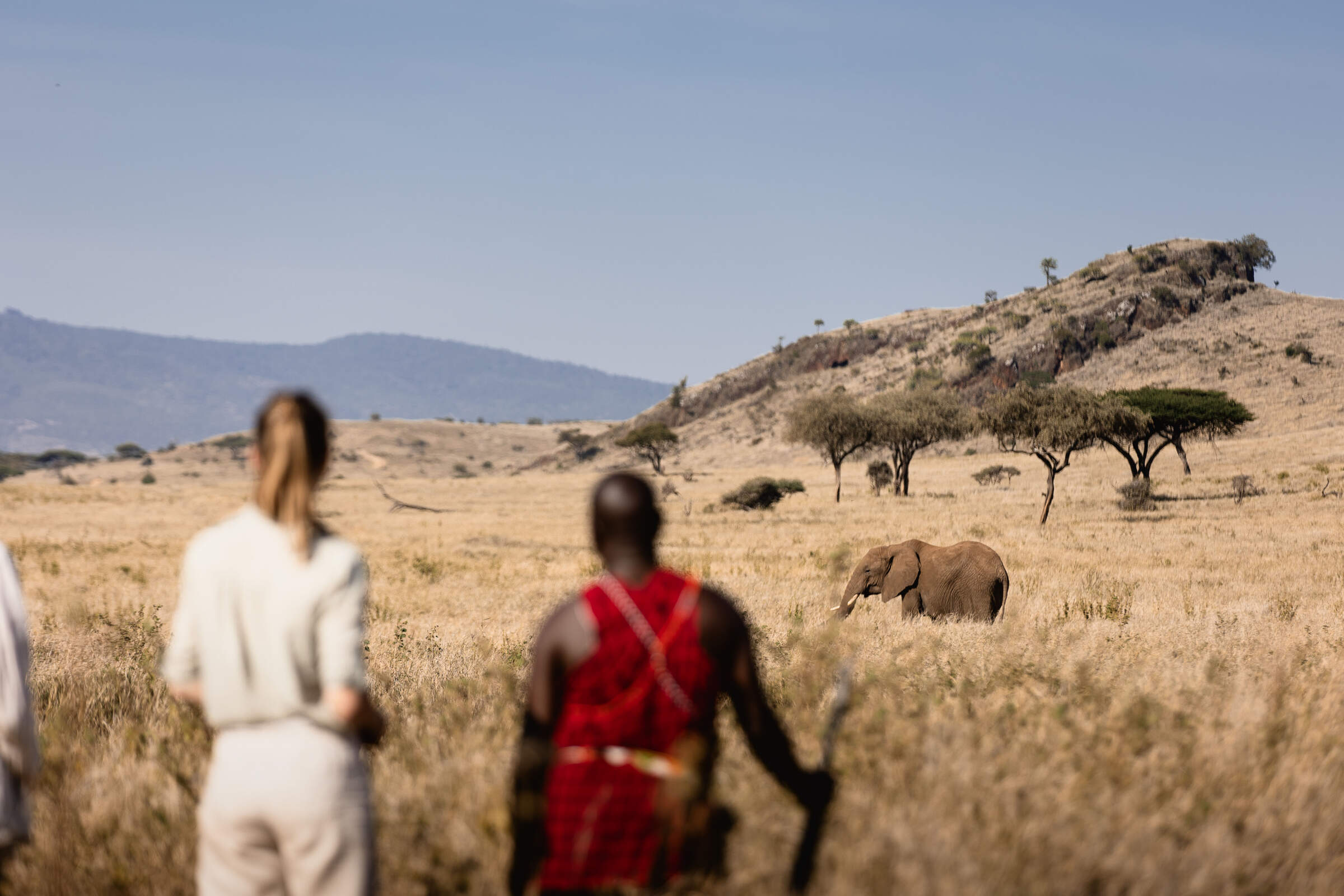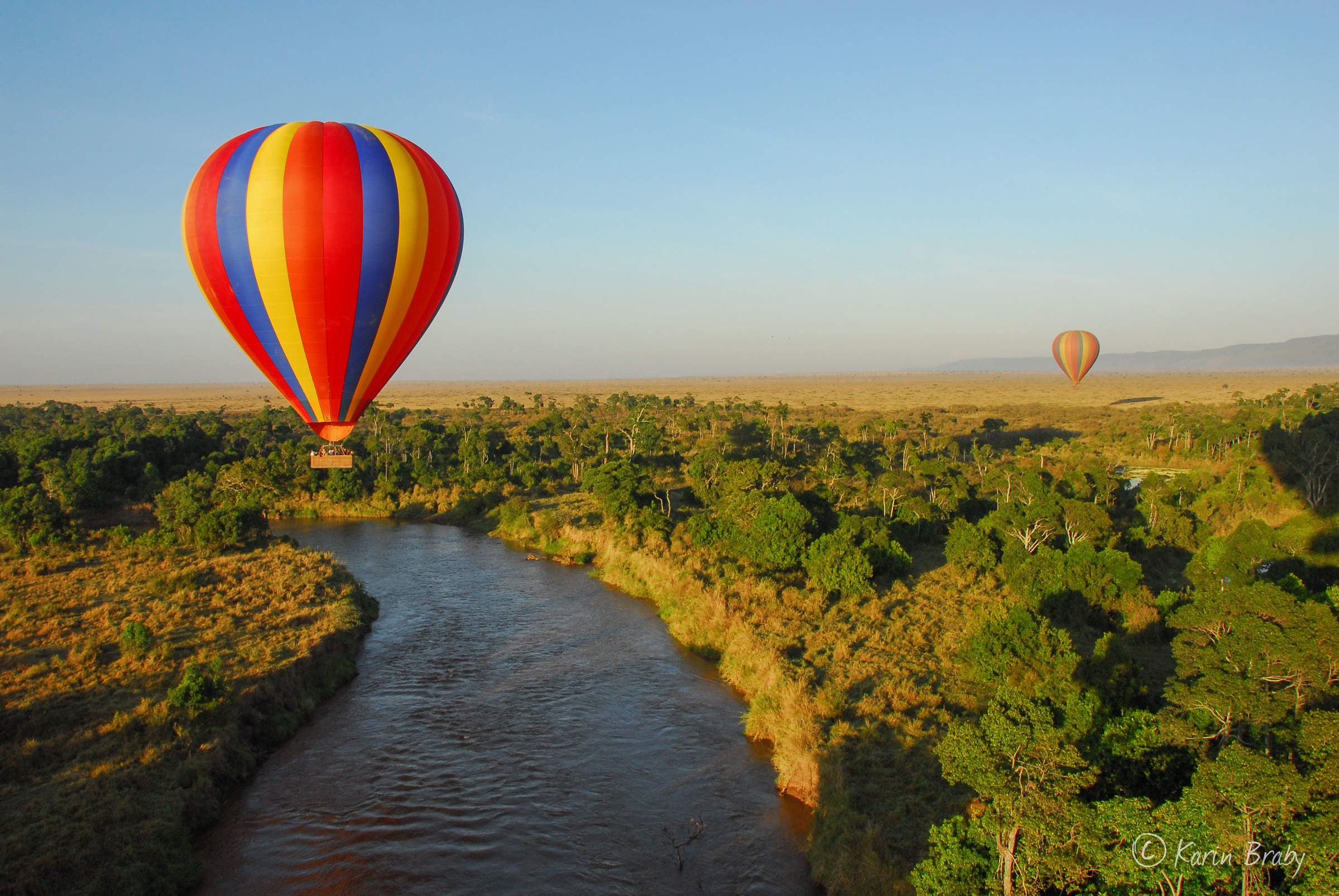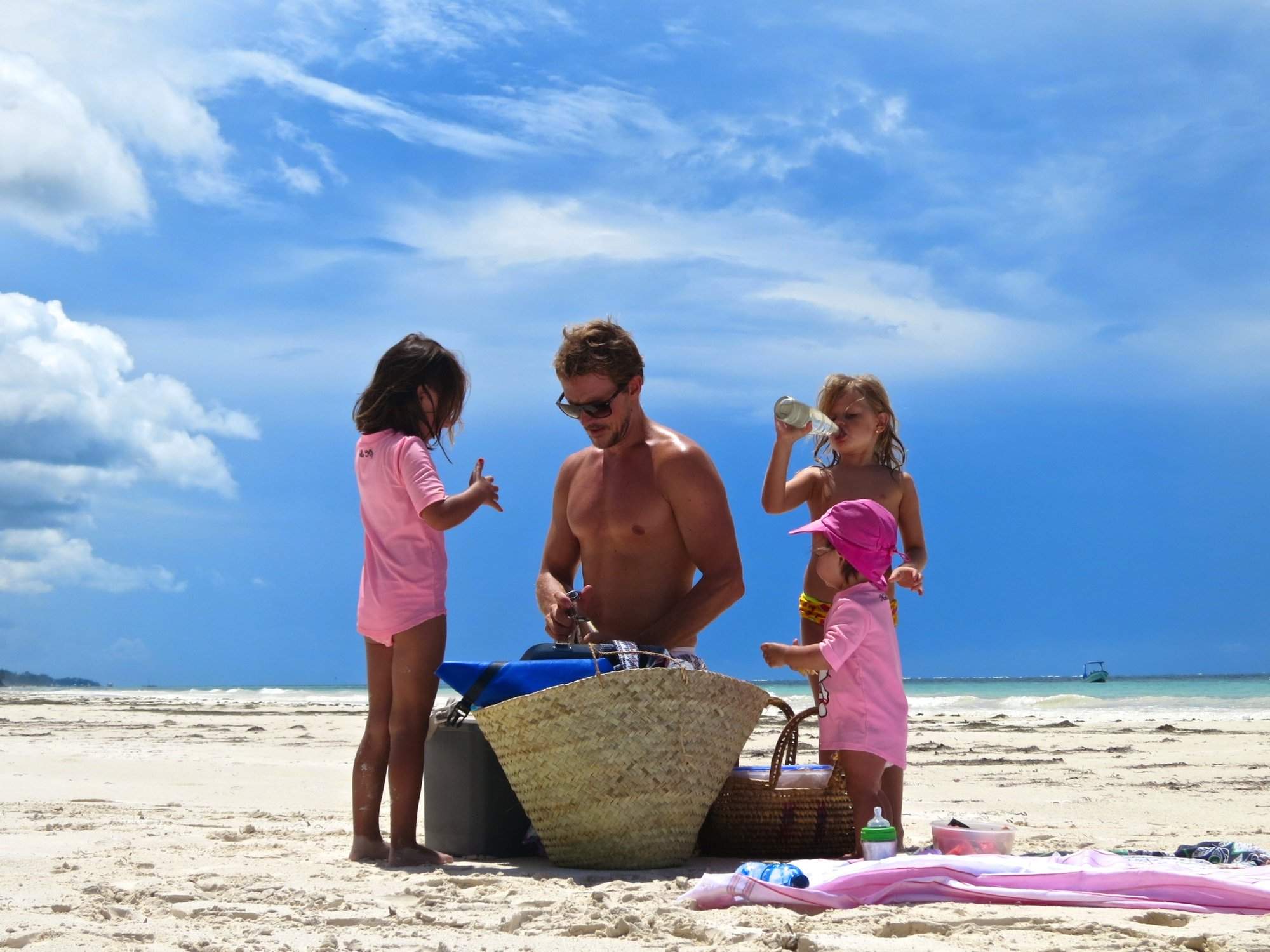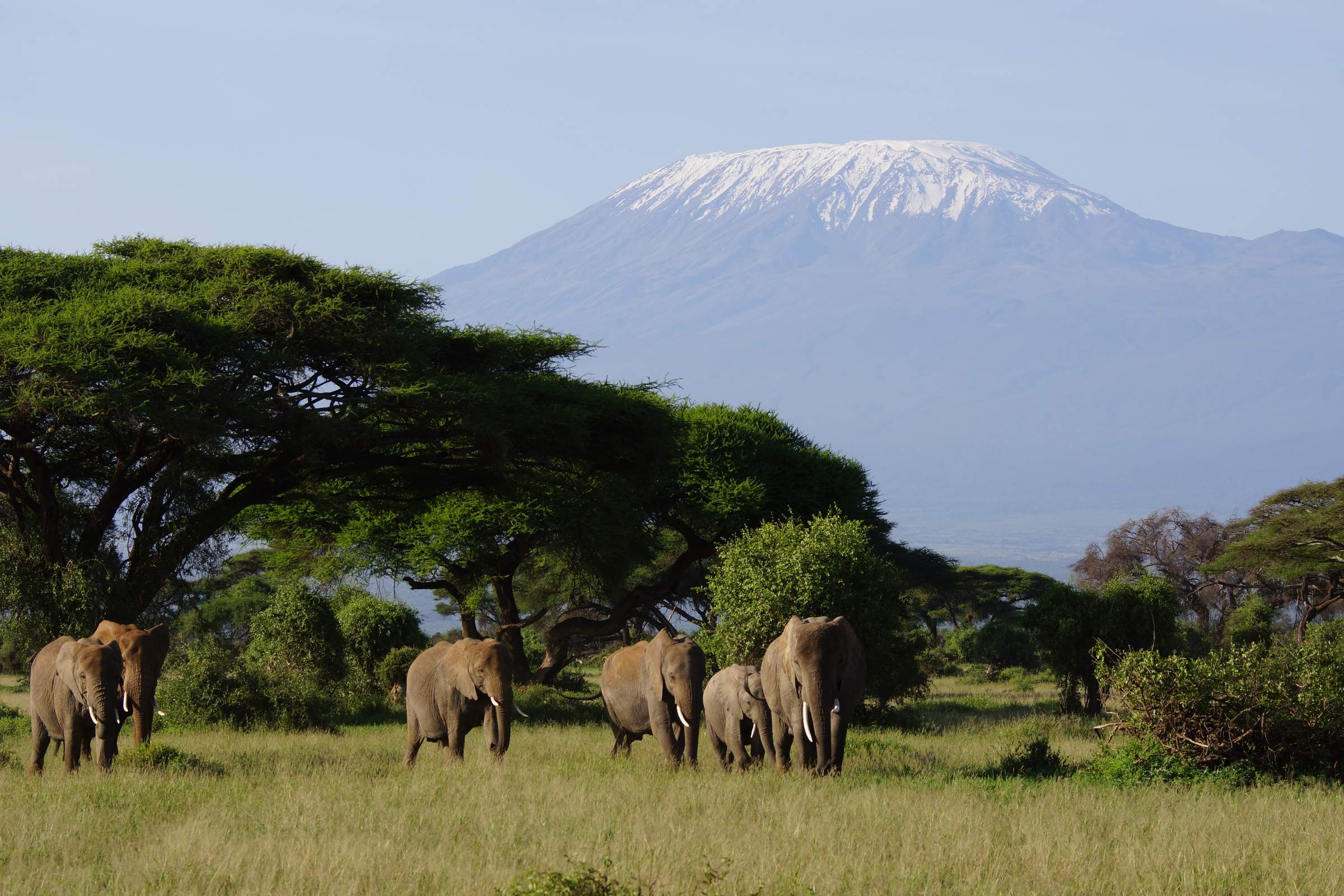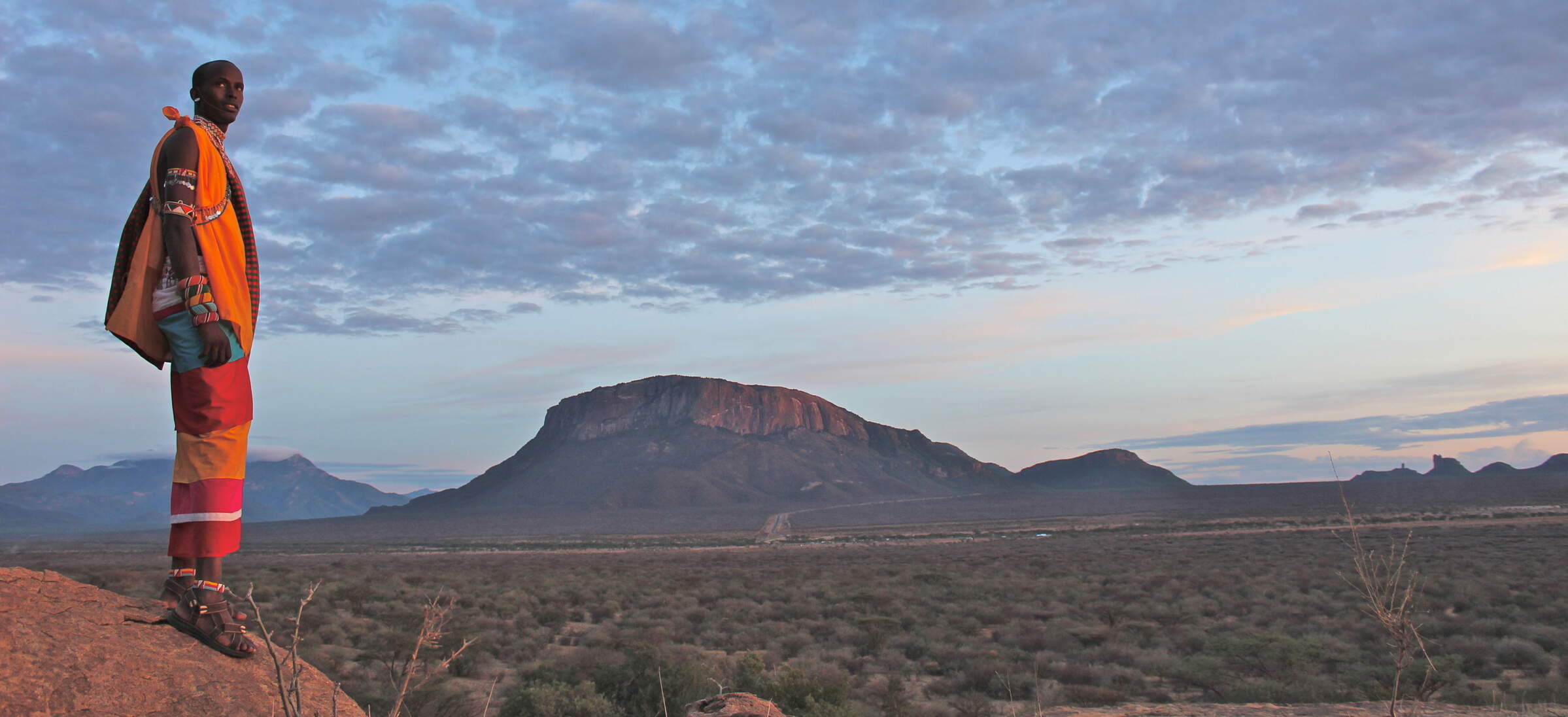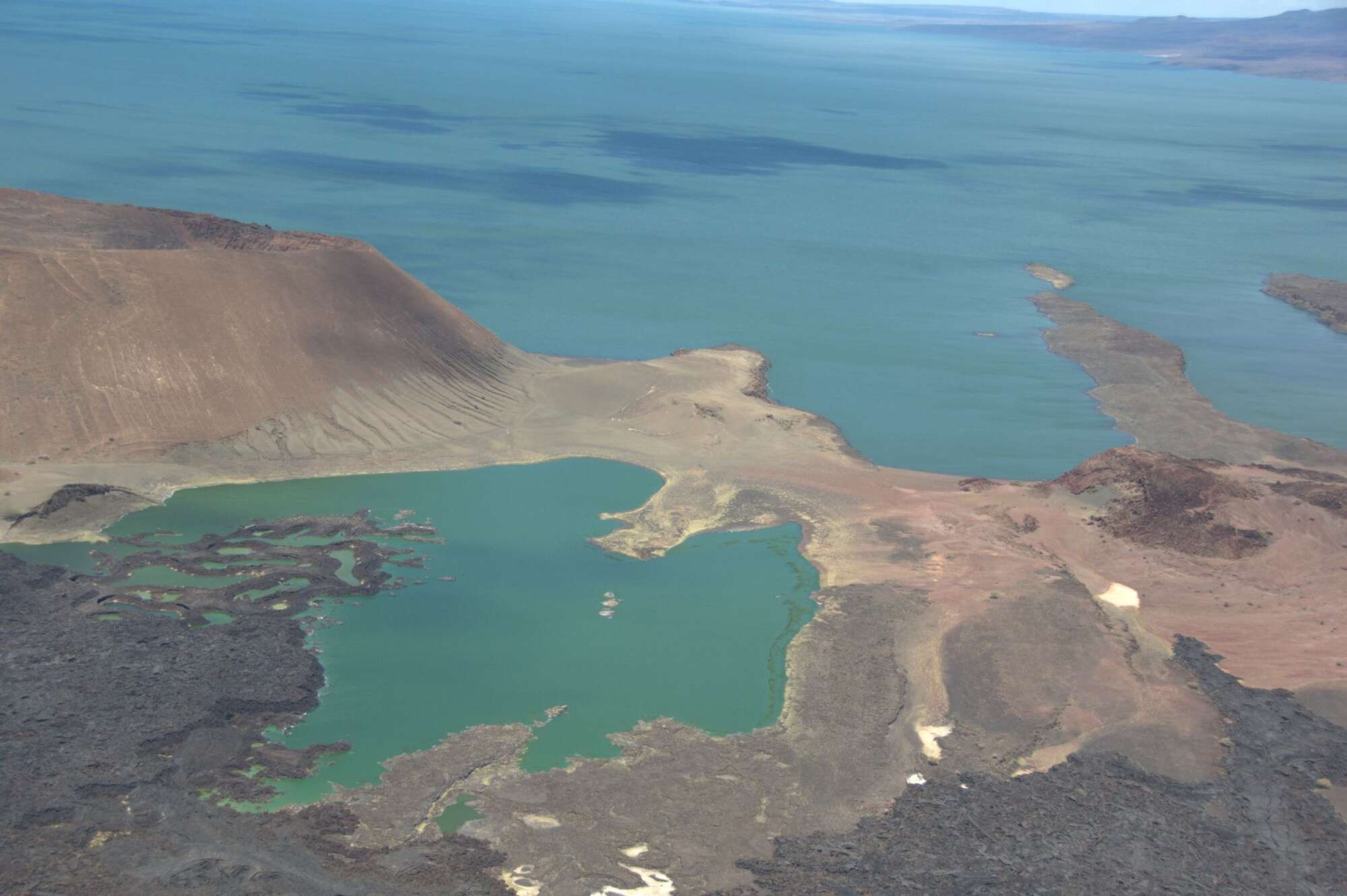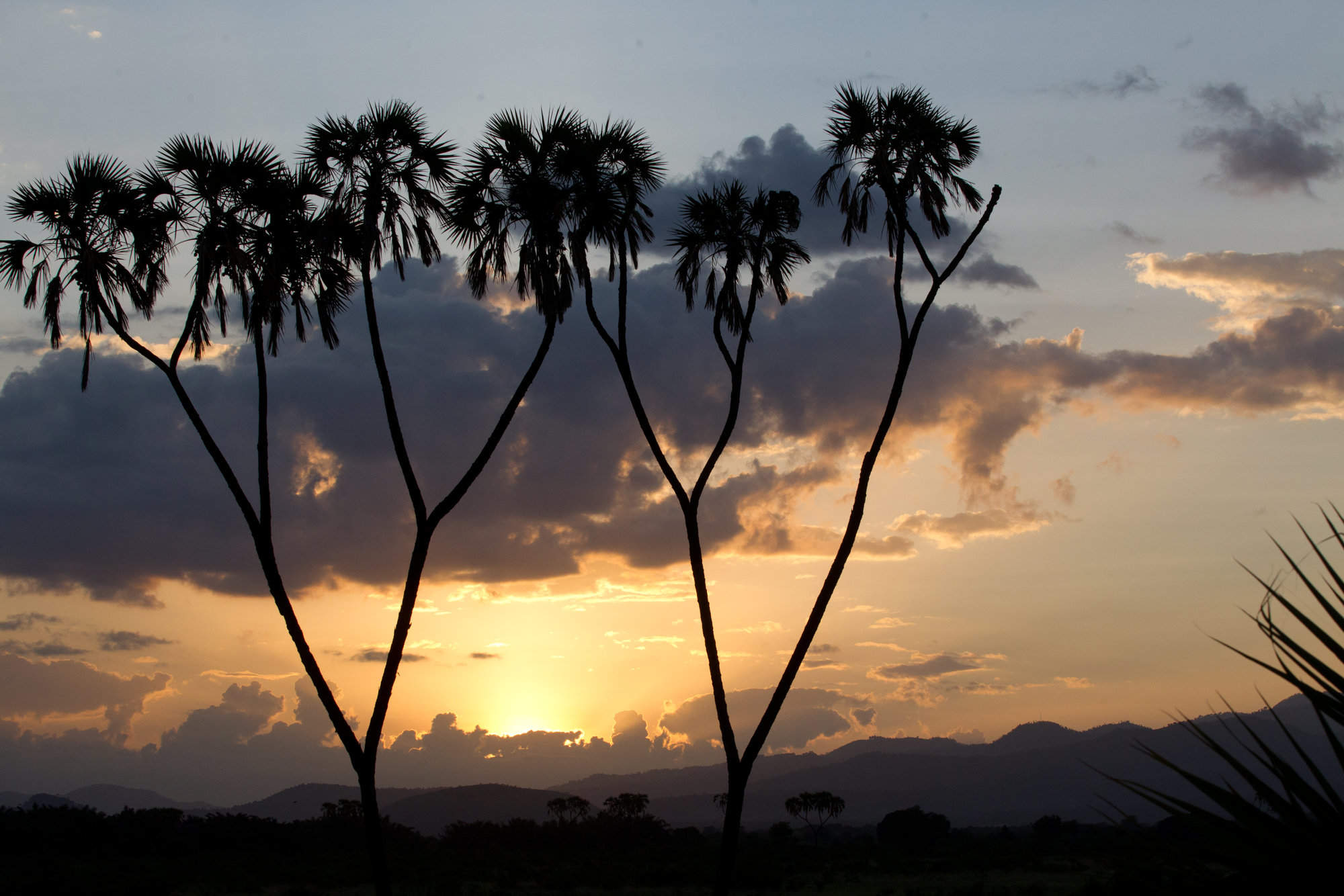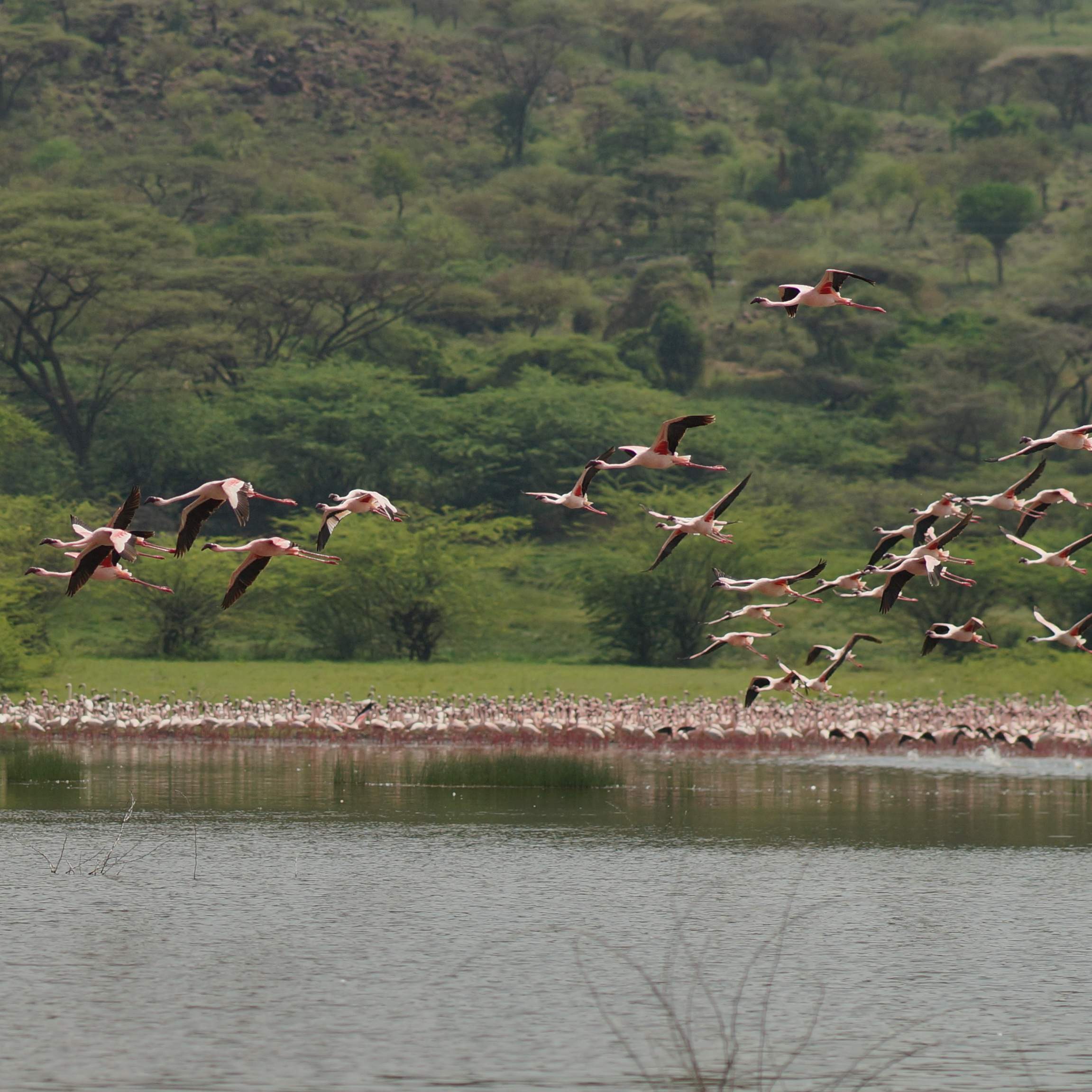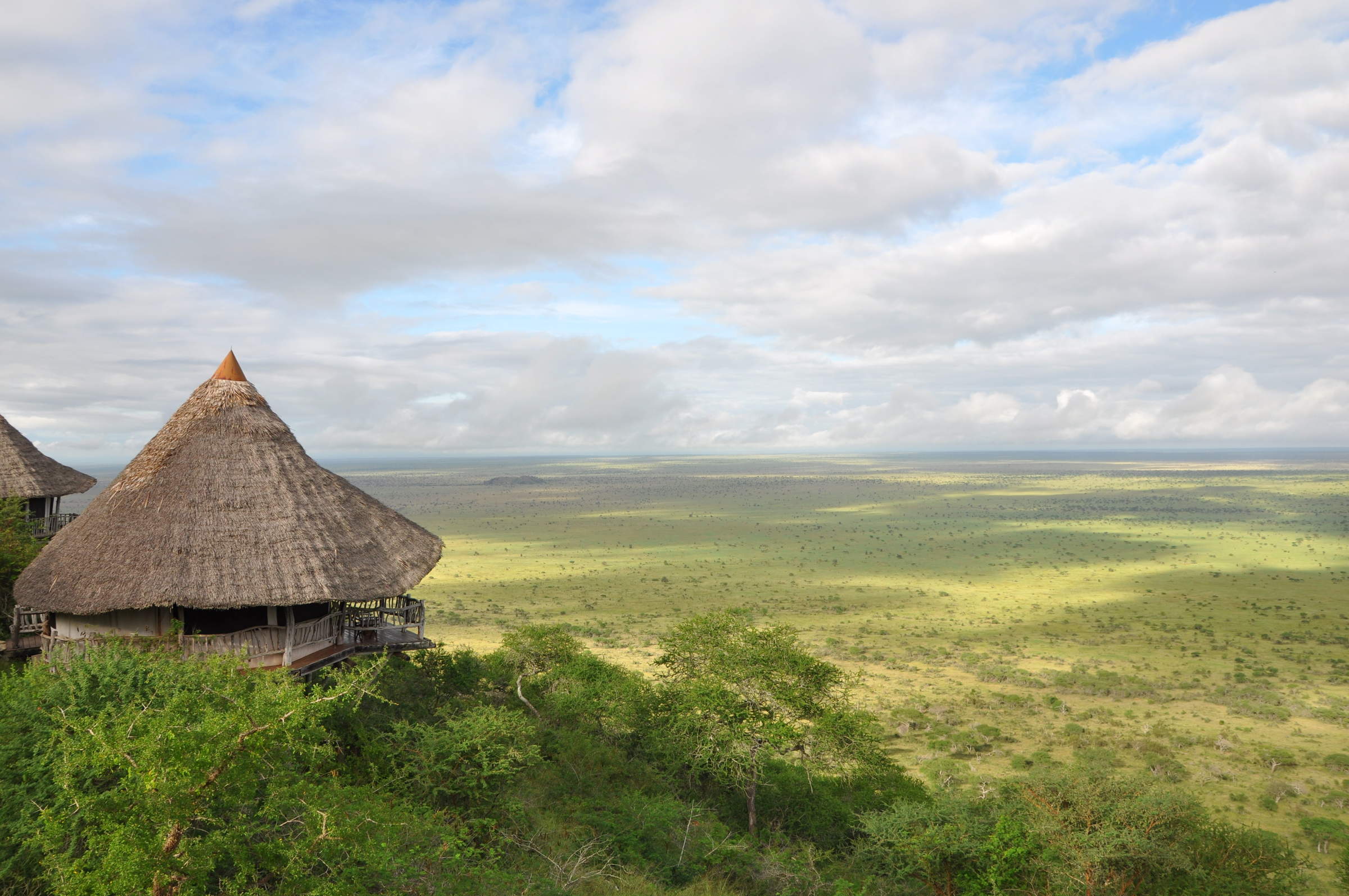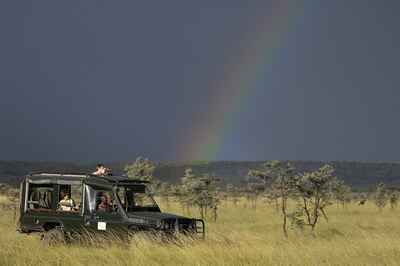
The conservancies are exclusive to their guests...
...bush walks...
Most of the camp staff come from the region’s Maasai communities.
You will often see no other vehicles around you...
Maasai Mara Conservancies
Maasai Mara Conservancies
On the boundary of the Maasai Mara National Reserve, Maasai livestock lands have become exclusive, wildlife sanctuaries.
Although it might seem an obvious partnership, with benefits for all sides, conservancies were first tried in the region as recently as 2005, having been pioneered at Selenkay near Amboseli in 1997. There have, however, been positive developments in the Mara almost every year since then, with one large bush district after another converting from cattle-grazing to safari tourism and conservation.
Sometimes the Maasai retain limited livestock-grazing rights in these areas, and particularly in the corridors between them – and there are small islands of resistance here and there, where a landowner has done a private deal, or ‘forgets’ he is not supposed to be grazing his livestock beyond the agreed invisible boundaries.
Minor teething troubles aside, however, the conservancy model has been a massive success – so much so that the wildlife is often more prolific in the conservancies outside the Maasai Mara National Reserve than inside it.
As livestock-grazing is far from unknown in the National Reserve in any case – and there is busy tourist traffic in much of it, especially in the migration season and peak holiday periods – there is evidence that the wildlife is steadily adjusting to the fact that the bushier, less visited lands to the north and east are also relatively safe havens, where humans pose only a limited threat and the natural environment is increasingly returning to a state of healthy balance.

The best safaris to the Maasai Mara Conservancies
The Maasai Mara and its surrounding conservancies offer some of Kenya’s most rewarding safari experiences, with abundant wildlife and dramatic seasonal migrations. These safaris pair perfectly with time in other iconic Kenyan regions, such as the arid landscapes of Samburu, the lakes of the Rift Valley, or the tropical white sands of the Kenyan coast.
There are so many experiences to choose from, so we’ve curated a selection of our favourite safaris that include the Maasai Mara Conservancies.
These are just ideas – we’ll always tailor-make your trip. Contact one of our Kenya Experts to create your ideal Maasai Mara Conservancies safari.
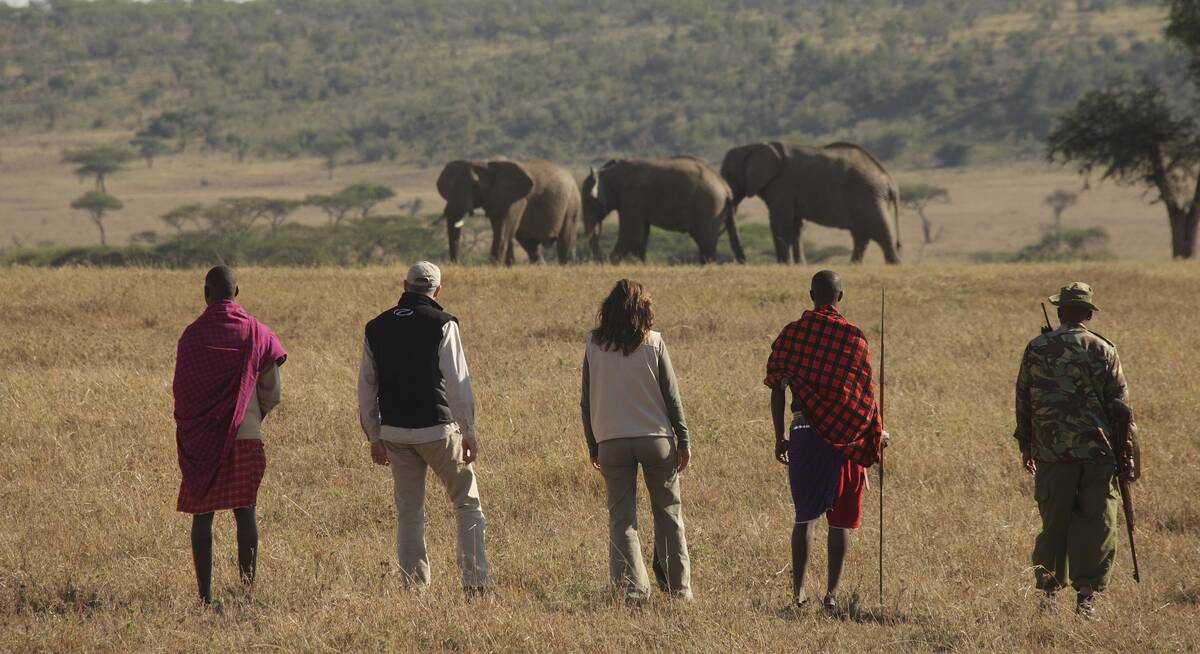
Striped Hyena Safari
5 days • 3 locations
NAIROBI AIRPORT TO NAIROBI AIRPORT
Just one example of a possible itinerary for keen walkers, this safari enables you to experience the sounds and sights of the bush, and its wildlife, in an unusually direct way.
US$5,700 - US$6,990 per person
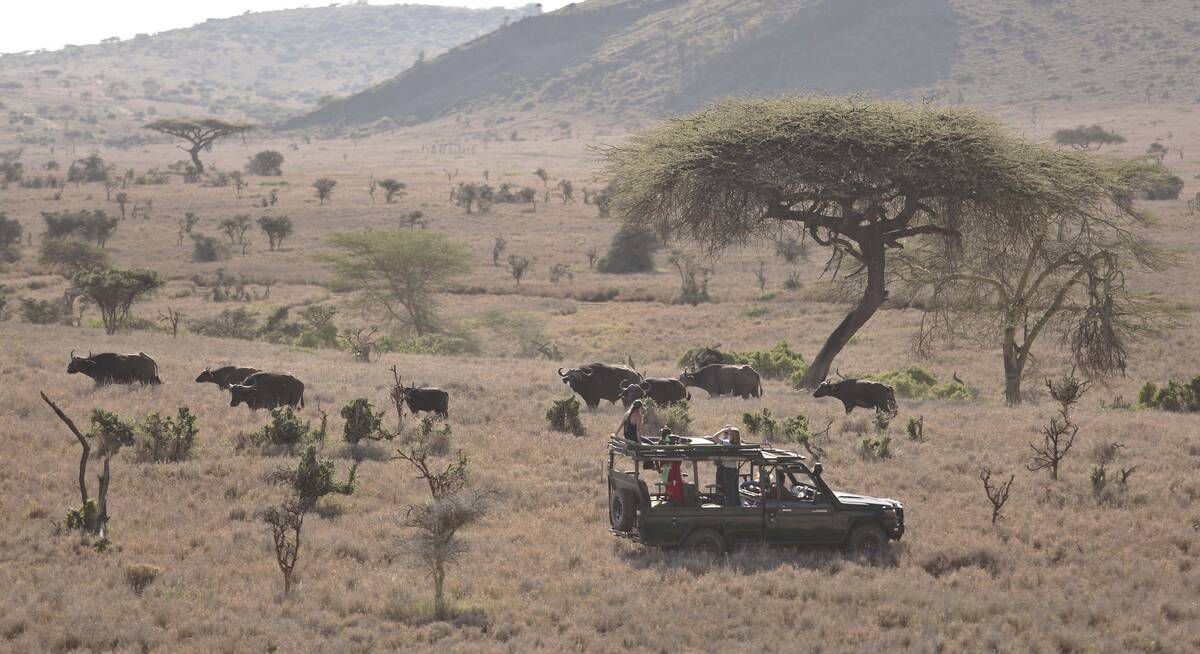
African Hawk-Eagle Fly-in Safari
7 days • 2 locations
NAIROBI AIRPORT TO NAIROBI AIRPORT
Two luxurious camps provide relatively quiet game-viewing within Laikipia and the Mara ecosystem. Situated on private conservancies, both Lewa Wilderness and Naboisho offer the chance to sight all of the "Big 5" and to enjoy a range of safari activities.
US$9,360 - US$16,430 per person
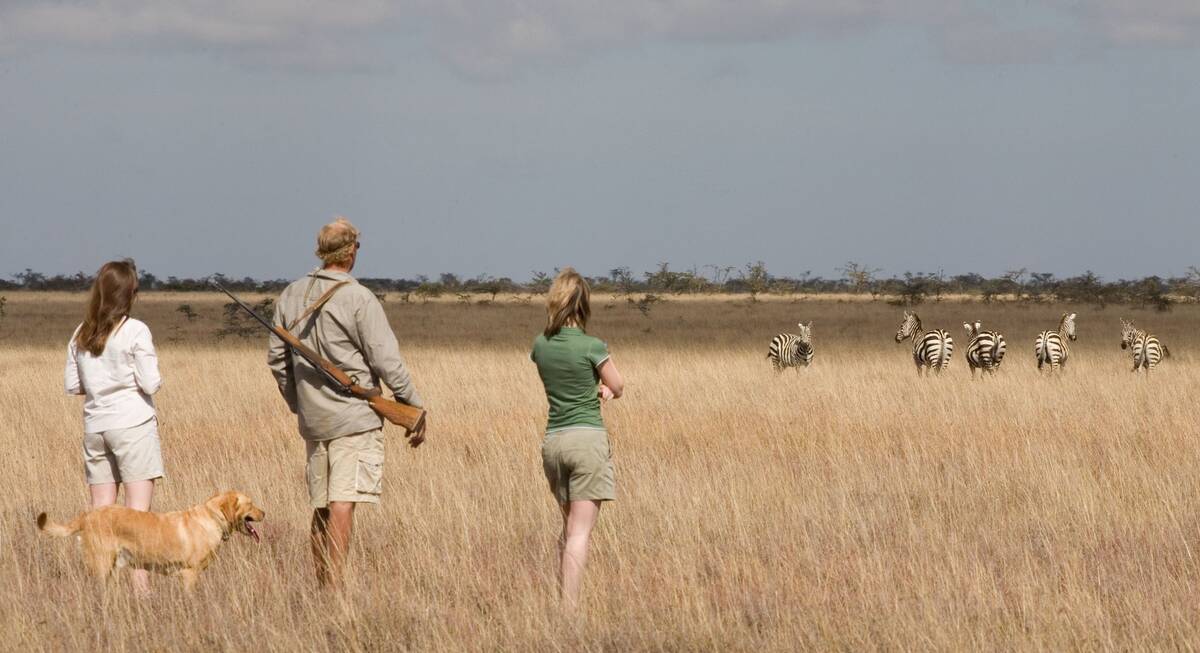
Hamerkop Fly-In Safari
8 days • 2 locations
NAIROBI AIRPORT TO NAIROBI AIRPORT
Different wildlife, contrasting camps and a whole host of activities, this is a safari for those wanting to get out and about and not just sit in a vehicle.
US$7,430 - US$10,960 per person
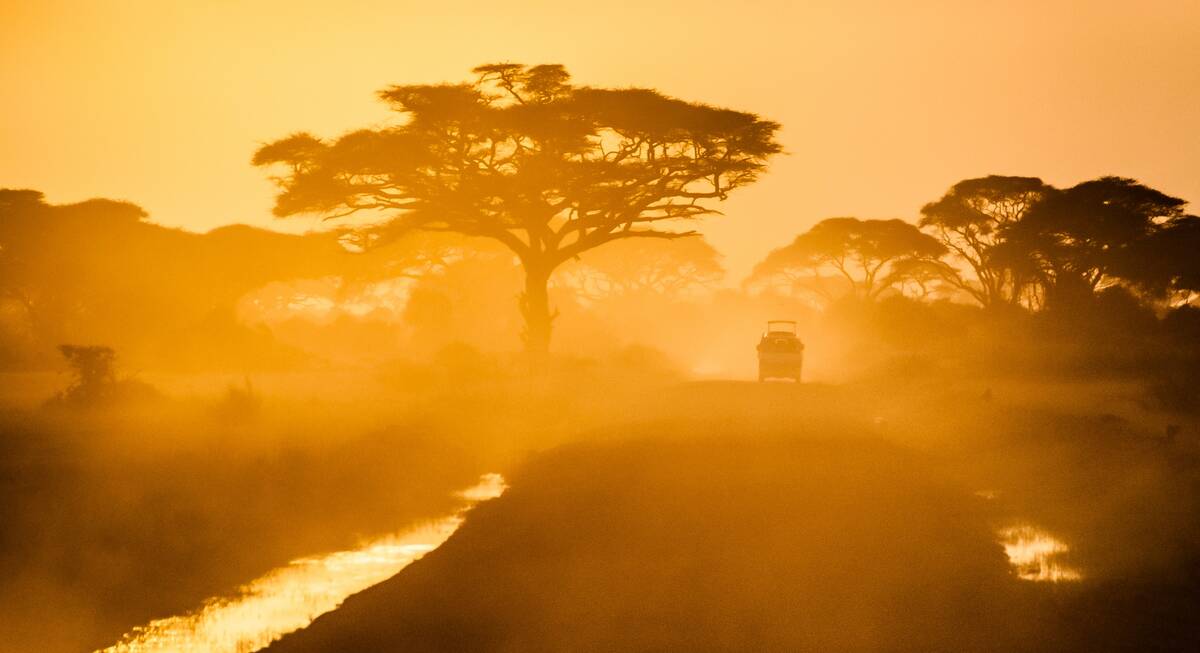
Tawny Eagle Fly-in Safari
7 days • 2 locations
NAIROBI AIRPORT TO NAIROBI AIRPORT
Explore Laikipia and the Maasai Mara ecosystem with stays in the Ol Pejeta and Naboisho conservancies. Two smart yet authentically rustic bush camps provide a traditional safari experience, offering a high standard of guiding and excellent level of care.
US$6,550 - US$8,630 per person
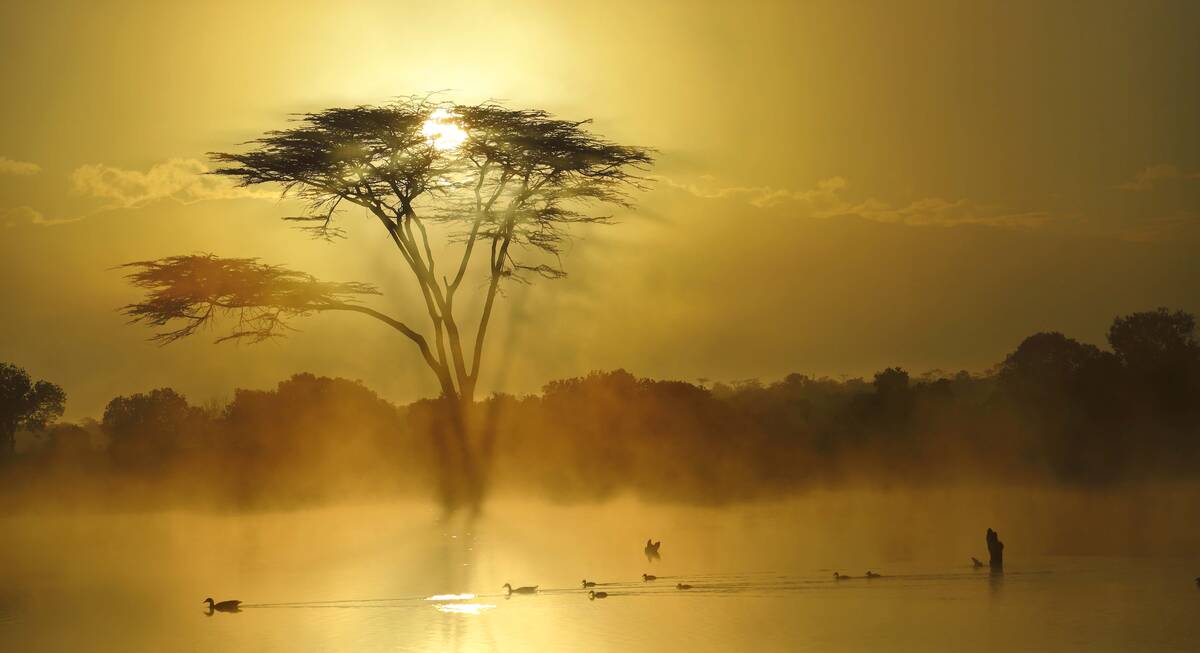
Purple Grenadier Fly-In Safari
6 days • 2 locations
NAIROBI AIRPORT TO NAIROBI AIRPORT
Fantastic guiding from intimate, well-run mid-range tented camps, in superb conservancy locations: this safari is all about making the most of the incredible wildlife in Laikipia and the Maasai Mara.
US$6,390 - US$8,800 per person
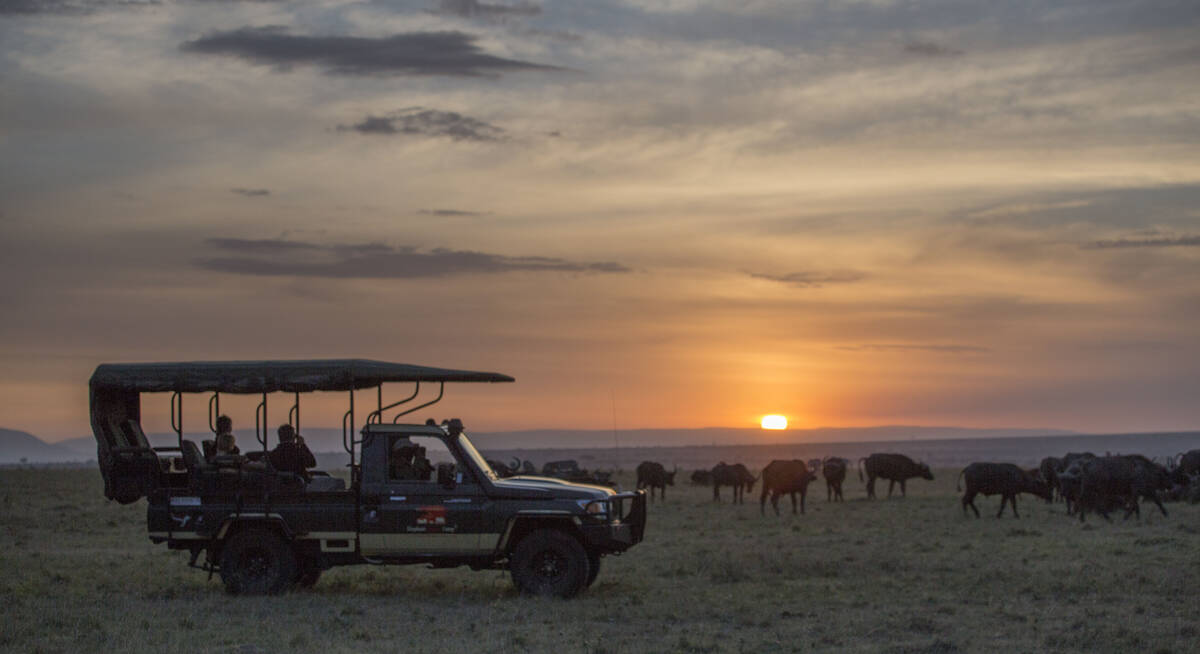
Black Kite Fly-in Safari
10 days • 4 locations
NAIROBI AIRPORT TO NAIROBI AIRPORT
Explore Kenya in-depth with visits to Nairobi and Meru national parks, the Mara Conservancies and Amboseli. Nestled in remoter regions, four camps provide fantastic access to rich game, a range of activities and beautifully diverse landscapes.
US$10,410 - US$14,150 per person
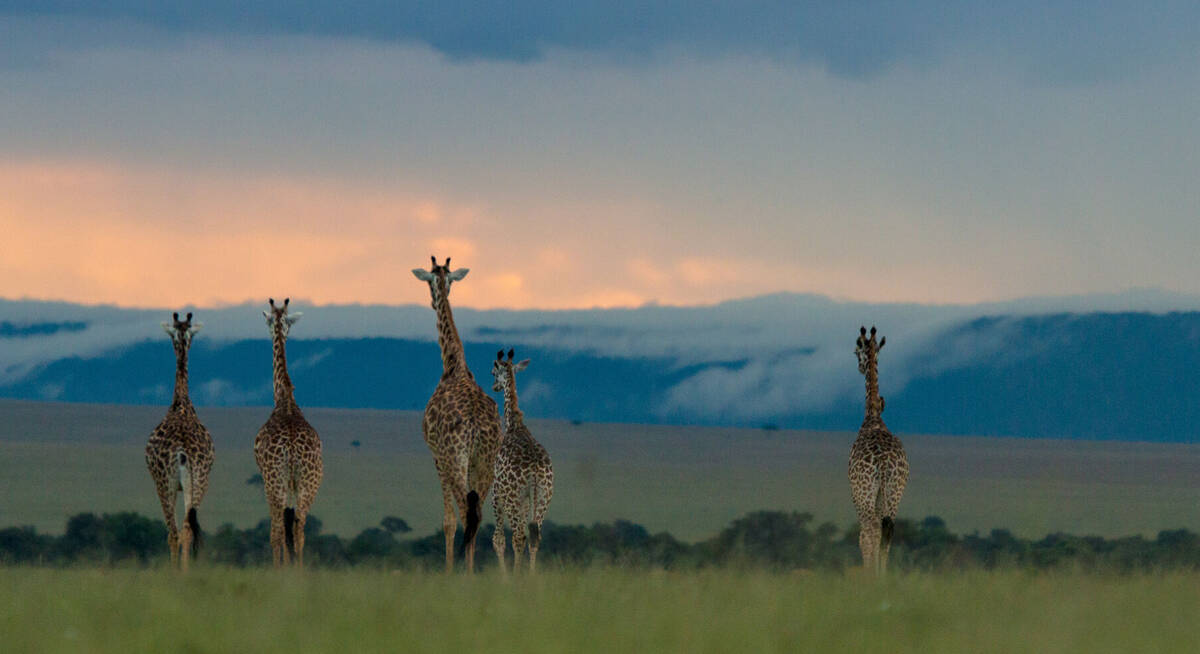
African Finfoot Fly-in Safari
7 days • 3 locations
NAIROBI AIRPORT TO NAIROBI AIRPORT
After a unique start in Nairobi National Park, classic, luxurious camps combine for a high-end and exclusive safari in fantastic wildlife destinations.
US$11,230 - US$17,340 per person
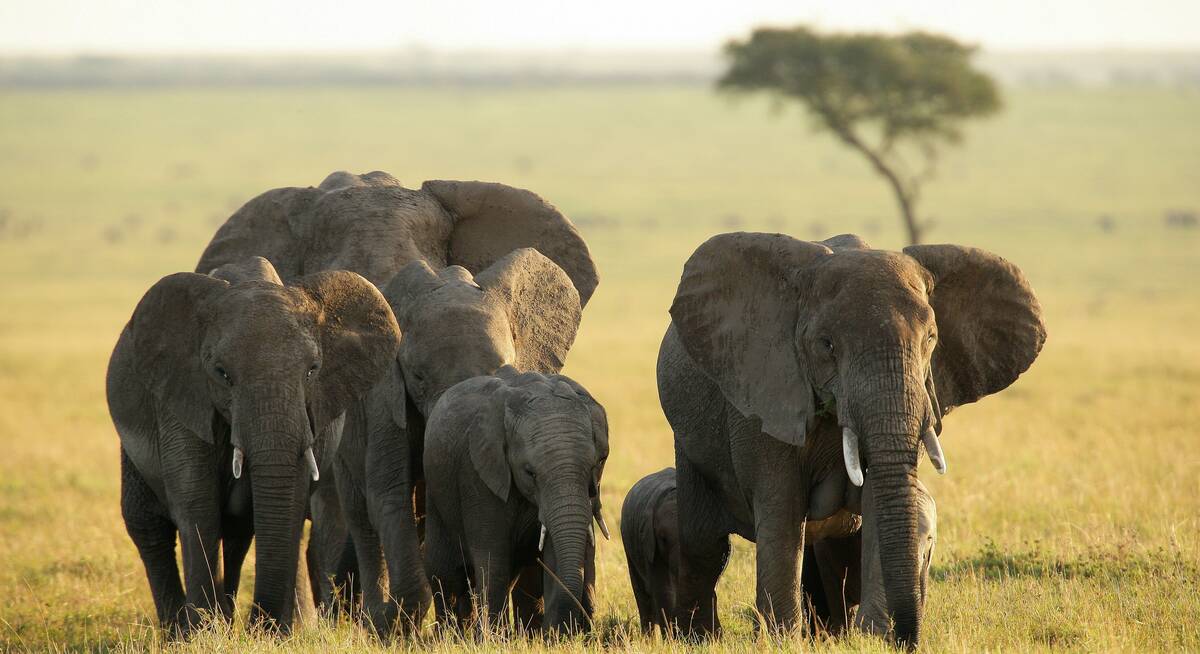
Peregrine Falcon Fly-In Safari
6 days • 2 locations
NAIROBI AIRPORT TO NAIROBI AIRPORT
Discover two of Kenya’s quieter wildlife havens with visits to Meru National Park and Mara North Conservancy. Top-quality sister camps provide considerable comfort and a range of activities by which to explore the game-rich surroundings.
US$7,840 - US$8,980 per person
Most recent reviews of our safaris to Mara Conservancies
Click below to browse all 419 reviews from Maasai Mara Conservancies. All from our travellers; all are in full & unedited.
Arrived 5 Jun 2025, 7 nights
"My Jun 2025 trip"
Overall rating: Excellent
Arrived 3 Jun 2025, 9 nights
"First Safari! June 3"
Overall rating: Excellent
Arrived 15 Mar 2025, 5 nights
"My Mar 2025 trip"
Overall rating: Excellent
Arrived 4 Mar 2025, 17 nights
"My Mar 2025 Kenyan Safari"
Overall rating: Excellent
Arrived 1 Mar 2025, 8 nights
"Kenya Safari for 10 year anniversary trip"
Overall rating: Excellent
Arrived 25 Feb 2025, 14 nights
"Kenya & Tanzania"
Overall rating: Excellent
Arrived 22 Feb 2025, 9 nights
"My Feb 2025 trip"
Overall rating: Excellent
Arrived 20 Feb 2025, 9 nights
"Kicheche Mara Feb 2025"
Overall rating: Excellent
Arrived 30 Jan 2025, 14 nights
"My Jan 2025 trip"
Overall rating: Excellent
Arrived 28 Jan 2025, 11 nights
"My Jan 2025 trip: Something undoubtedly to be repeated."
Overall rating: Excellent
The best camps and lodges in the Maasai Mara Conservancies
Accommodation in the Maasai Mara Conservancies offers intimate, low-impact safari experiences, often set in prime wildlife areas with few other visitors.
Camps and lodges are thoughtfully scattered across different conservancies, ensuring seclusion and minimal environmental disruption. Most properties embrace a tented, safari-chic aesthetic – balancing comfort with immersion in nature. Popular bases include the wildlife-rich Olare Motorogi, Naboisho, and Mara North conservancies, all offering superb game viewing alongside community-focused, sustainable tourism models.
We’ve selected the best lodges and camps in the Maasai Mara Conservancies for you, all personally visited by the Expert Africa team.
For more information on what's available and what might suit you best, don't hesitate to ask us!
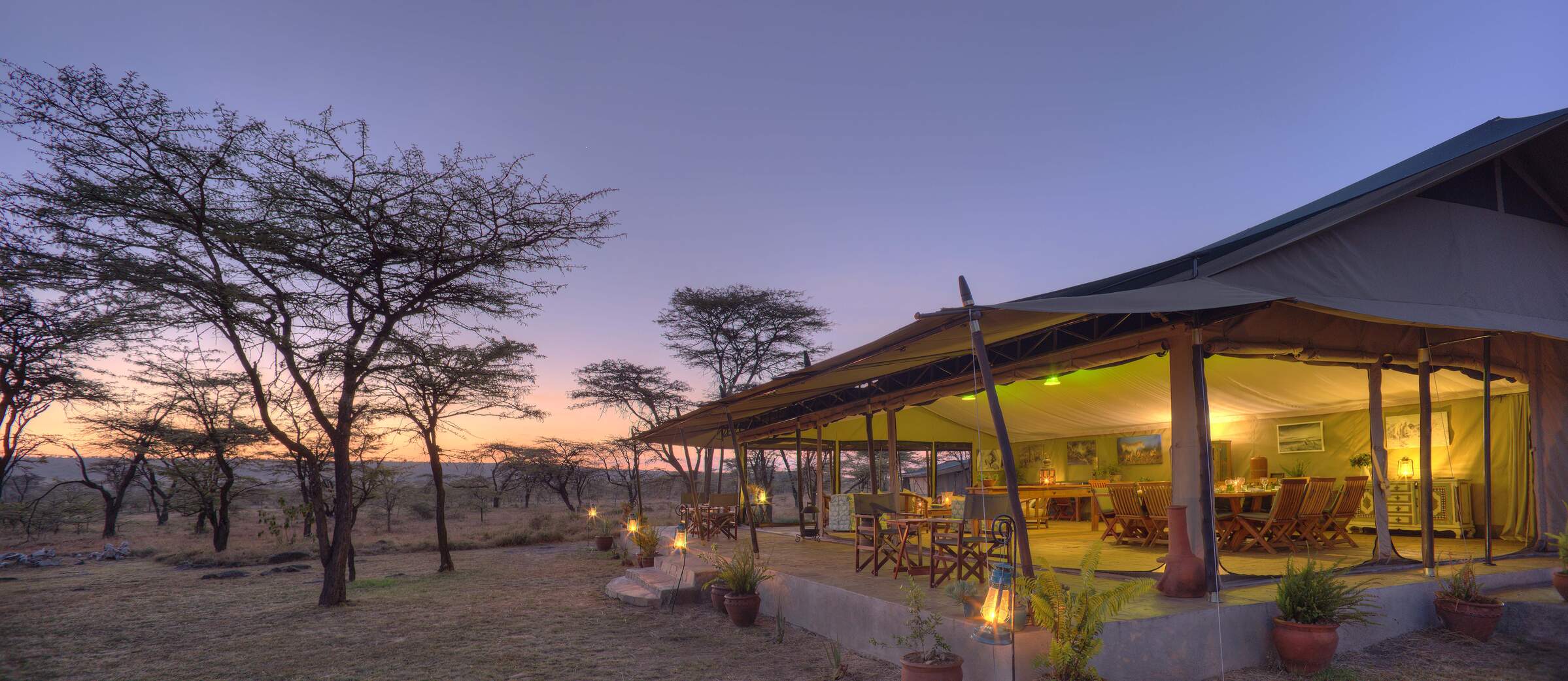
Kicheche Bush Camp
Kicheche Bush Camp is a smart and intimate tented camp with a relaxed atmosphere and the perfect base in the Mara for keen photographers.
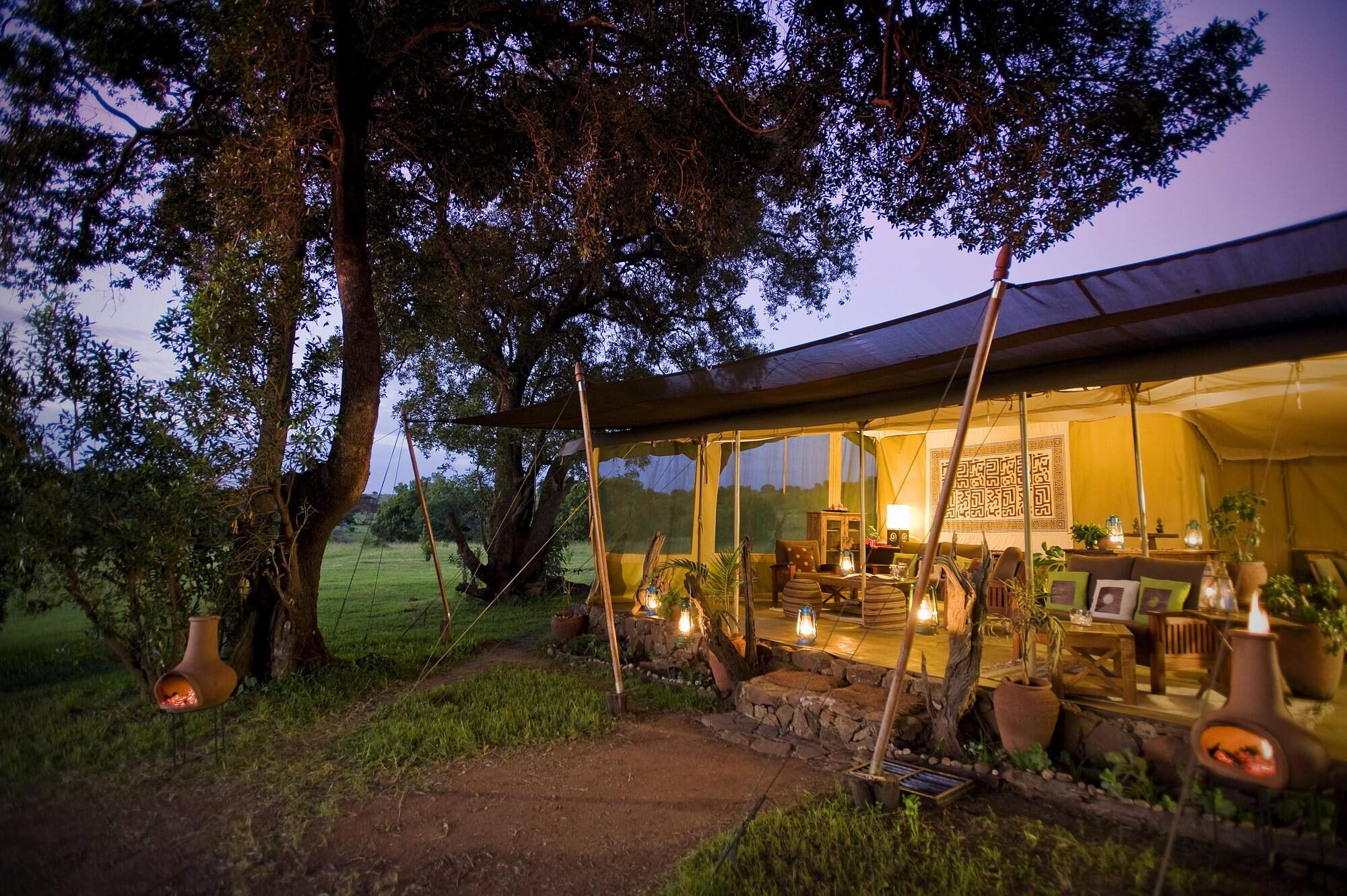
Kicheche Mara
Kicheche Mara Camp has just ten tents and a rustic and comfortable feel. It is set by a stream in a pretty area of the Mara ecosystem's Mara North Conservancy.
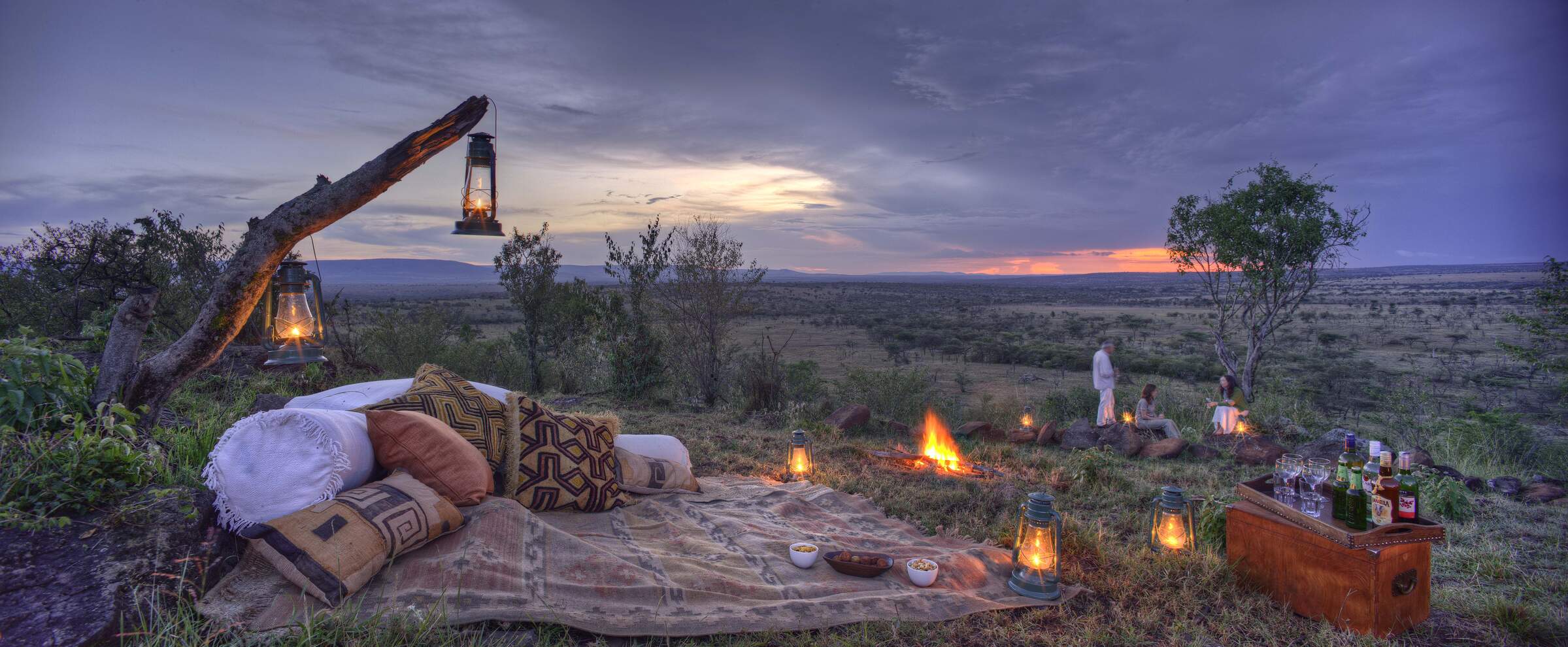
Kicheche Valley
Kicheche Valley is a boutique tented camp in a wooded district of the Mara ecosystem's Naboisho Conservancy, with plenty of wildlife in the area.
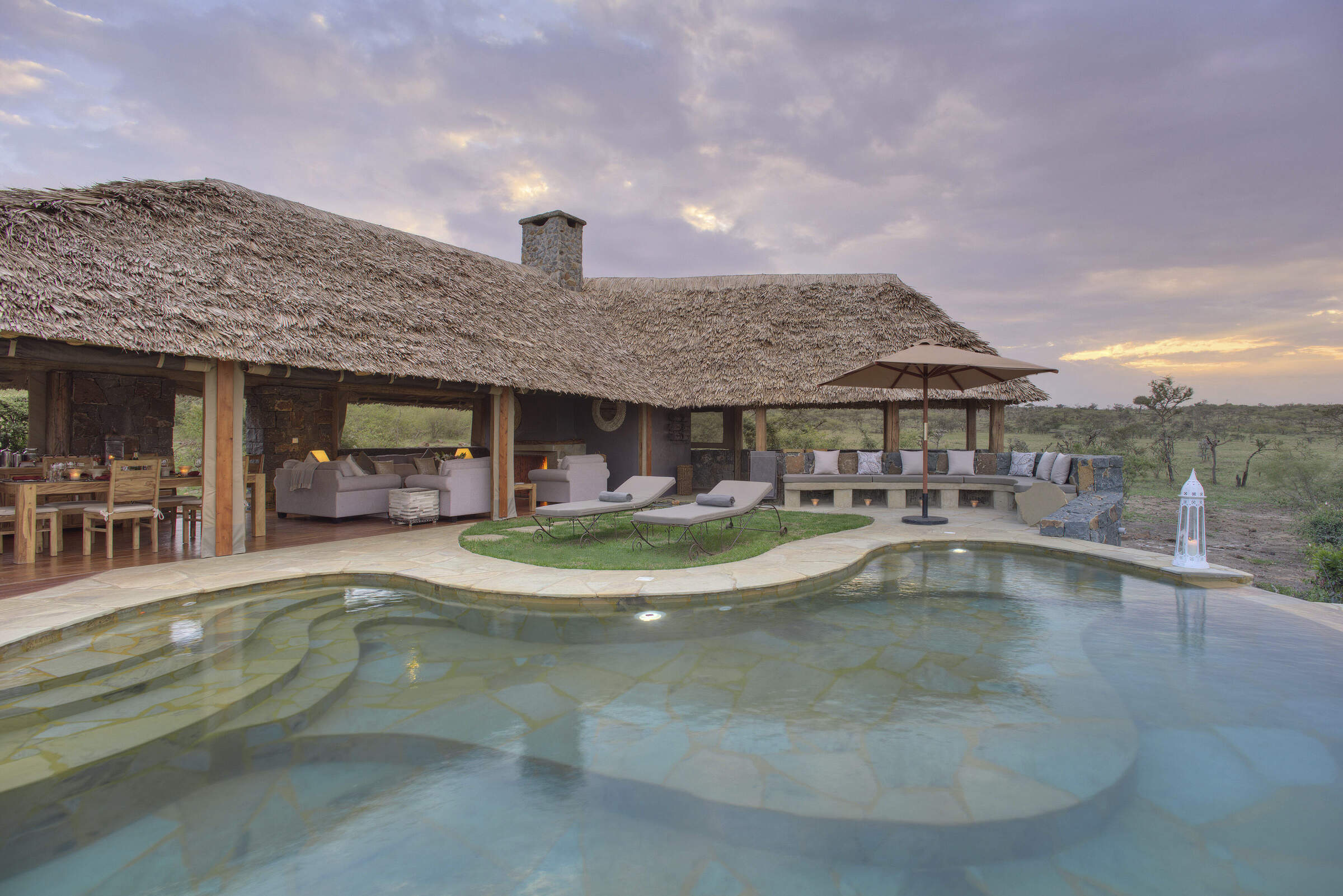
Naboisho Camp
Naboisho Camp is one of the most luxurious of the handful of camps in the Naboisho Conservancy. It offers day and night game drives, game walks and full creature comforts in the bush.
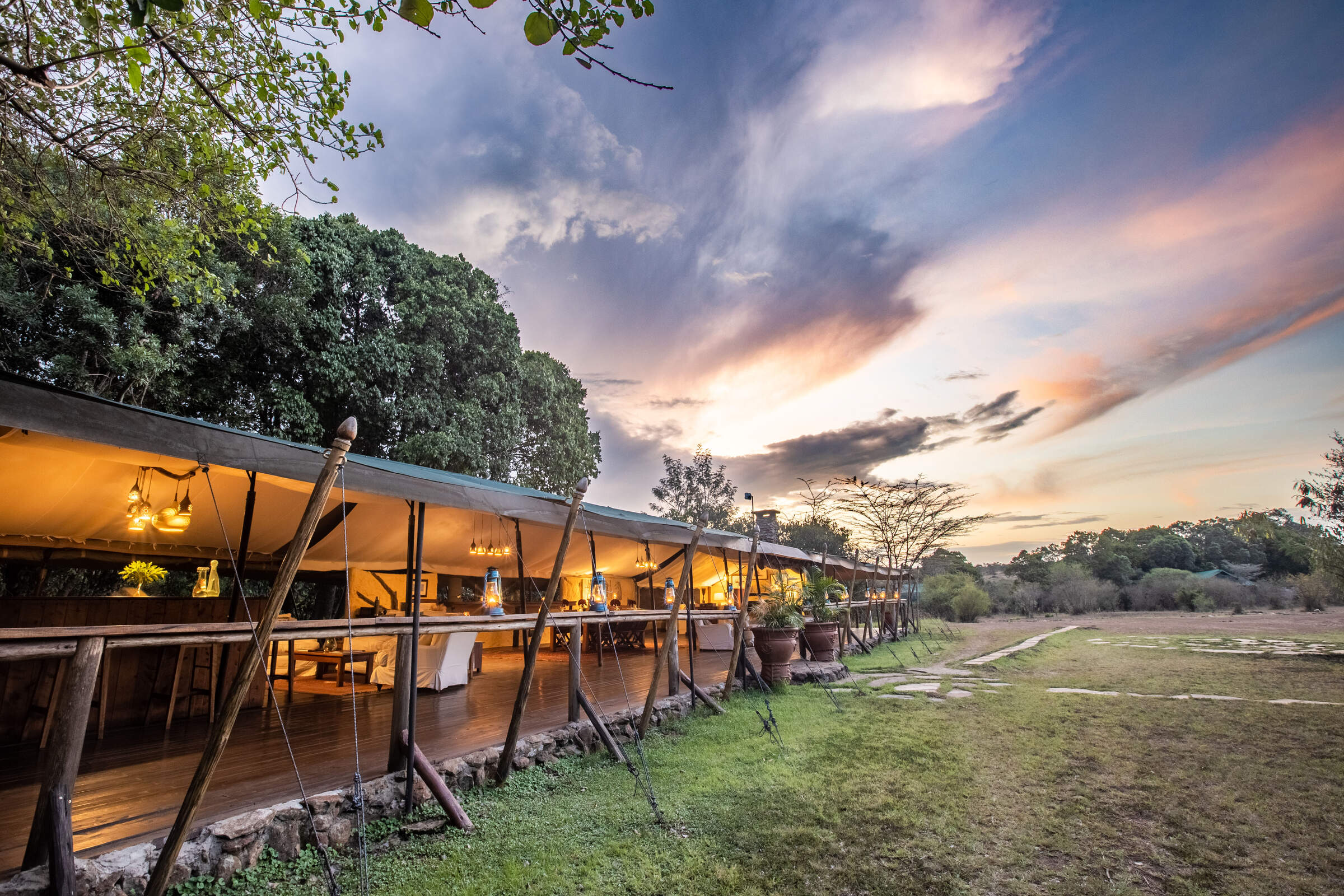
Offbeat Mara
Offbeat Mara is a small traditional camp that appeals to safari traditionalists, located in one of the Maasai Mara’s quiet conservancies.

Encounter Mara
Encounter Mara is located in the private Naboisho Conservancy – a game-rich area of the Mara ecosystem – and offers a contemporary take on the traditional, low-impact luxury safari camp.
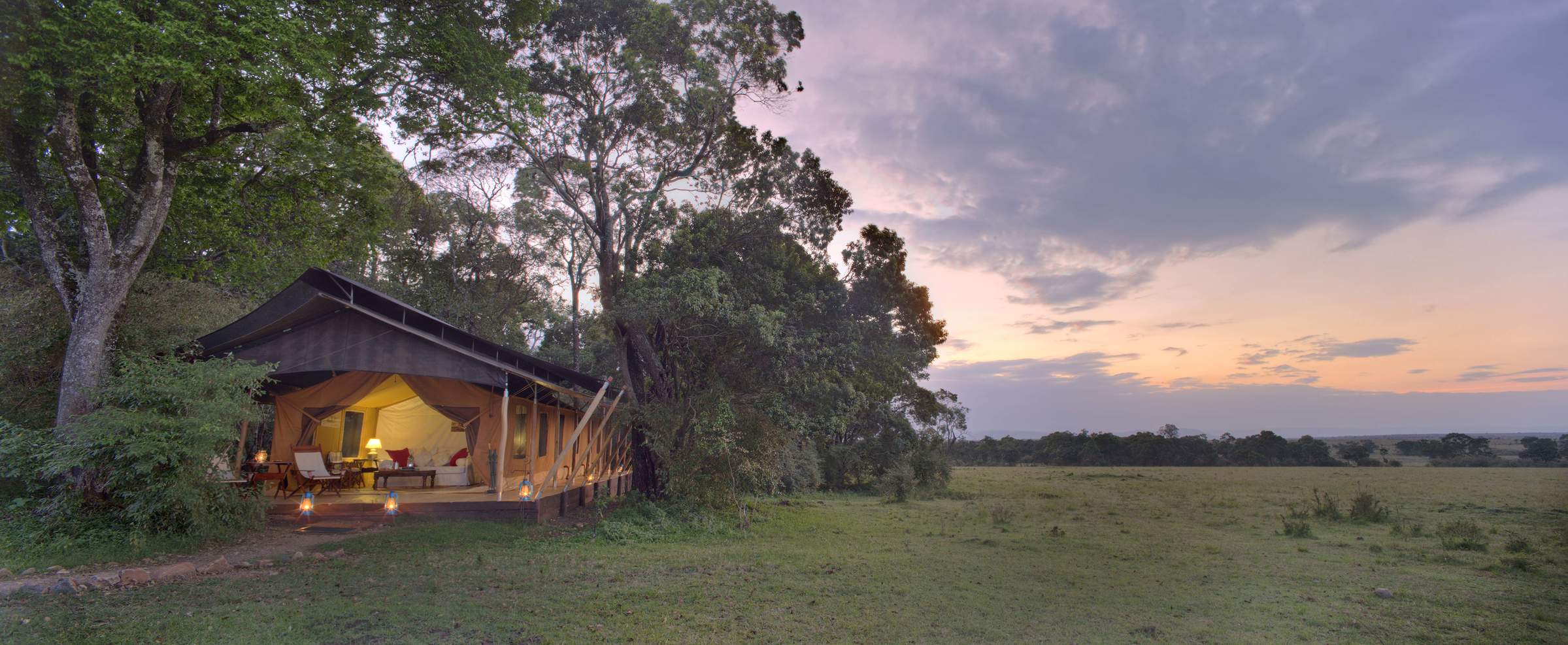
Elephant Pepper Camp
Elephant Pepper Camp is a small 10-tent bush camp, put together in the traditional "campaign" style, and including a large honeymoon/family tent.
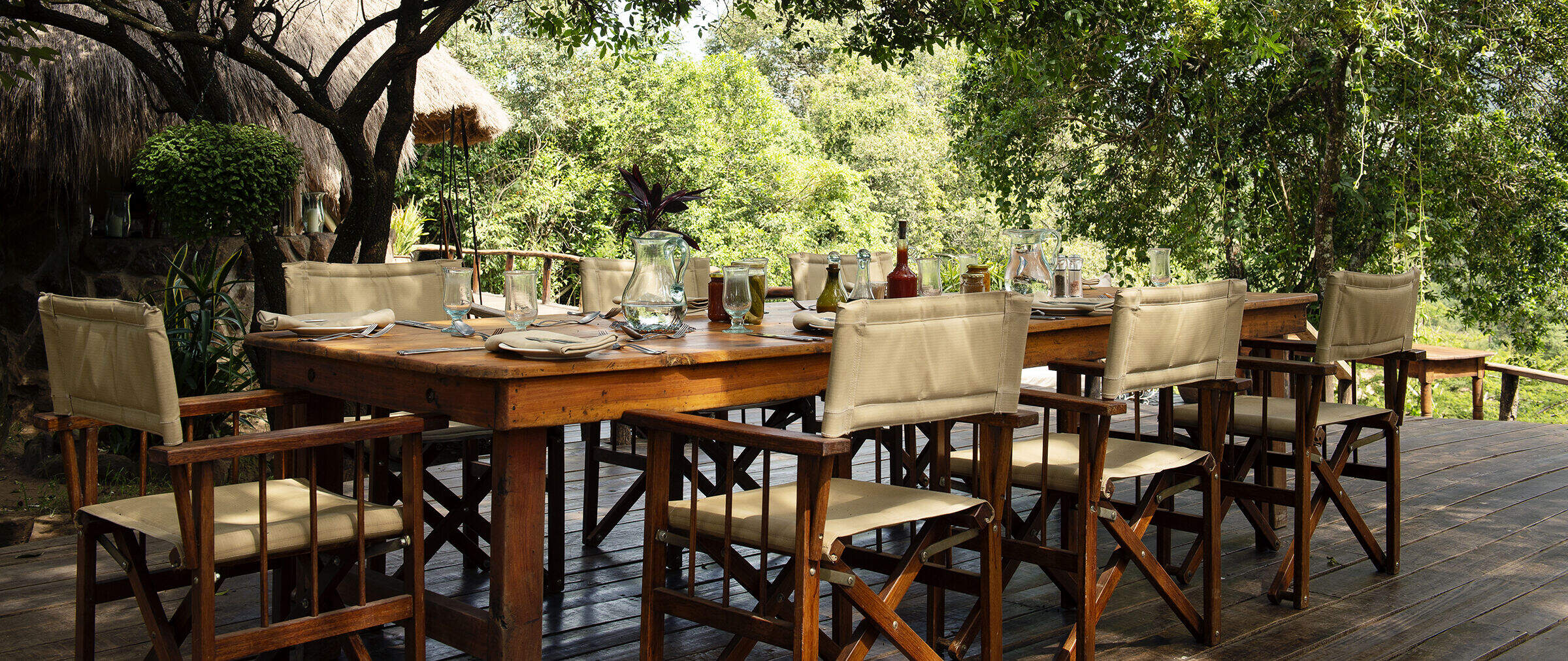
Serian
Serian is a luxury tented camp on the east bank of the Mara River in the Mara North Conservancy. It is the sister camp of Ngare Serian, on the west bank.
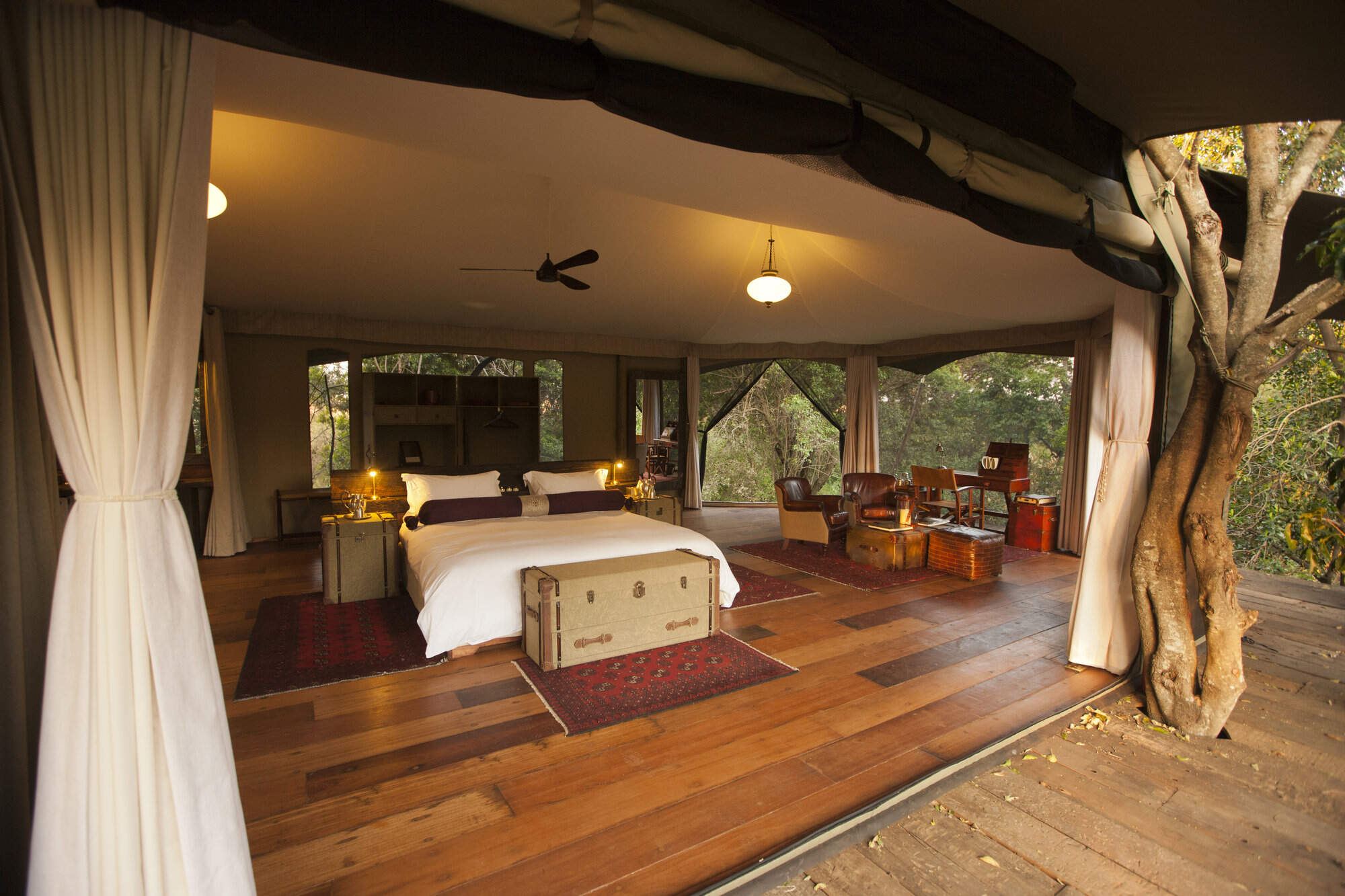
Mara Plains Camp
Mara Plains is one of the very best camps in the Mara ecosystem. Located in the Olare Motorogi Conservancy, just outside the Mara reserve, it has access to three wildlife-viewing areas.
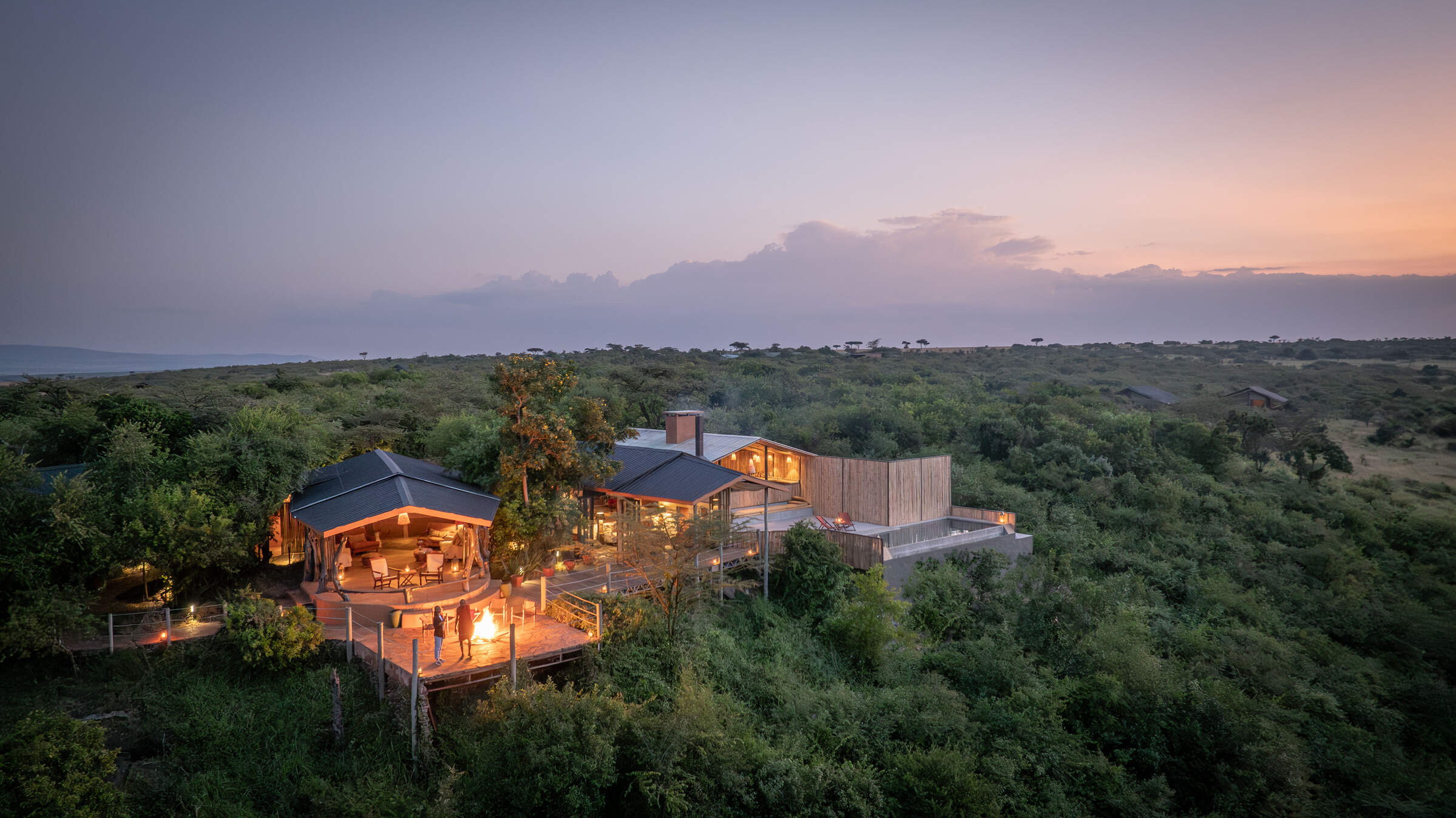
Basecamp Eagle View
Basecamp Eagle View is a community-focused safari camp in the Naboisho Conservancy, with a strong emphasis on responsible tourism and a spectacular location.
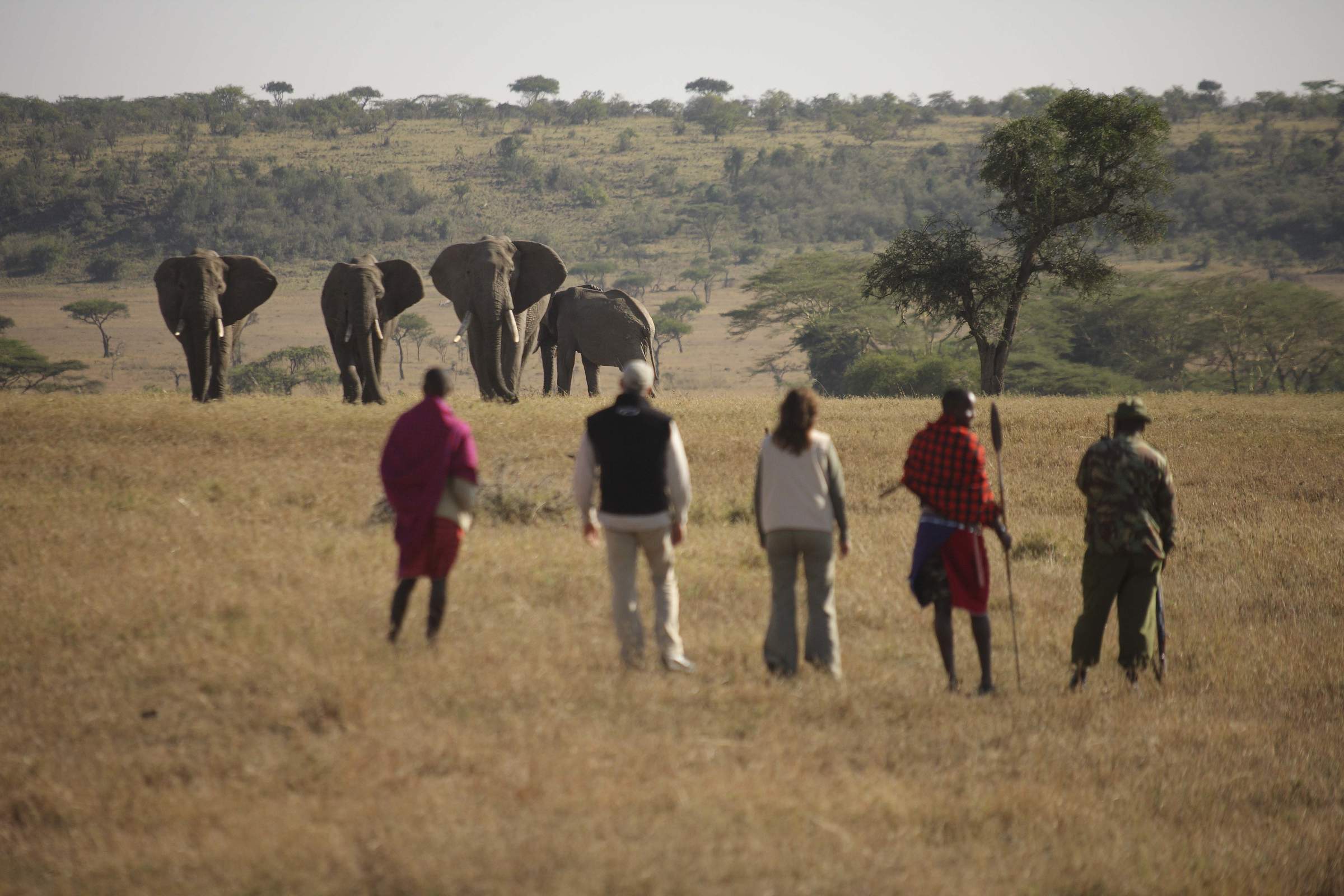
Kicheche Fly Camp
Kicheche Walking Wilderness Fly Camp is a temporaray dome tent camp set up for participants in Kicheche's two-day walking safari between Kicheche Valley and Kicheche Bush Camp.
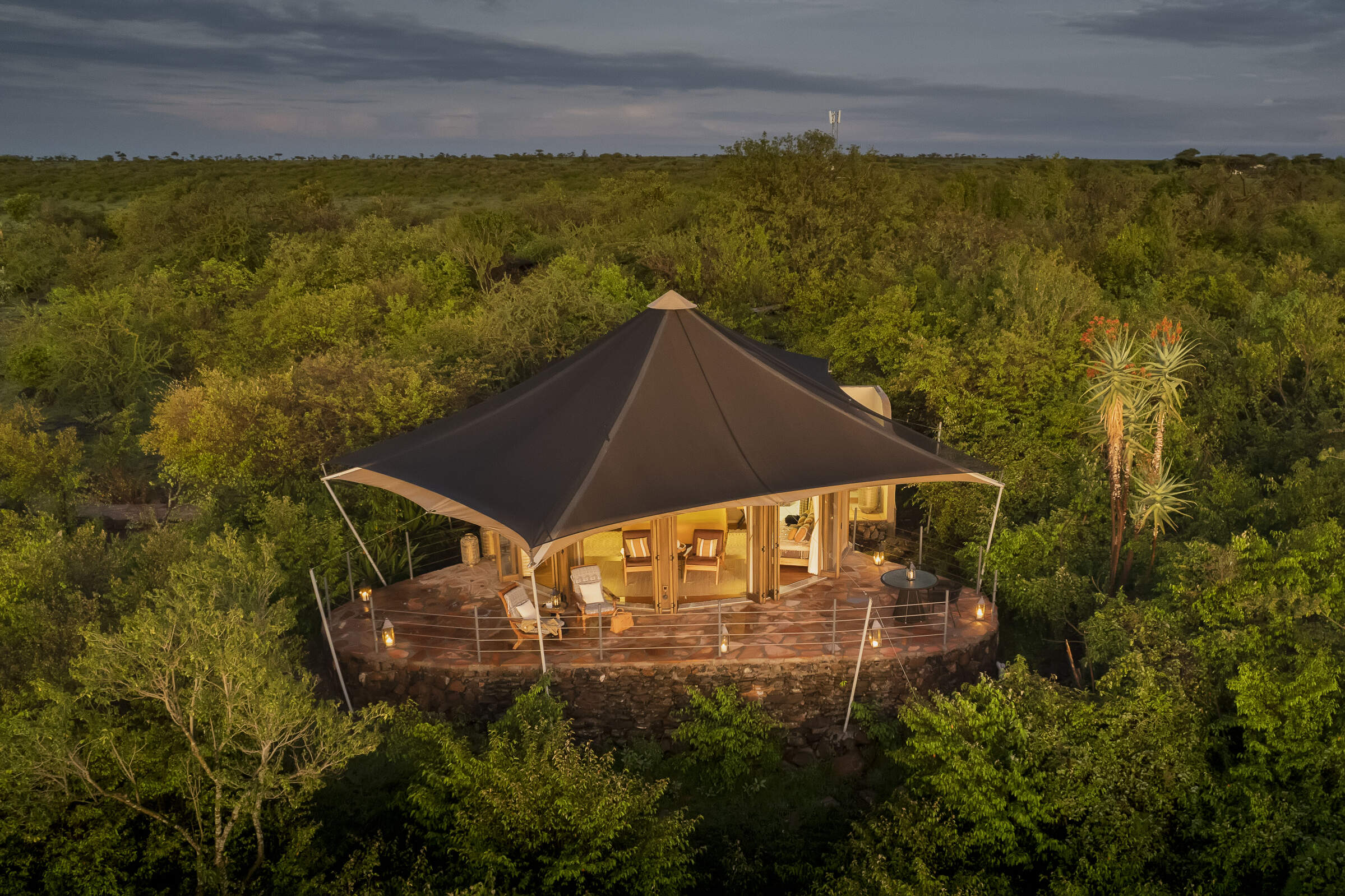
Hemingways Ol Seki
Magnificently located tented lodge on a bluff looking south across the Naboisho Conservancy toward the Maasai Mara National Reserve.
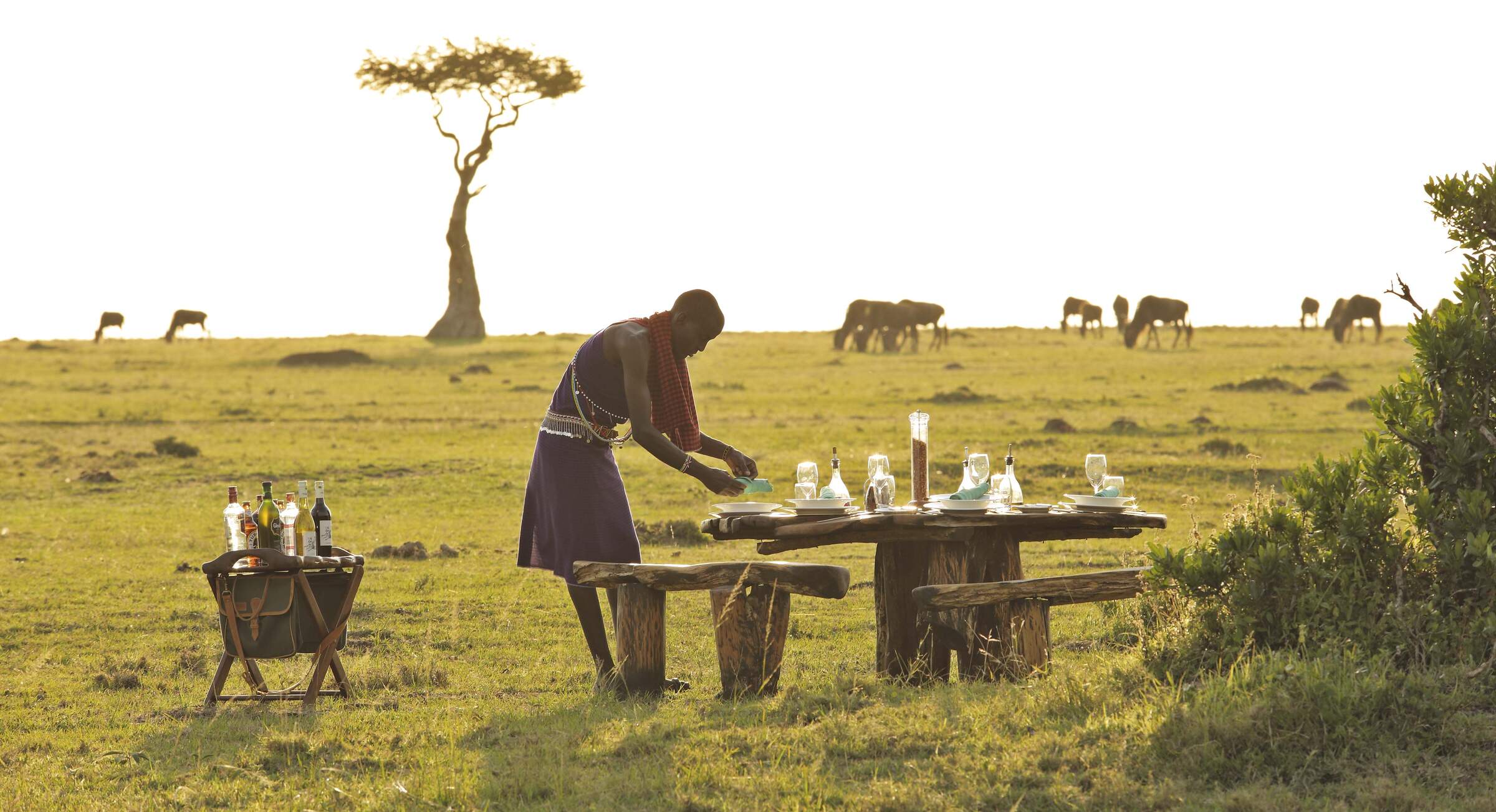
Saruni Wild
Saruni Wild is a rustic and traditional safari camp in the Lemek Conservancy, with just three tents and limited electricity.
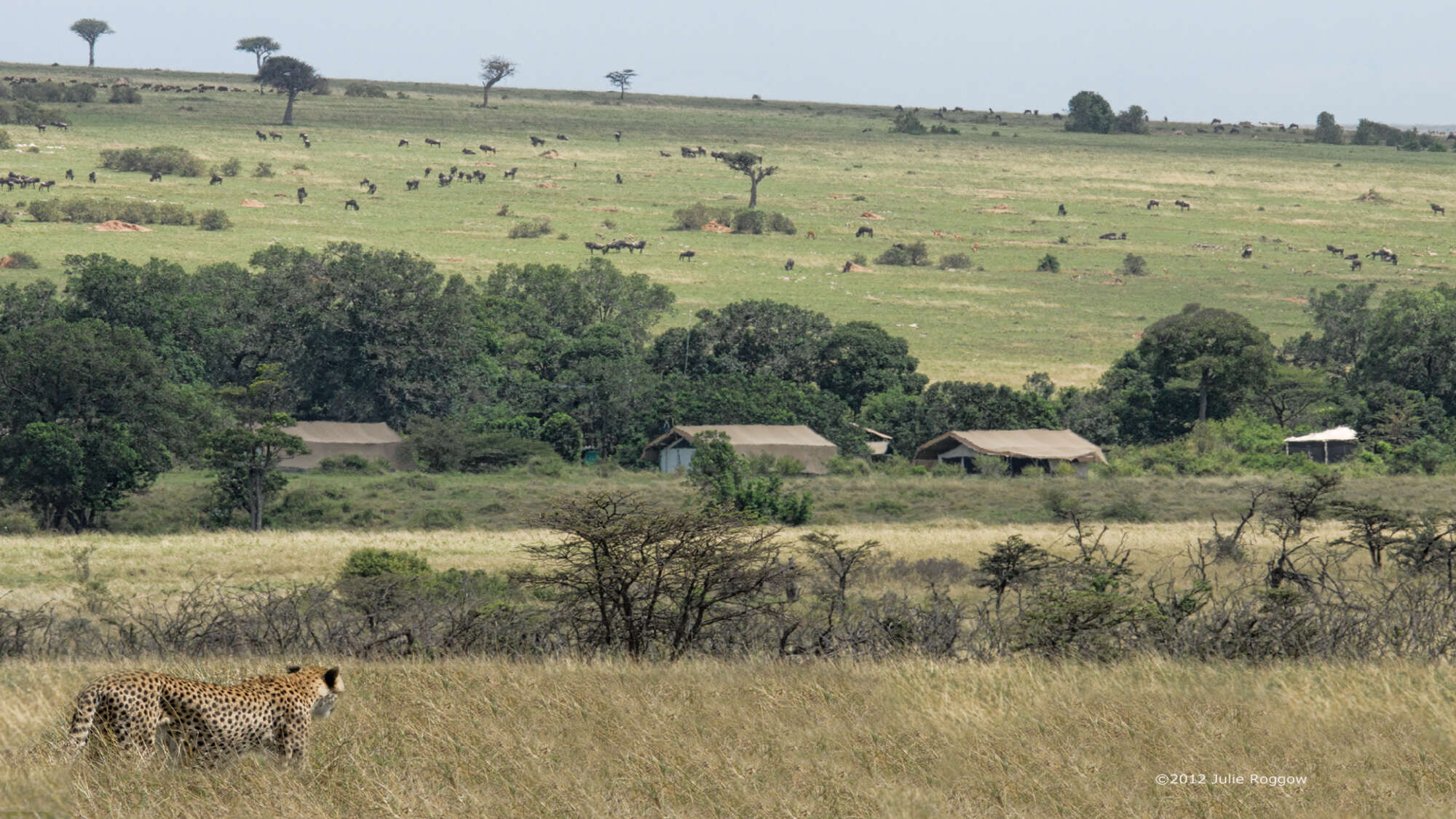
Porini Lion Camp
Porini Lion Camp is a pioneering, community focused eco-camp, with excellent guides and game viewing, in the predator-rich, Olare Motorogi Conservancy.
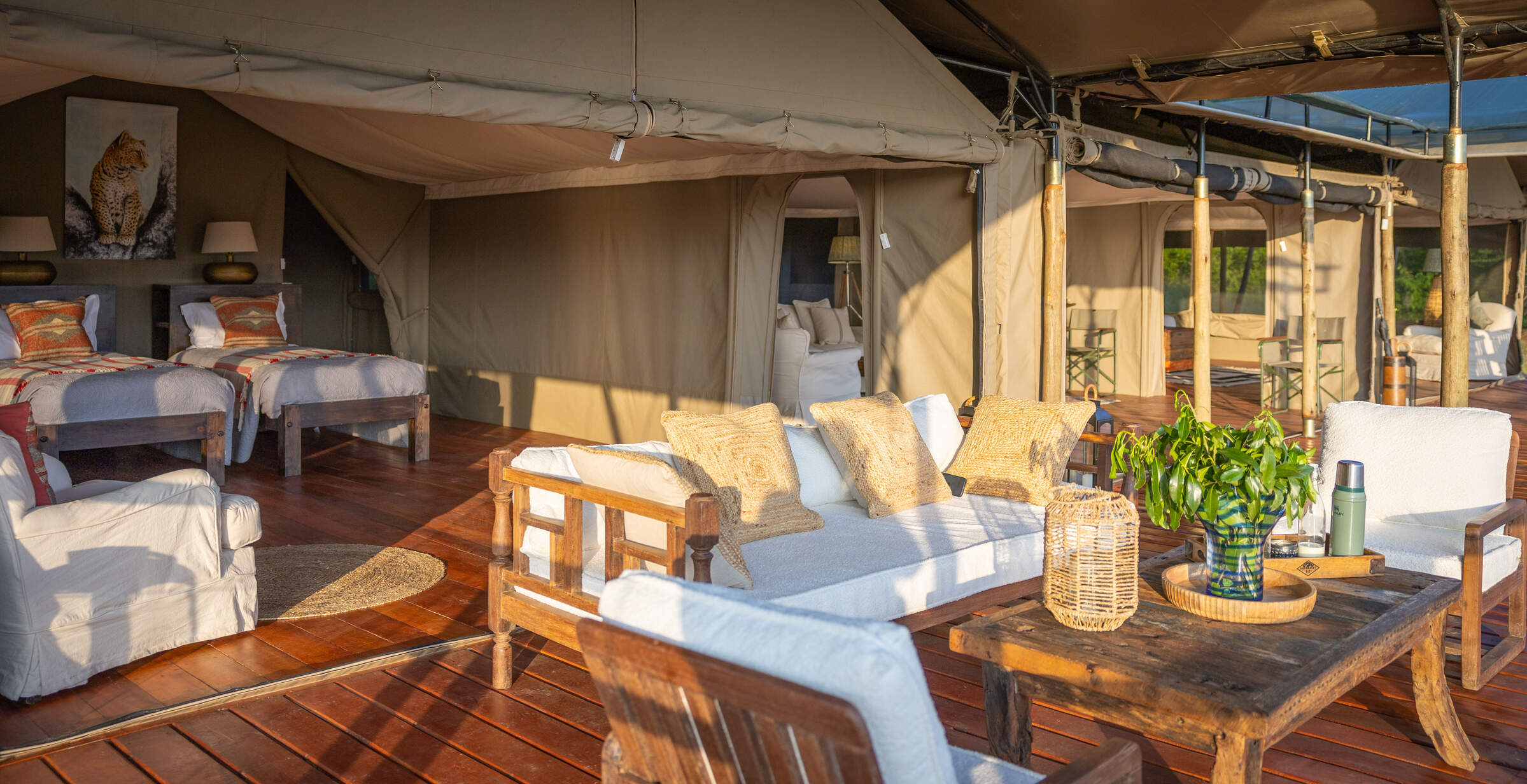
Offbeat Ndoto
Small and intimate, Offbeat Mara is set in a valley above the (often dry) Olare Orok River within the Mara North Conservancy.
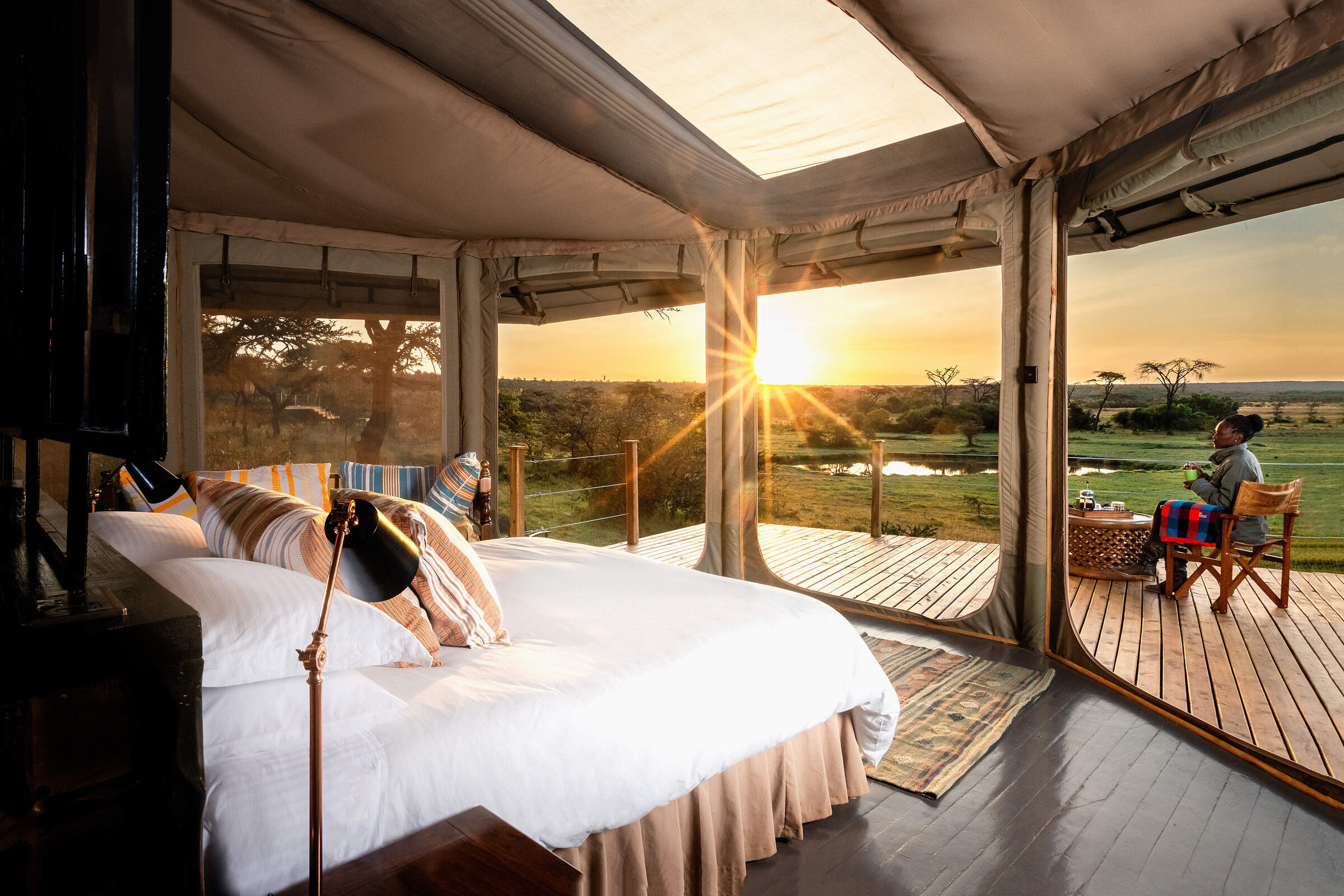
Basecamp Leopard Hill
With six beautiful tents, Basecamp Leopard Hill is a smart safari camp in the Naboisho Conservancy in the Maasai Mara ecosystem.
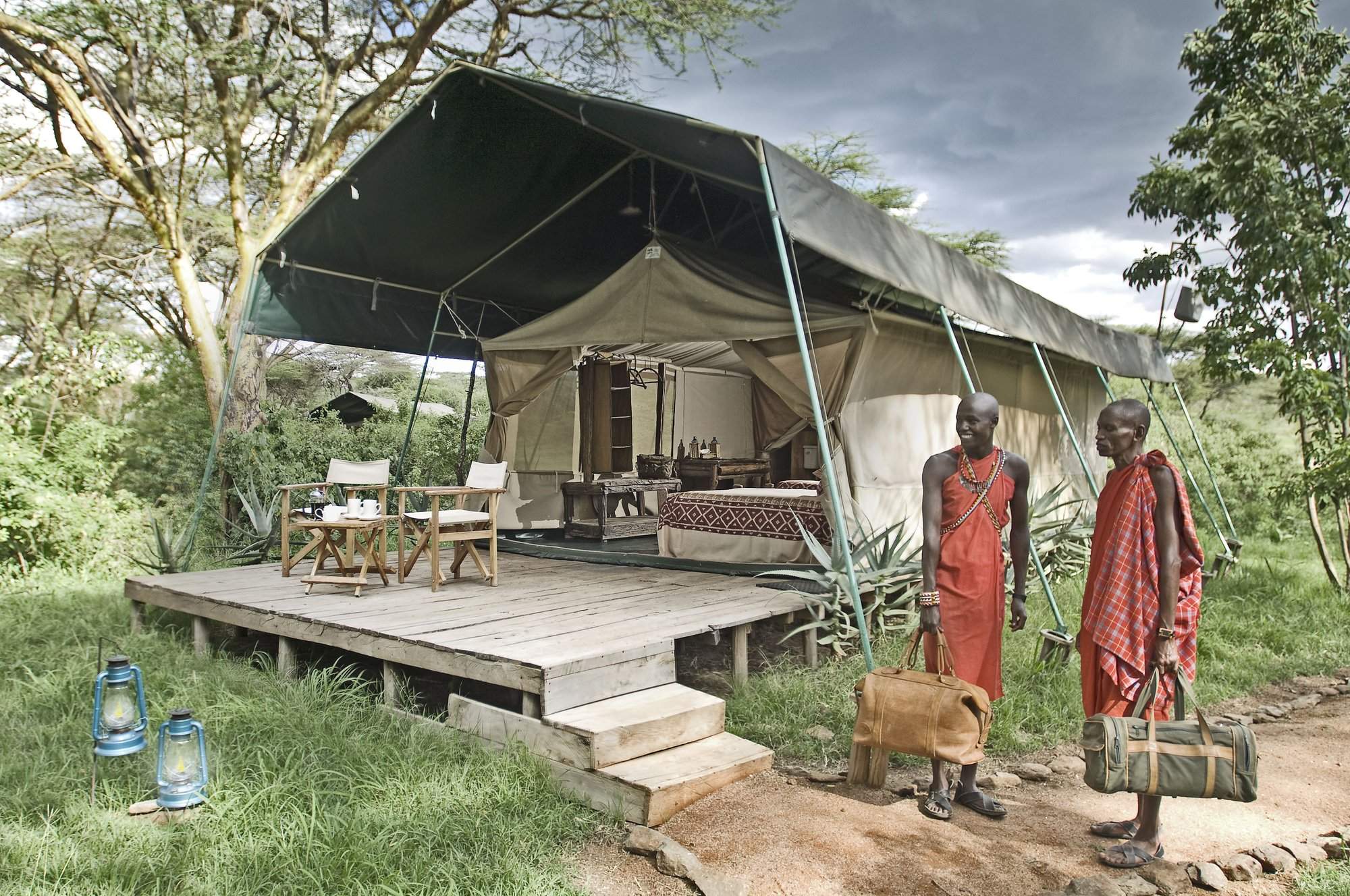
Porini Mara Camp
Porini Mara Camp is a small, pioneering eco-camp in the first private conservancy in the Mara region, with comfortable accommodation and a range of activities.
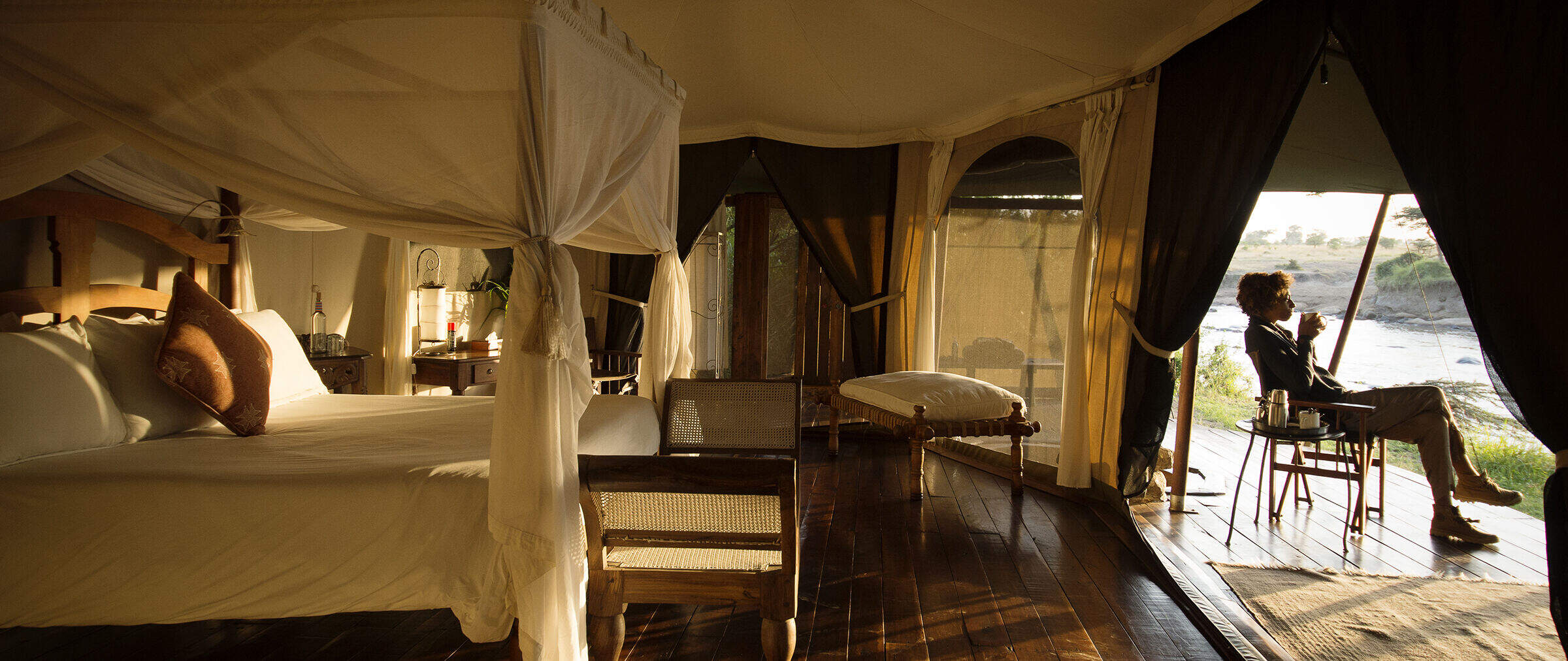
Ngare Serian
The luxurious Ngare Serian and its sister camp Serian face each other across the Mara River on the western side of the Mara North Conservancy

Karen Blixen Camp
Karen Blixen Camp sits on a meander of the Mara River in the Mara North Conservancy, just beyond the northern boundary of the Maasai Mara National Reserve.
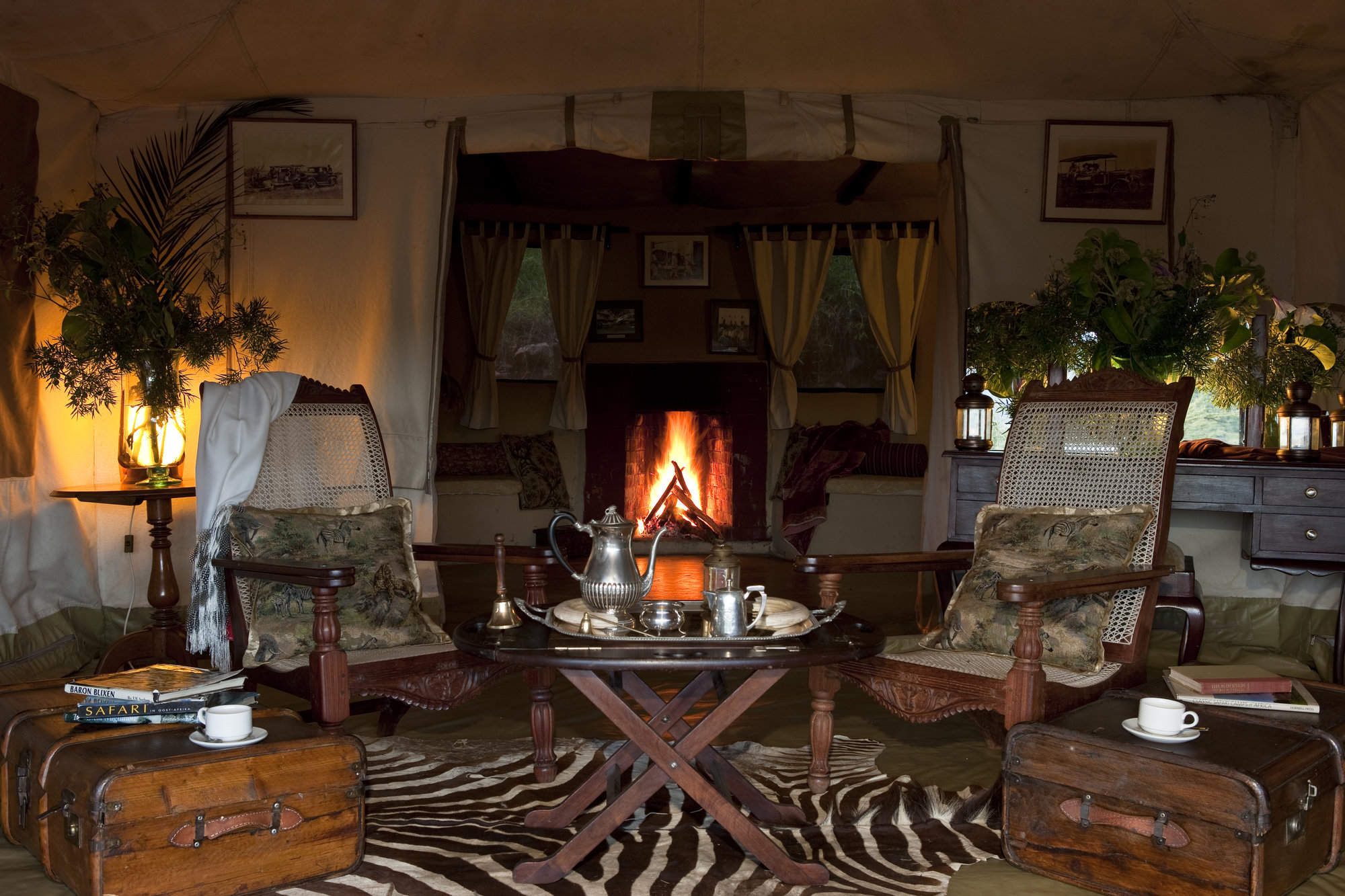
Cottars 1920s Camp
Cottar's 1920s Camp is a classic, luxury tented camp with a 1920s safari theme, located in its own conservancy on the southeast border of the Maasai Mara National Reserve.
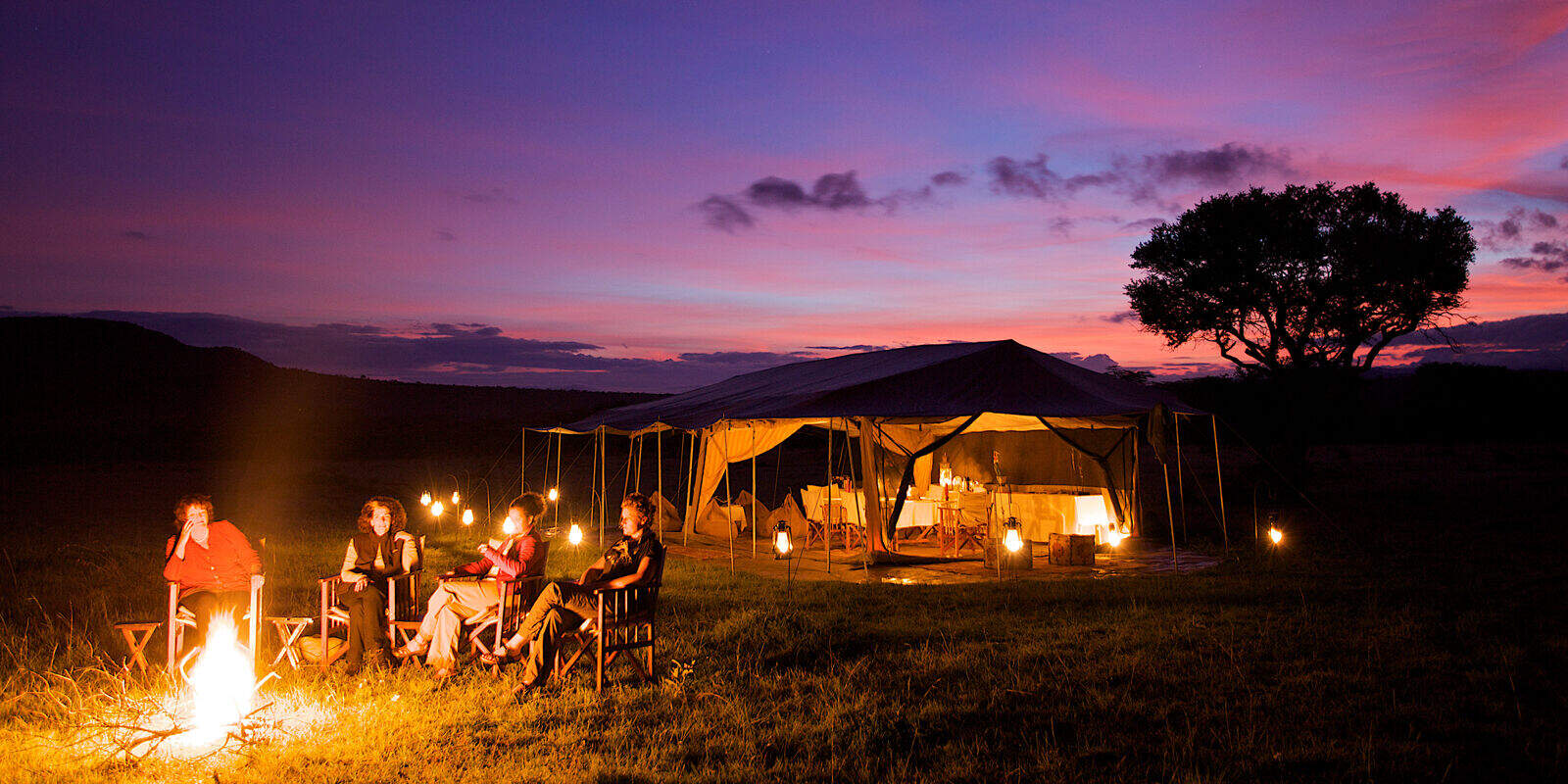
Leleshwa
Leleshwa was a delightful, boutique safari camp on the picturesque banks of a tributary of the Talek, with an extensive, little visited game area on its doorstep.
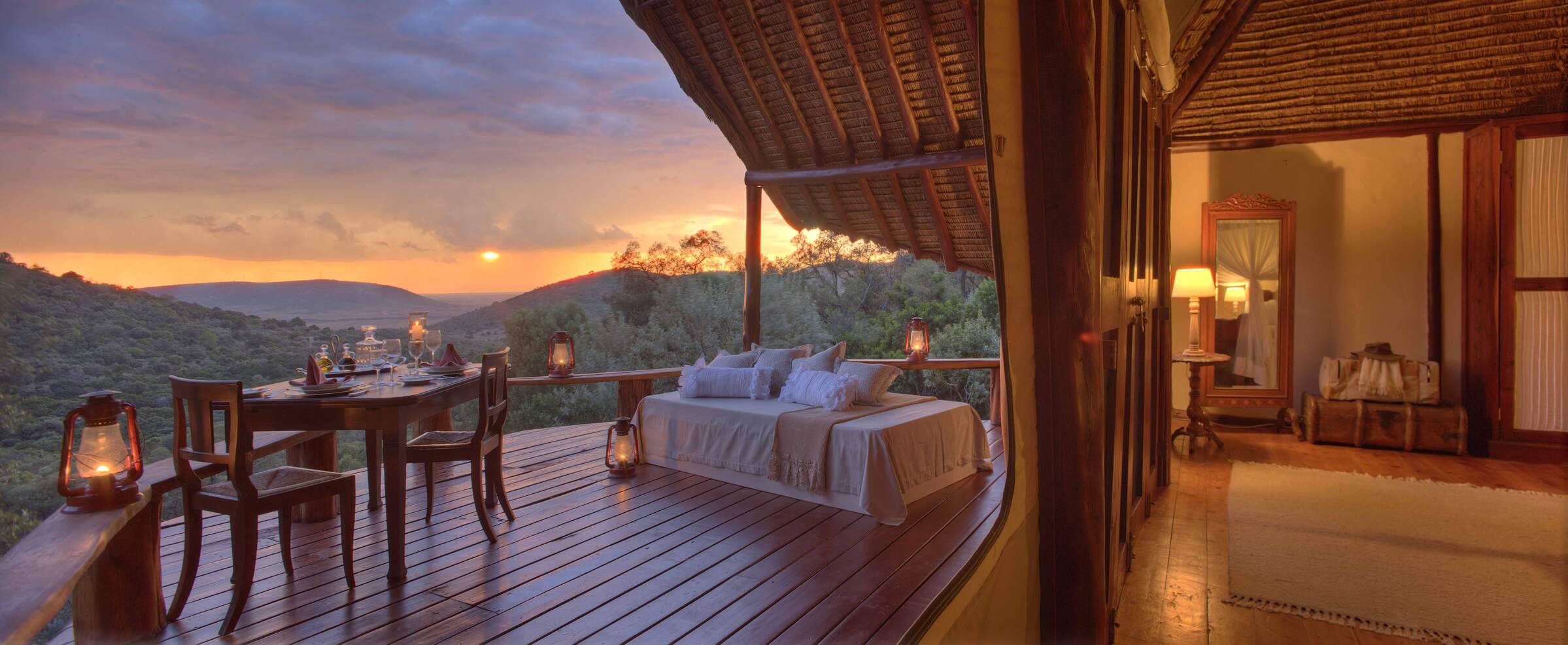
Saruni Mara
Saruni Mara is a luxurious permanent lodge, on the remote northern edge of the Mara North Conservancy, with stunning views, good guiding and very private and comfortable rooms.
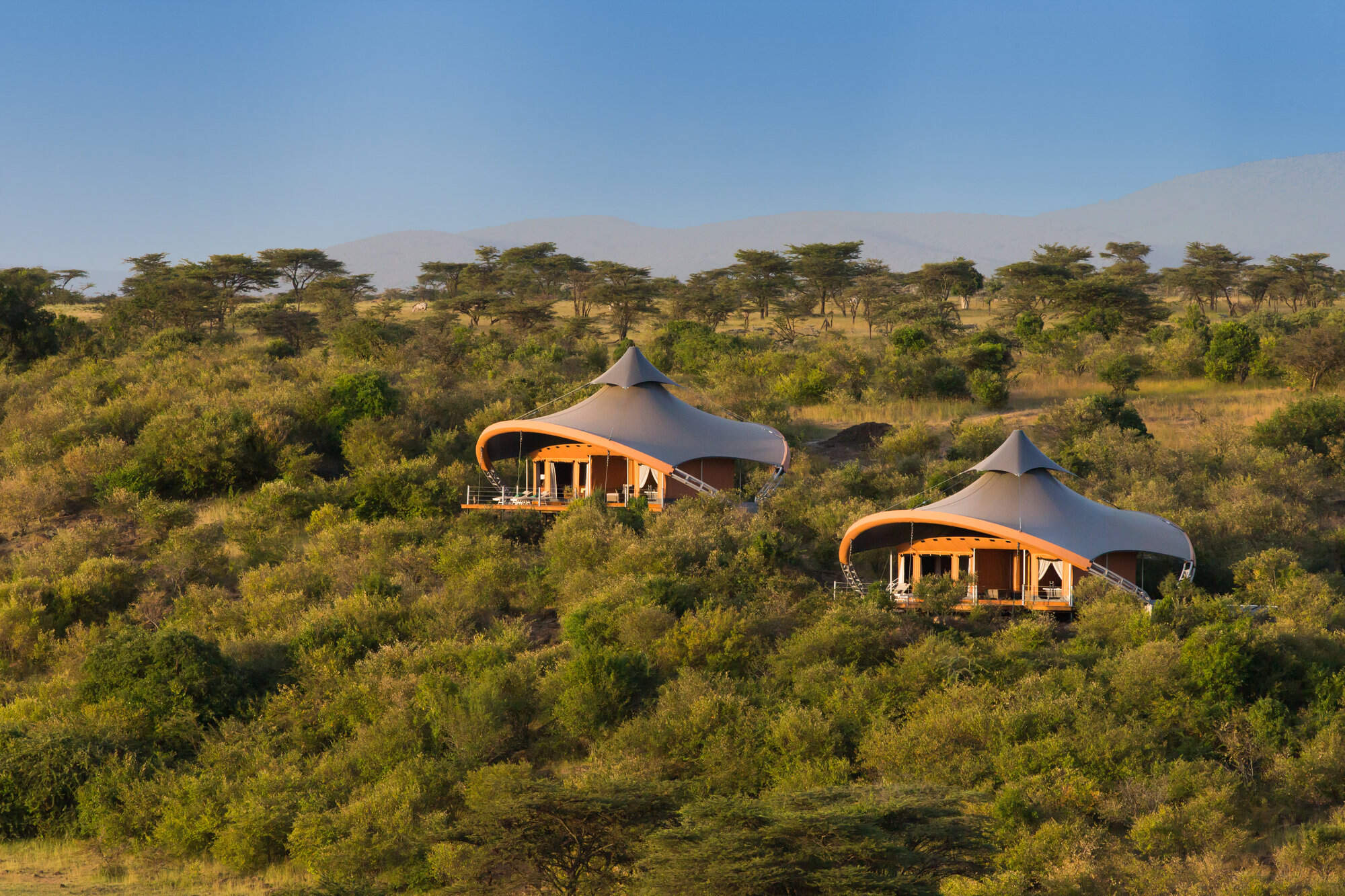
Mahali Mzuri
Mahali Mzuri is a strikingly modern tented camp in the Virgin Limited Edition group, in a remote part of the Mara ecosytem's Olare Motorogi Conservancy. It has lovely views and all the luxuries of a five-star hotel.
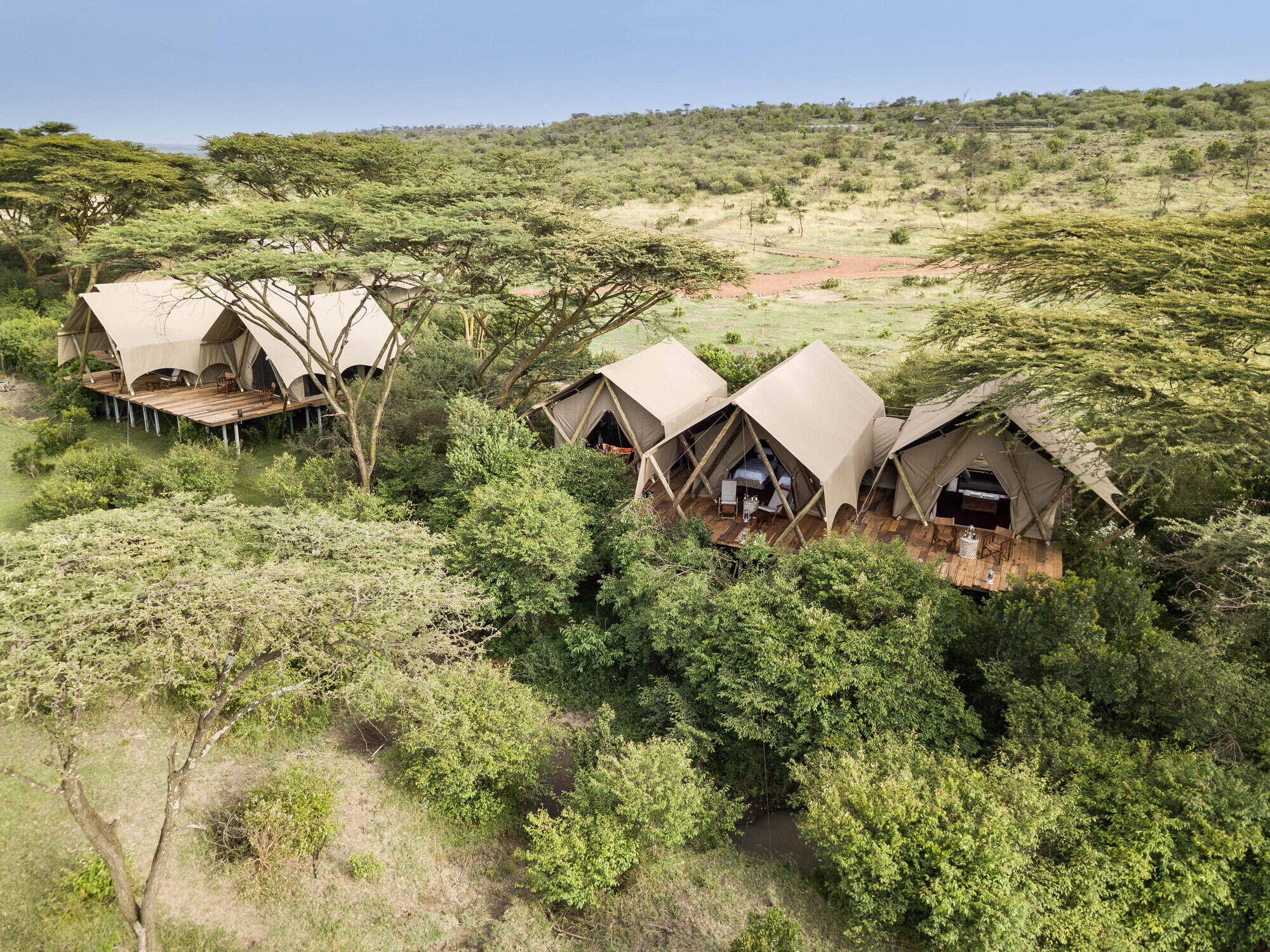
Mara Nyika
Mara Nyika is one of the newer additions to the Naboisho Conservancy and offers a luxurious and exclusive safari.
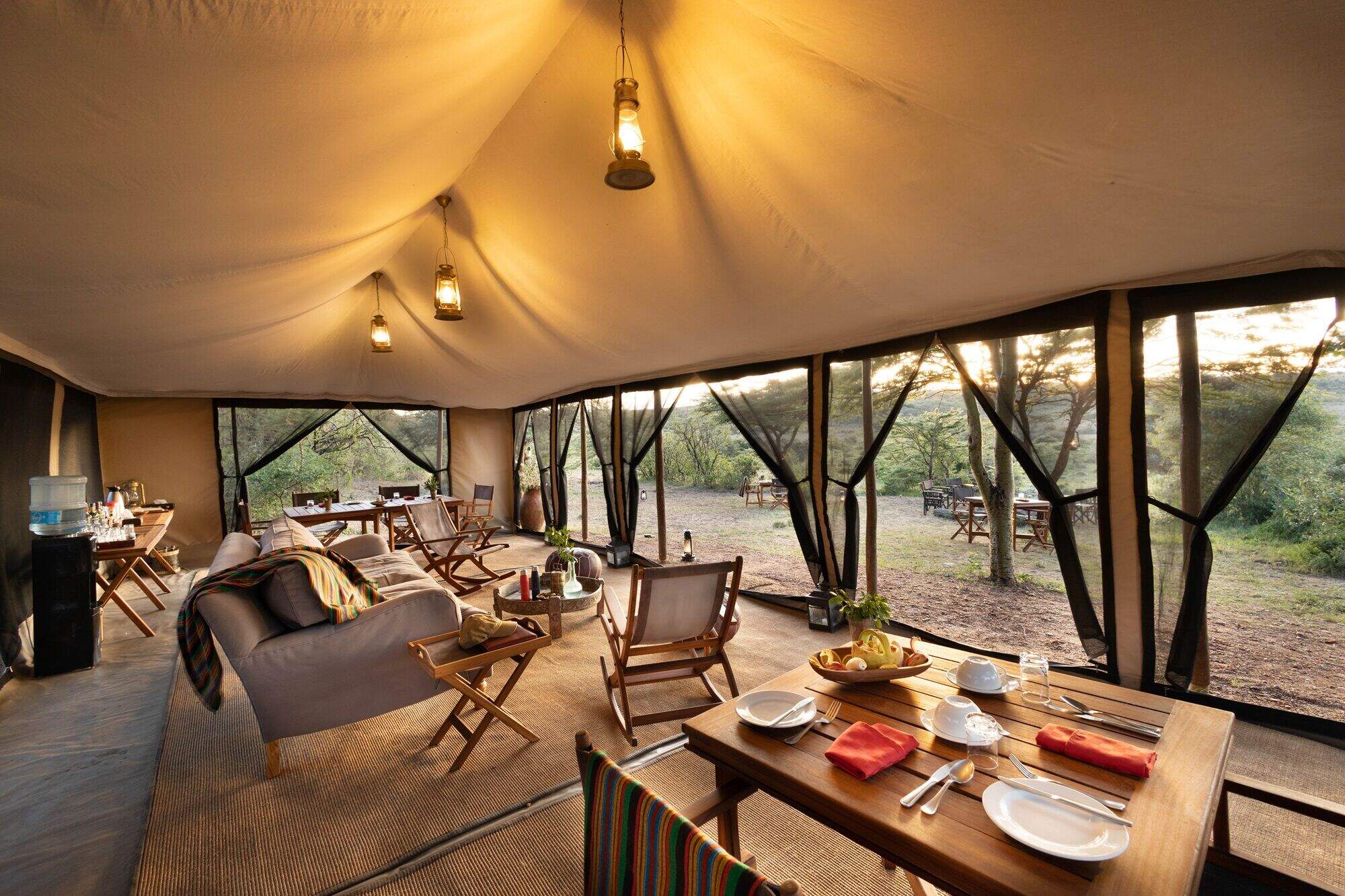
Basecamp Wilderness
Basecamp Wilderness Camp is a simple, traditional tented camp, set in a remote valley in the Naboisho Conservancy in the Mara ecoystem.
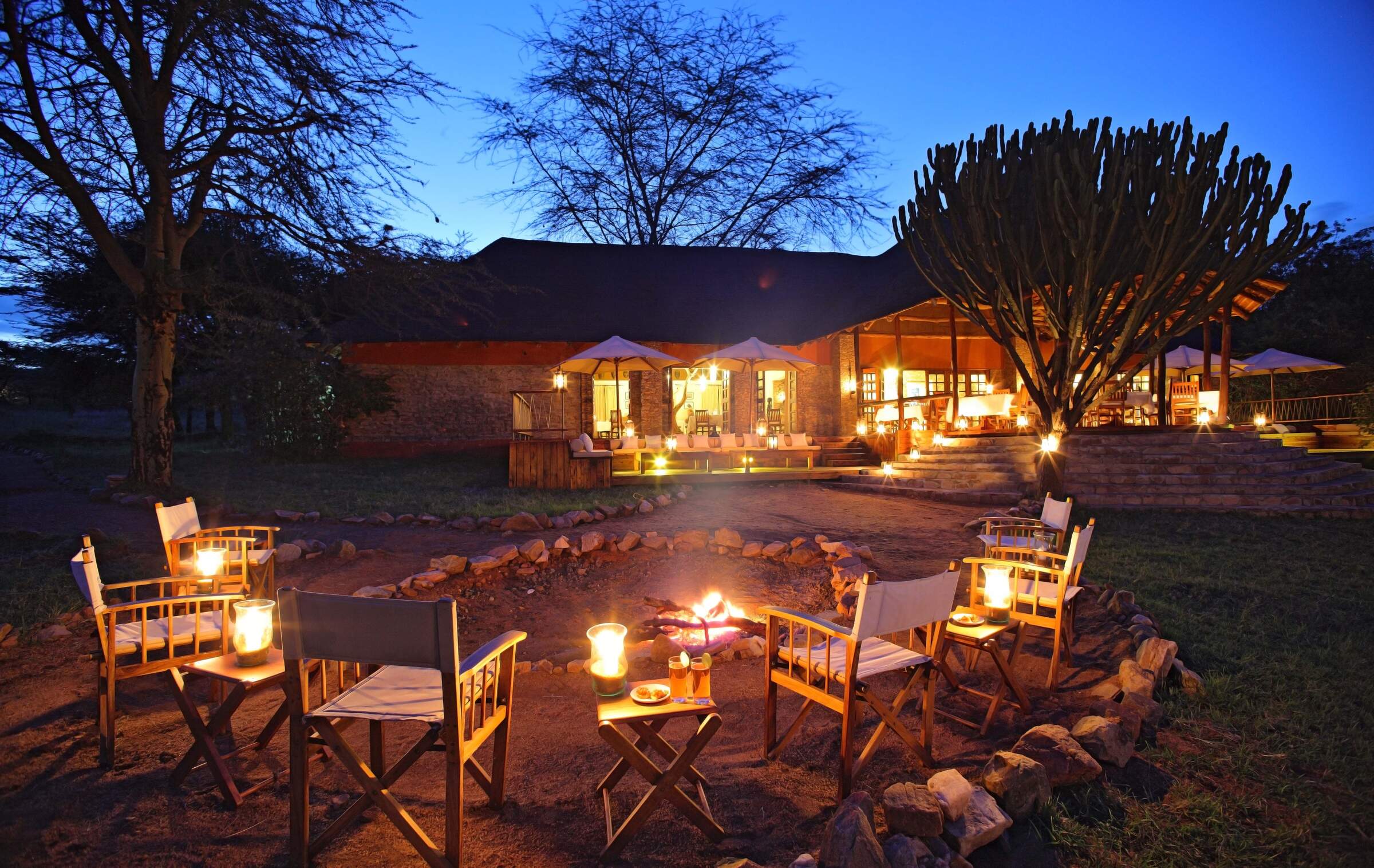
Mara Bushtops
Mara Bushtops is a luxury safari hotel on a private concession, outside the Maasai Mara National Reserve, with the emphasis on comfort, relaxation and good food and wine.
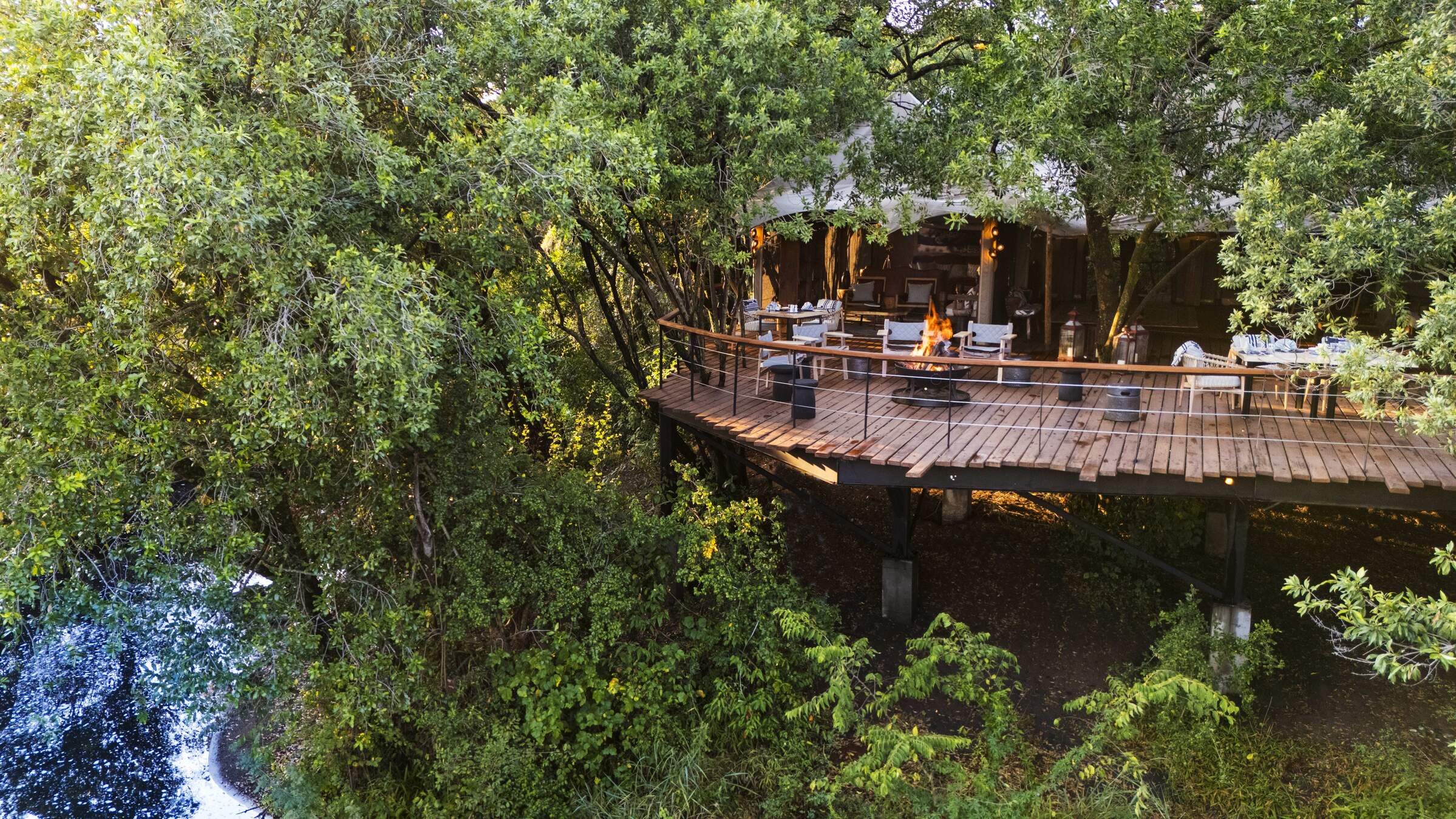
Mara Toto Tree Camp
Mara Toto Tree Camp is located on a wooded bend of the Ntiakatek River, 1km south (as the pied crow flies) from its sister camp, Mara Plains. It's the offspring of the original "Mara Toto" which was swept away in floods.
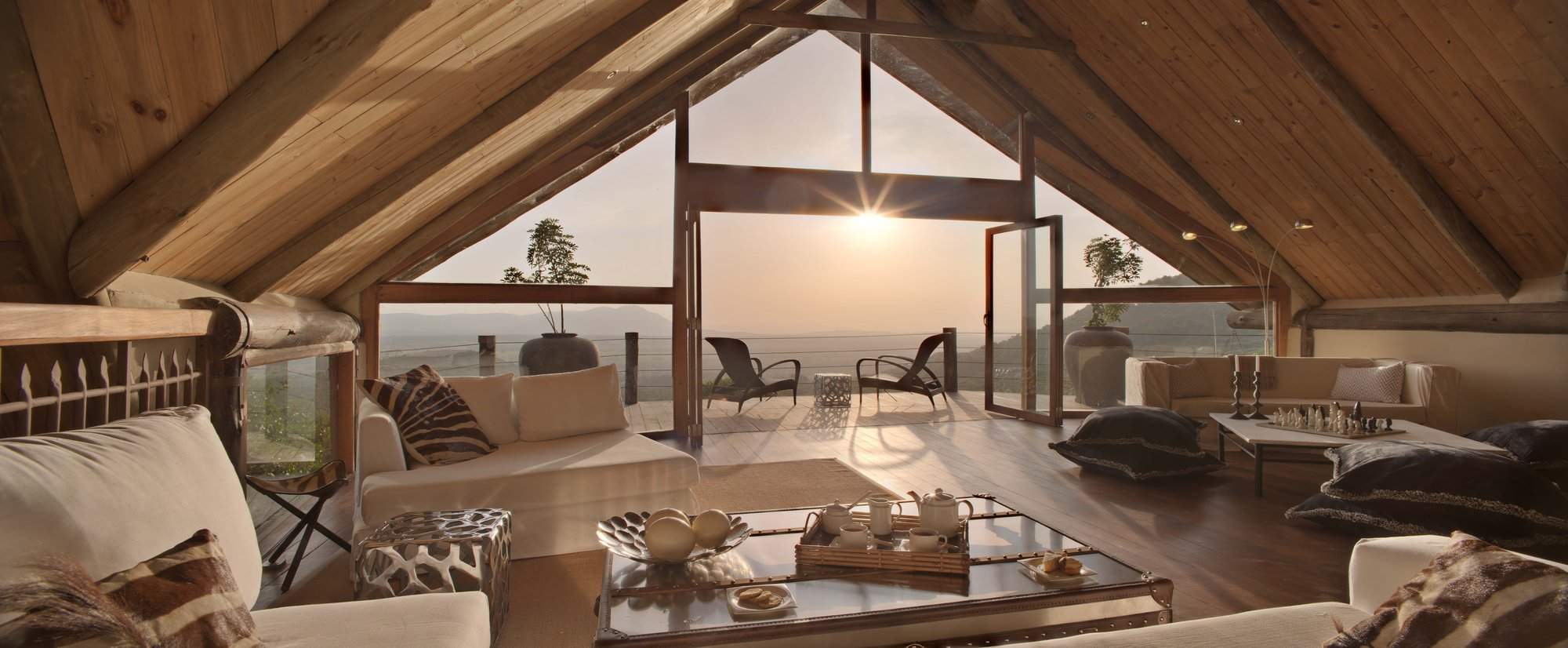
Cottars Private House
Cottar's Private House is one of the few truly luxurious, modern private houses in the Mara ecosystem, spoiling its guests with first-rate staff, a swimming pool and wonderful views.
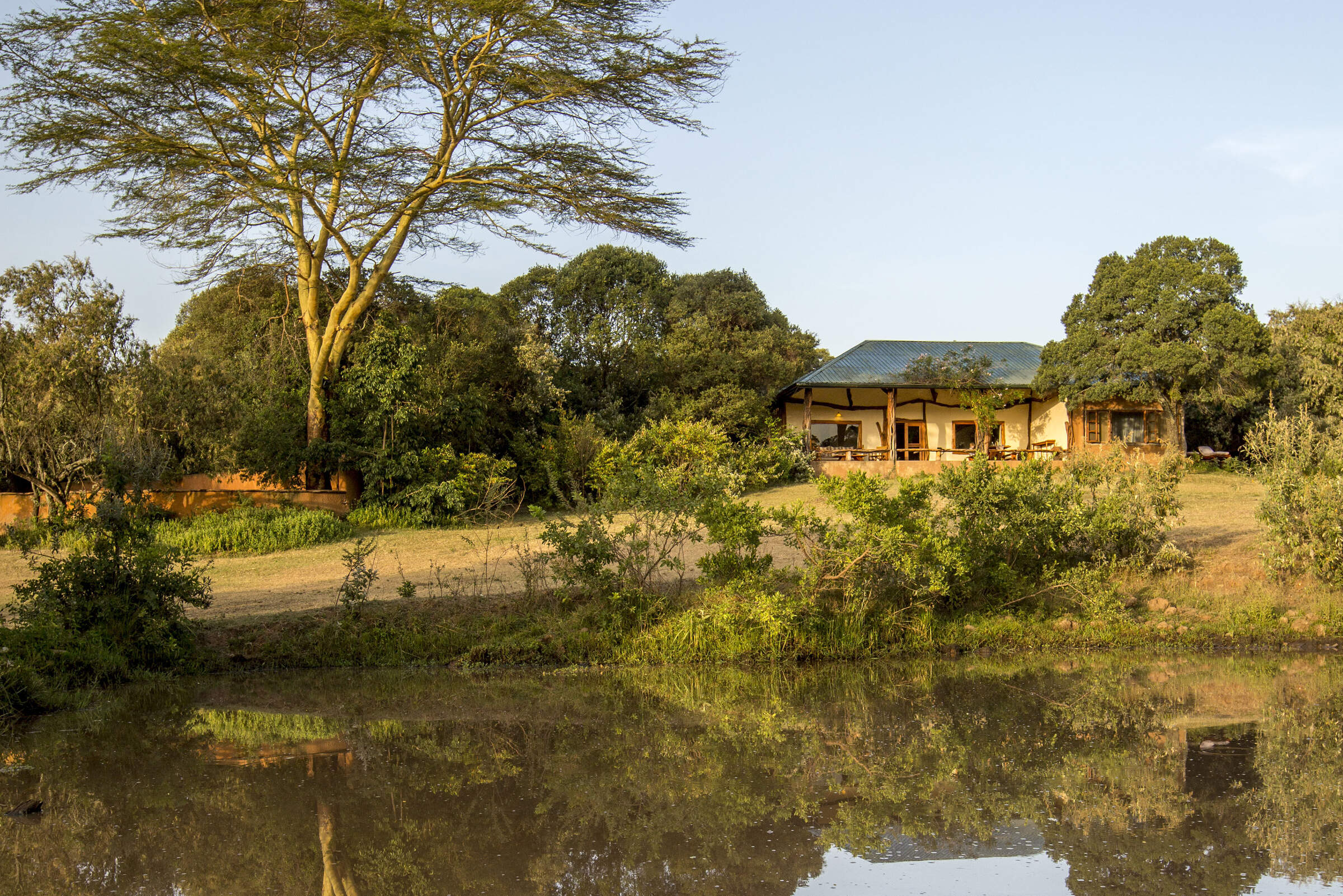
Basecamp Mara Houses
Basecamp Mara Houses consists of three private houses located in the northernmost part of the Mara North Conservancy.
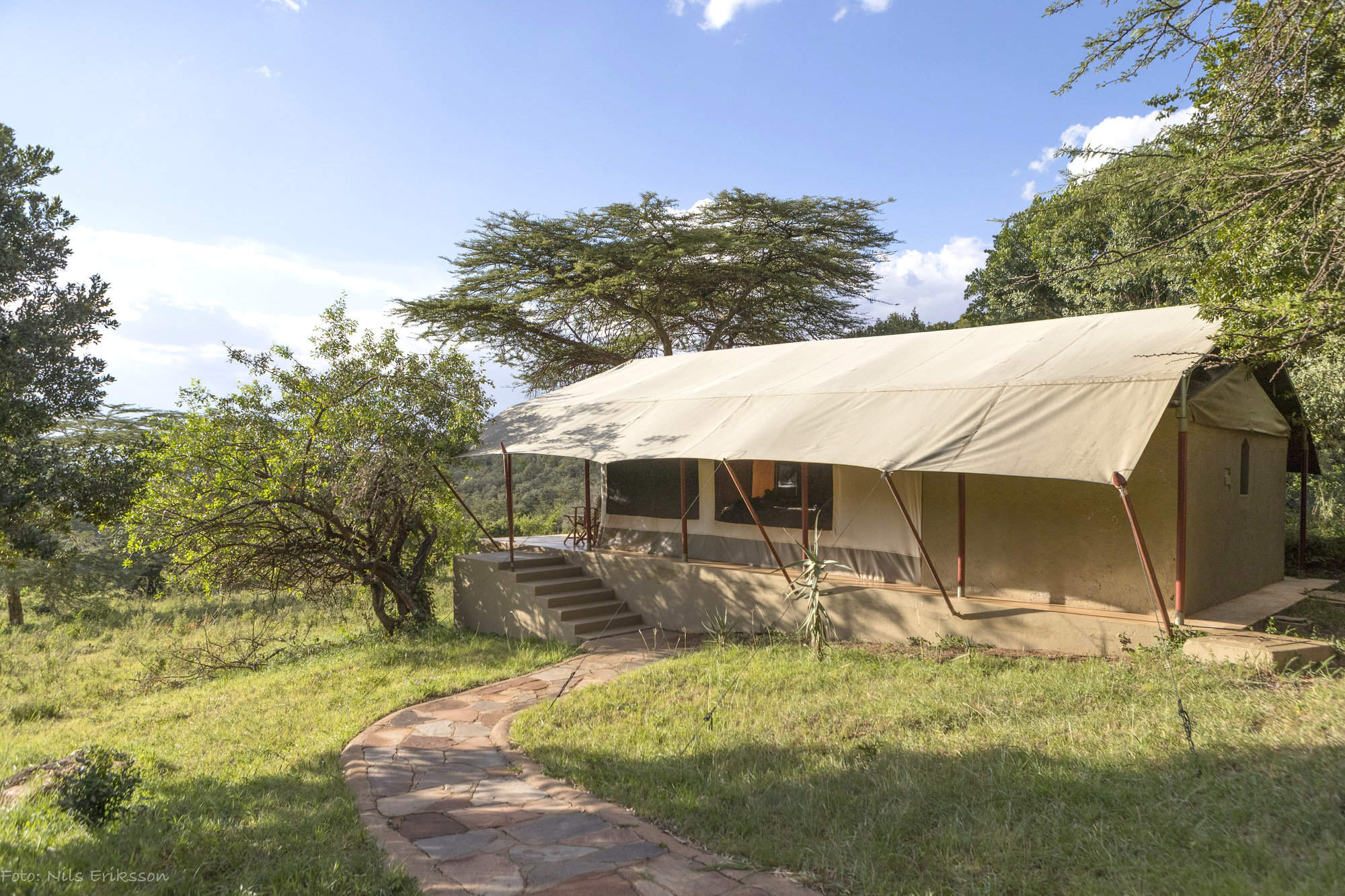
Entumoto
Entumoto is a high-end tented camp, with a swimming pool, situated in a very pretty location on the east side of the Maasai Mara ecosystem.
Our travellers’ wildlife sightings in the Maasai Mara Conservancies
The Maasai Mara conservancies teem with wildlife, offering a safari experience that rivals – and often surpasses – that of the Maasai Mara National Reserve. These community-run areas are home to astonishing concentrations of game. Lions are the undisputed stars here, often seen lounging in riverine thickets or stalking prey along winding streams. The Mara’s cheetahs, though more elusive, may surprise you by using safari vehicles as vantage points – a behavioural shift first noted in the 1990s.
Elephants roam freely, while hippos can be found in many streams and large ponds. The conservancies also play host to rarer species: wild dogs, once thought extinct in the area, have occasionally reappeared in recent years.
Click on a species below for more information on the top locations in Maasai Mara Conservancies for wildlife sightings, based on sighting reports from our travellers. How we work this out..

100% success

100% success

99% success

99% success

99% success

99% success

99% success

97% success

92% success

89% success

77% success

10% success

8% success

8% success

2% success

1% success
When to go to Maasai Mara Conservancies
Our month by month guide: What it's like to visit Mara Conservancies in Kenya
Jan
Feb
Mar
Apr
May
Jun
Jul
Aug
Sep
Oct
Nov
Dec
Kenya in January
Clear, hot days and warm nights make this high season a popular time for safaris and it’s also good for diving and snorkelling as water clarity is excellent and gets better as the dry season progresses. Most lodges and tented camps treat January after the New Year week is over, as mid-season, making it a good compromise in terms of value for money with reasonably reliable, dry weather and some greenery left in the landscape.
Expert Africa bases its description of climate and weather in January, like the other months of the year, on the climate records of roughly the last 100 years, and it's fair to say that the weather and seasons since the beginning of this century have been highly irregular and unpredictable.
- On average, January is the second driest month of the year
- Elephants dig waterholes in the dry riverbed in the Samburu reserve.
- Wildebeest and many antelope have their calving season, to February.
- Migrant birds are seen in huge numbers, especially in the Rift Valley.
- Sea water clarity around the coral reefs generally good.
Our view
Fantastic: the very best time to visit
Weather in January
Kenya in February
With the short dry season well established, the grass grazed down and wildlife gathering close to water points, this is still a good time for a safari. Good water clarity in the Indian Ocean's coastal waters makes for excellent diving and snorkelling conditions.
Expert Africa bases its description of climate and weather in February, like the other months of the year, on the climate records of roughly the last 100 years, and it's fair to say that the weather and seasons since the beginning of this century have been highly irregular and unpredictable.
- On average, February is the driest month of the year.
- It’s sometimes possible to swim with whale sharks at Diani Beach.
- Migrant birds are still seen everywhere, especially near water.
- This is usually peak calving season for wildebeest and many antelopes.
- This month is often the hottest of the year, especially on the coast.
Our view
A very good time to visit
Weather in February
Kenya in March
Hot, increasingly humid weather – with good diving and snorkelling conditions at the start of the month – gives way to rains and lower accommodation costs. Expert Africa bases its description of climate and weather in March, like the other months of the year, on the climate records of roughly the last 100 years, and predicting the seasons since the beginning of this century has been difficult.
March is the month when – traditionally – intensely hot conditions build up until a cloudburst finally happens at the end of the month or in early April, to relieve the humidity. As ever, regional variations across the country can greatly impact on visitors' experiences.
- Sea-water clarity is best for diving before the long rains start.
- Visitor numbers are low, though the Easter holidays can be busier.
- Night skies can be scintillatingly clear in early March.
- Cropped down savannah grasses can make it easier to see the wildlife.
- Temperartures climb high, especially at lower elevations.
Our view
A good time to visit, with pros & cons
Weather in March
Kenya in April
April sees the full onset of the southeast monsoon wind or kusi, which heralds the long rains. Temperatures drop soon after the rains are established and you’ll often have facilities largely to yourself in this more affordable low season, sometimes known as the "green season". The bush quickly springs to life, with greenery sprouting almost before your eyes. While you're likely to get a fair number of heavy showers, the breaks in the rain can yield sparklingly clear conditions.
With the dust settled and bright sun piercing the clouds, conditions can be sublime for photography, especially first thing in the morning or in the late afternoon with another storm brewing. You may be lucky, or you may find conditions very wet and muddy.
- A wet month, the coast often gets more than 300mm (12in) of rain.
- Sunny spells can provide great light for photography.
- Buffalo and zebra calving season often happens in this month.
- Baby crocodiles hatch, for example on Central Island in Lake Turkana.
- Palearctic migrant birds gather to fly north to breeding grounds.
Our view
A time to avoid if possible
Weather in April
Kenya in May
While game viewing can be trickier as vegetation runs riot, between the cloudbursts the colours and light are great for photography at this time of year. Expert Africa bases its description of climate and weather in May, like the other months of the year, on the climate records of roughly the last 100 years, and while it's reasonable to expect heavy rains in many parts during this month, especially on the coast, the rains don't always come evenly or in some areas come at all.
In an El Niño year, the so-called long rains that normally are established across much of the country by May can be meagre, to the despair of farmers. On the other hand in a La Niña year, the long rains can bring floods. On the coast, the monsoon winds make the climate much more predictable, with heavy rains common throughout this month.
- Frogs breed in the ponds in the Arabuko Sokoke Forest near Watamu.
- Wildebeest, impala and other grazers are in rut (the breeding season).
- Kilimanjaro looks its best as heavy rain falls as snow on the summit.
- There's a sharp peek of rainfall on the coast with many rainy days.
- Accommodation prices are uniformly low, while some camps close.
Our view
A time to avoid if possible
Weather in May
Kenya in June
The rains give way to cloudy, cooler weather, often making for comfortable conditions by the end of the month, especially in the highlands. Starting from mid-June or the beginning of July and running until the end of October, this is the high season, and accordingly has higher accommodation rates and – at least until early September – higher numbers of visitors.
While the early part of June can often be rainy on the coast, it can be a great time to go on safari, with fresh greenery, many young animals and good photographic conditions with clear air.
- The Taru Desert, inland from the coast, is carpeted with flowers.
- The Lake Turkana Cultural Festival is held in Loiyangalani.
- Madaraka Day (commemorating self rule) is 1 June.
- The annual Lewa marathon runs a course through the wildlife.
- The Diani Rules "sports" event rips up the rulebook at Diani Beach.
Our view
A good time to visit, with pros & cons
Weather in June
Kenya in July
Kenya’s “winter" season sets in (winter is a misnomer but locals feel the change), and the highlands can be rather grey. Skies are often cloudy and the days can be surprisingly cool, with an average daytime high in many highland safari areas of 15-20°C and night-time temperatures dropping below 10°C in Nairobi and the highlands. Lower parts of the country and the coast are usually warm and dry, typically reaching highs of around 25°C with lows in the high teens.
As this is the start of the high season, coinciding with the usual arrival of the wildebeest migration in the Maasai Mara, July is a busy month. Ask your Expert Africa specialist to advise on how to avoid the crowds, which is not that difficult to do.
- The wildebeest migration usually reaches the Maasai Mara in July.
- Simbi Lake (Kisumu) and Crater Lake (Naivasha) can attract flamingoes.
- Watersports start to pick up and some surfing is possible at Malindi.
- Afternoon thunderstorms are a common feature in the Maasai Mara.
- The sea can be choppy along the coast, making diving difficult.
Our view
A good time to visit, with pros & cons
Weather in July
Kenya in August
The Great Migration fills the plains of the Maasai Mara, and school’s out, so the park roads are full of tourists – ask your Expert Africa specialist for advice on crowd avoidance tactics. Choose a private conservancy rather than a public national park or national reserve for quieter conditions.
Like July, August is generally mild and relatively dry in the safari areas, but it can be very chilly in the highlands, even in the middle of the day, and hail occasionally falls above altitudes of around 2,400m (8,000ft). Nairobi can be disappointingly overcast, with low cloud.
- Apart from Christmas holidays, this is the busiest month of the year.
- Late August sees peak wildebeest drama at the Mara River crossings.
- Coastal winds are good for kite- and wind-surfing.
- Few mosquitoes are around at this generally dry time of year.
- The annual Camel Derby takes place in the Samburu capital, Maralal.
Our view
A good time to visit, with pros & cons
Weather in August
Kenya in September
The skies clearing of cloud signals the start of hot, dry weather with little chance of rain – and, after the first few days of the month, far fewer visitors – making the latter part of September a good time for a quieter safari. While early September is often good for dramatic migration crossings along the Mara River, you might consider deliberately postponing your trip until later in the month, when the migration can still be very impressive and visitor numbers fewer.
If tourist surges are somewhat predictable, however, the patterns of the wildebeest migration are more volatile, and like all of Expert Africa's climate and weather assessments, they are based on accumulated years of experience rather than guaranteed certainty.
- This is still high season, with prices to match.
- Many river crossings take place on the Mara river in both directions.
- Natural bush fires flush out insects and small animals for predators.
- The Rift Valley Music Festival takes place by Lake Naivasha.
- With school holidays over by early September, late-month is quieter.
Our view
Fantastic: the very best time to visit
Weather in September
Kenya in October
Still hot, mostly dry and not too busy, this is many people’s preferred month for a safari, and it’s also good for diving and snorkelling. The wildebeest and zebra herds of the great migration are often still to be seen, though in dwindling numbers. The swamps of Amboseli attract thirsty wildlife including large herds of elephants.
While we wouldn't expect much rain across most of the country this month, the climate has become so unpredictable that you can never say never, and the possibiity of the short rains – usually associated with November to mid-December, starting early, can't be discounted.
- This month sees the tail end of the great migration in the Mara.
- Palearctic migrant birds start to arrive, staying until March.
- Turtle nests hatch at Watamu, until November.
- Amboseli elephants focus on the swamps for their daily water.
- The Indian Ocean monsoon winds turn from southeast to northeast.
Our view
A very good time to visit
Weather in October
Kenya in November
The northeast monsoon wind or kaskazi heralds the start of the “short rains", usually some time in the second half of the month. From November to mid-December, this is the low season, and accordingly has lower accommodation rates and lower visitor numbers. Across most of the country you can expect warm, somewhat cloudy weather, with occasional heavy showers and localised flooding.
Expert Africa bases its description of the climate in November, like the other months of the year, on the records of roughly the last 100 years, and it's fair to say that the seasons since the beginning of this century have been highly irregular and unpredictable: some years the short rains don't come at all, or don't reach every part of the country. In an El Niño year, the November short rains can be very heavy, but in a La Niña year, they can fail completely.
- Swimming with dolphins in Lamu can be done from now until April.
- Birders gather at Ngulia in Tsavo West to ring Palearctic migrants.
- The Lamu Cultural Festival takes over the town and Lamu Creek.
- Agricultural shows often take place regional market towns.
- This is low season, so camps can be great value, with special offers.
Our view
A good time to visit, with pros & cons
Weather in November
Kenya in December
In a typical December, the rains usually finish by middle of the month, leaving the landscape looking its best, under clear blue skies, and heralding the start of the second peak tourist season from around 20 December to the first week of January. Our assessment of the likely weather in December, like the other months of the year, is based on climate records, and it's fair to say that the seasons since the beginning of this century have been highly irregular and unpredictable.
Christmas can sometimes be wet, but most years the rains have finished a week or two earlier, with the festive season ushering in the perfect combination of clear skies and sunshine by day and starry nights.
- Christmas and New Year are busy, with the lodges and camps full.
- Rates are highest after 24 Dec, with supplements on public holidays.
- Republic Day and Independence day are celebrated on 12 December.
- Good kite- and wind-surfing restarts, with strong northeasterly winds.
- Mango season begins, providing excitement for primates and elephants.
Our view
A good time to visit, with pros & cons
Weather in December
Maasai Mara Conservancies: In detail
The Maasai Mara Conservancies
The Maasai Mara Conservancies are a network of community-owned conservation areas surrounding the Maasai Mara National Reserve in south-western Kenya. Developed through partnerships between local Maasai landowners and tourism operators, these conservancies have become a leading model for sustainable tourism and community-based conservation in Africa.
Spanning over 1,500km² collectively, they form vital buffer zones and migration corridors, supporting high densities of wildlife, including elephants, leopard, cheetahs, and the region’s famous lion prides. Several conservancies also lie on the route of the lesser-known Loita Migration, adding to their ecological value.
The conservancies are exclusive to their guests and the limited number of camps in each conservancy can organise bush walks and night drives, neither of which is possible in the Maasai Mara National Reserve. The conservancy camps are still able to take safari visitors into the national reserve, and most camps in the conservancies include a full day in the reserve for each three-night stay – a particularly popular option during migration season. It doesn’t work the other way round: most conservancies do not permit casual visits to safari travellers staying in the big camps and lodges in the national reserve or clustered around its boundaries.
Expert Africa offers a selection of safari camps both inside the national reserve and outside it in the exclusive conservancies. Remember that none of these areas are fenced. The Mara region’s few fences are used to keep people and livestock safe rather than to enclose the free-roaming wildlife.
Safari in the Maasai Mara conservancies
Most of the camp staff in the conservancies come from the region’s Maasai community. In the case of one or two camps, staff are drawn exclusively from local Maasai villages – or enkang. Much more than in the national reserve lodges (where staff tend to be recruited by head office and posted to the Mara), you’re likely to have close contacts with Maasai people on a daily basis, adding an illuminating cultural thread to your safari. Nearly all the conservancy camps offer optional ‘cultural visits’ to one of their nearby Maasai villages, often accompanied by staff who live there. A fee of about $20 per person is payable locally.
Activities in the conservancy camps are not just vehicle-based. While the national reserve only permits visits in vehicles, the conservancies are on privately owned land and they make their own, more flexible rules based around small numbers of visitors and concepts of close supervision and good local knowledge. All the conservancy camps have their own specialist, 4WD game-drive vehicles, but you’ll find bush breakfasts, lunches and dinners are more common than inside the reserve (and obviously you get out of the vehicle for these), while one or two camps have mountain bikes.
Bush walks in the conservancies are increasingly popular and split into two different styles. Most are accompanied by one or two armed escorts who carry light firearms. Guides, escorts and guests walk in a group, and deliberately follow established routes through open areas with good visibility and very limited likelihood of encountering dangerous wildlife. In one or two camps, bigger calibre weapons are available and guests can then be guided through denser bush. On these walks, a spotter with binoculars scouts ahead and lets the party know that it’s safe to proceed. A popular bush walk plan is to leave from camp at dawn by 4WD, with breakfast and a camp kitchen packed in the vehicle. You’re then dropped off to walk for a couple of hours, while the vehicle drives on to the breakfast spot where you meet up later. You then drive back to camp after breakfast – or walk back if the route is suitable.
The other great conservancy activity - which is not permitted in the reserve - is night game drives. Night falls early – and very quickly – in Kenya (sundown varies through the year between about 6.30pm and 7pm in the Maasai Mara) and nocturnal wildlife starts to become active from around 6pm onwards. A typical night game drive follows on naturally from a late afternoon game drive. You stop at the camp’s favourite sundowner spot at around 6.15pm and have a drink and some nibbles as the sun plunges below the horizon. In darkness, you then set off back to camp very slowly with the spotter directing the spotlight. Camps are increasingly switching from white lights to orange or red lights, which are much less stressful for wildlife. Depending on what you’ve requested in advance, you might get back to camp for dinner at about 8pm. Alternatively, you can sometimes request a later night drive, setting off after an early dinner. Most conservancies require camp vehicles to be back in camp by 10pm.
Mara Naboisho
Rich in biodiversity, Naboisho boasts exceptionally high densities of wildlife. It is home to large herds of elephants and giraffes, and supports around up 100 lions. The conservancy has a wide range of plains game, drawn to its vast grazing areas.
Naboisho lies along the route of the Loita Migration, a seasonal movement of wildebeest and zebra between the Loita Hills to the east and the Maasai Mara National Reserve and Mara North Conservancy to the west. This lesser-known, secondary migration fuels a thriving population of predators and offers dramatic wildlife encounters without the crowds found in the reserve.
With only a handful of camps and strict controls on vehicle numbers, visitors are ensured an exclusive safari experience in Mara Naboisho, and each of these properties contributes directly to local community development and conservation initiatives. The Koiyaki Guiding School, located in the conservancy, trains local Maasai guides and is well worth a visit. Walking safaris, night drives, and off-road game viewing are all permitted here, none of which are allowed in the main Maasai Mara National Reserve.
Access to the conservancy is easy via scheduled flights to the Naboisho (Ol Seki) airstrip, making it a top choice for discerning safari travellers.
THE BEST CAMPS AND LODGES IN MARA NABOISHO
Mara Naboisho is home to a superb collection of camps and lodges. These properties offer a variety of styles, from rustic wilderness outposts to luxurious safari retreats, all designed to immerse you in the conservancy’s rich ecosystems and vibrant Maasai culture.
Our Kenya experts’ favourite places in Mara Naboisho are:
Basecamp Eagle View: Perched on a ridge with commanding views over the Koiyaki plains, this eco-conscious camp blends stylish design with outstanding wildlife access. It’s particularly noted for its elevated guest decks, excellent guiding, and its proximity to a key lion territory. Read our detailed review of Basecamp Eagle View here…
Basecamp Leopard Hill: A sleek, contemporary camp with tented suites featuring retractable roofs for stargazing. With its innovative design and focus on immersive wildlife experiences, it’s a great choice for couples and families alike. Read our detailed review of Basecamp Leopard Hill here…
Basecamp Wilderness Camp: A small, authentic bush camp set in a wooded valley. Perfect for guests seeking a quieter, off-grid safari with walking opportunities and minimal impact tourism. Read our detailed review of Basecamp Wilderness Camp here…
Encounter Mara: Tucked under acacia trees with views over a salt lick, this classic tented camp offers exceptional predator sightings and strong community ties. Walking safaris, night drives, and visits to the local guiding school are highlights. Read our detailed review of Encounter Mara here…
Hemingways Ol Seki Mara: A high-end camp with sweeping views and spacious suites, including a two-bedroom family unit. It’s a great option for those wanting a more polished, boutique-style base in the bush. Read our detailed review of Hemingways Ol Seki Mara here…
Kicheche Valley: An elegant, low-impact camp in a secluded valley with access to prime wildlife territory. Its expert guiding, personal service, and stylish tented rooms make it a firm favourite among repeat safari-goers. Read our detailed review of Kicheche Valley here…
Kicheche Walking Wilderness: A seasonal mobile camp offering multi-day walking safaris led by professional guides. It’s ideal for adventurous travellers keen to explore Naboisho on foot, staying in comfortable, minimalist bush tents. Read our detailed review of Kicheche Walking Wilderness here…
Mara Nyika: Though technically just outside Naboisho, this ultra-luxury camp offers access to the conservancy’s wildlife-rich zones. It features elegant canvas suites, fine dining, and is perfect for guests seeking exclusivity and top-tier comfort. Read our detailed review of Mara Nyika here…
Naboisho Camp: A well-established, classic tented camp, with a strong focus on conservation and guiding. It’s renowned for lion and cheetah sightings and delivers consistently excellent safari experiences. Read our detailed review of Naboisho Camp…
Mara North
The landscape is a classic Mara mosaic of golden savannahs, bush-covered ridges, and seasonal stream channels (known locally as luggas), which break the terrain into a characteristic “chocolate block” landscape. These varied habitats support an impressive density of wildlife year-round. Visitors may encounter large herds of elephants, abundant plains game, and all the major predators, including lion, leopard, and cheetah.
Mara North is particularly renowned for its lion research, and hosts several large prides. Leopard Gorge, just northeast of Musiara Gate, is a hot spot for big cat sightings and is regularly featured in wildlife documentaries.
Guests in Mara North enjoy uncrowded safari experiences with the freedom to explore on game drives, guided walks, and night safaris, none of which are permitted in the national reserve. While the area is largely wild, the presence of local Maasai herders with their cattle adds a cultural dimension.
The conservancy is a model of successful community-based conservation, created through a partnership between more than 800 Maasai landowners and a consortium of high-end tourism operators. This structure ensures sustainable land use, with revenue from tourism supporting local livelihoods and conservation efforts.
BEST CAMPS AND LODGES IN MARA NORTH
Mara North is home to some of the most established and highly regarded safari camps in the Mara ecosystem. These lodges combine high levels of comfort and guiding with exceptional access to wildlife-rich areas, all while supporting local landowners through a community-driven model.
Our Kenya experts’ favourite places in Mara North are:
Basecamp Mara Houses: Ideal for families or small groups, these exclusive-use villas offer privacy, comfort, and full safari flexibility. With a private vehicle and guide, guests can explore the conservancy at their own pace. Read our detailed review of Basecamp Mara Houses here…
Elephant Pepper Camp: Tucked into a grove of trees overlooking open plains, this elegant tented camp offers superb big-cat viewing and an old-world safari feel. It’s a long-standing favourite with guests and guides alike. Read our detailed review of Elephant Pepper Camp here…
Karen Blixen Camp: Set along the banks of the Mara River, this larger camp offers an excellent combination of style and value. Guests enjoy spacious tents, great food, and prime game viewing, often right from camp. Read our detailed review of Karen Blixen Camp here …
Kicheche Mara: This intimate, low-impact camp is known for exceptional guiding and its location in one of the best wildlife-viewing zones in the conservancy. It’s a hit with photographers and return travellers. Read our detailed review of Kicheche Mara here …
Ngare Serian: A stylish, riverside retreat that combines barefoot luxury with adventurous touches. With just a few suites, private guides, and access to a private walking area across the river, this is a superb choice for serious safari enthusiasts. Read our detailed review of Ngare Serian here…
Offbeat Mara: Long established and utterly authentic, Offbeat Mara blends traditional safari charm with stellar big-cat sightings and expert guiding. It’s especially popular with families and return travellers. Read our detailed review of Offbeat Mara here…
Offbeat Ndoto: This exclusive-use mini-camp offers the same high standards as Offbeat Mara but in a private setting ideal for couples or small groups. Its name—“Ndoto”—means “dream” in Swahili. Read our detailed review of Offbeat Ndoto here…
Saruni Mara: A stylish and characterful lodge set on a forested hillside with stunning views and a more remote feel. Known for its strong cultural focus and luxurious touches, it’s a great blend of retreat and adventure. Read our detailed review of Saruni Mara here…
Serian: A laid-back, luxurious camp with a loyal following. Its flexible approach includes private vehicles for all guests, outstanding guiding, and walking access to a private conservation area across the river. Read our detailed review of Serian…
Olare Motorogi
Covering 133km², the conservancy was formed in 2012 through the merger of two pioneering community conservancies - Olare Orok and Motorogi. This unified model, supported by conservation champions including Richard Branson of the Virgin Group, has become a blueprint for sustainable tourism in the Mara. Olare Orok, in particular, set industry standards by enforcing a maximum of 12 tents per camp and requiring at least 3km2 of land per tent for game-viewing. This ensures an exclusive and uncrowded safari for every guest. Activities in Olare Motorogi include game drives, walking safaris, and cultural visits to local Maasai communities.
The terrain here is varied and scenic - classic Mara savannah interspersed with seasonal rivers, acacia woodlands, and rolling hills. Wildlife densities are among the highest in the region, and the conservancy is especially renowned for exceptional big cat sightings, including some of the best lion-watching in East Africa. All the major predators are present, and the area regularly features in BBC and National Geographic wildlife documentaries.
BEST CAMPS AND LODGES IN OLARE MOTOROGI
With its blend of dramatic landscapes, predator-rich plains, and a strict focus on exclusivity, Olare Motorogi offers one of the most rewarding safari experiences in East Africa.
Our Kenya experts’ favourite places in Olare Motorogi are:
Kicheche Bush Camp: A favourite among serious safari-goers and photographers, this understated camp is renowned for top-tier guiding, relaxed luxury, and proximity to prime wildlife-viewing zones. Read our detailed review of Kicheche Bush Camp…
Mahali Mzuri: Sir Richard Branson’s high-end lodge combines contemporary design with panoramic views and impeccable service. Its 12 luxurious tents offer a stylish base from which to explore the conservancy’s superb game-viewing areas. Read our detailed review of Mahali Mzuri…
Mara Plains Camp: One of Kenya’s most exclusive safari camps, offering just a handful of opulent suites tucked beneath riverine forest canopy. It boasts exceptional guiding and direct access to both Olare Motorogi and the Maasai Mara Reserve. Read our detailed review of Mara Plains Camp…
Mara Toto Tree Camp: A smaller, more intimate sister to Mara Plains, this stylish tented camp blends adventure and comfort in a peaceful forest setting. It’s ideal for couples or small groups wanting a private and flexible safari. Read our detailed review of Mara Toto Tree Camp…
Porini Lion Camp: An authentic eco-camp set in a secluded valley, known for exceptional lion encounters and a strong conservation ethos. Its simple charm, superb guiding, and commitment to sustainability make it a standout. Read our detailed review of Porini Lion Camp…
Ol Kinyei
Established in 2005 as the first community-owned conservancy in the Mara, Ol Kinyei set a groundbreaking precedent by showing that Maasai landowners could earn a sustainable income from safari tourism while preserving their land and wildlife. With just one main camp operating in the conservancy - Porini Mara Camp - visitor numbers are deliberately kept low, ensuring a peaceful and exclusive safari experience. The camp is directly linked to the local community, which benefits substantially from its success.
Porini Mara Camp itself is a classic eco-camp, tucked into a shady grove of trees in a quiet valley. With just a handful of traditional safari tents, it provides a back-to-basics yet comfortable stay, with an emphasis on sustainability and top-tier wildlife experiences. Guests are guided by local Maasai rangers and trackers, whose deep knowledge of the area enhances every activity, from off-road game drives to guided walking safaris. The camp’s location within the conservancy gives it access to superb wildlife year-round, including regular sightings of lions, cheetahs, and elephants. Night drives and visits to neighbouring Naboisho and the national reserve add further variety. With a low-impact approach and authentic atmosphere, Porini Mara Camp is particularly well suited to safari purists and travellers looking to support community-led conservation.
The conservancy’s terrain offers a classic Mara setting, with open plains dotted by lone acacia trees, seasonal streams, and gentle hills. It is home to a resident lion population, along with cheetahs, leopards, hyenas, jackals, and plentiful plains game including zebra, wildebeest, and giraffe.
Ol Kinyei is ideal for travellers seeking immersive, low-impact safari activities. It is one of the many areas in the Mara Conservancies where guided walking safaris are a central experience.
Ol Derikesi
While relatively small compared to other conservancies, Ol Derikesi is notable for its high game densities and healthy predator populations, particularly a number of lion prides. The landscape features classic Mara savannah interspersed with bushland, seasonal luggas, and scattered acacia trees, providing both open viewing and excellent wildlife habitat.
Ol Derikesi hosts just one luxury safari camp - Cottar’s 1920s Camp - positioned to take full advantage of the sweeping views and wildlife-rich terrain. This atmospheric, family-run lodge evokes the romance of early safaris, with stylish cream canvas tents, vintage furnishings, and attentive service. Its location on a private 7,000-acre concession allows guests to explore on foot, by vehicle, and after-dark activities not permitted in the neighbouring reserve. A landmark agreement with local Maasai landowners created a cattle-free buffer zone surrounding the camp, with conservation fees from guests funding community payments. The result is a flourishing wildlife haven where lions, elephants, and cheetahs are commonly seen and natural behaviour has returned.
Guests can enjoy private day and night game drives, guided walking safaris, and meaningful cultural visits with the local Maasai community. The area is ideal if you’re seeking seclusion, exclusivity, and an old-world safari atmosphere coupled with strong conservation ethics. With its limited access and high-quality wildlife encounters, Ol Derikesi offers an exceptional and intimate alternative to the more frequented corners of the Mara.
Lemek
The conservancy is known for its open plains, gently rolling hills, and patches of acacia woodland. Its location places it on the migratory route of wildebeest and zebra during the Loita Migration, a smaller-scale but still spectacular movement of grazers that occurs independently of the larger Serengeti-Mara migration. This consistent wildlife presence means that visitors can spot lion, leopard, cheetah, hyena, giraffe, elephant, and various antelope species throughout the year.
Our favourite camp in Lemek is Saruni Wild, a small and secluded tented camp that offers a true wilderness experience. Located in a remote clearing within Lemek, this intimate retreat is ideal for travellers seeking privacy, tranquillity, and a deep connection with nature. The camp’s design is understated yet elegant, with just a handful of comfortable tents and personalised service from a dedicated team. Game drives with Saruni’s expert Maasai guides are a highlight, providing unique insights into wildlife behaviour, culture, and conservation. The location allows guests to explore both Lemek and neighbouring conservancies with very few other vehicles around, offering exceptional photography and peaceful wildlife viewing.
Lemek was among the earlier community conservancies established in the Mara and plays an important role in community-based conservation. Local Maasai landowners lease their land to tourism operators in return for rent and employment, creating a sustainable model that supports both livelihoods and habitat preservation.
Safari travellers can expect fewer vehicles and a more personal experience compared to the national reserve. Game drives, guided nature walks, and cultural visits to nearby villages are all available.
Olchoro Oirowura
Covering approximately 40km² , Olchoro is one of the smallest conservancies in the Mara region. Despite its size, it has a long-standing conservation pedigree, having been among the first conservancies formed in the Mara with support from conservation organisations and tourism operators. The conservancy leases land from local Maasai families, who in return benefit from tourism revenues and employment opportunities, particularly in guiding, conservation, and camp management.
The landscape consists of classic Mara savannah grassland interspersed with small hills and bushy luggas (seasonal streambeds), which support a variety of habitats. Wildlife is plentiful, with regular sightings of lion, cheetah, leopard, elephant, giraffe, and many species of plains game. The conservancy is also known for excellent birdwatching, with a diversity of raptors and smaller species drawn to the riverine and scrub habitats.
Although Olchoro has fewer lodges and visitors than larger neighbouring conservancies, this works in its favour, providing guests with a quieter, more intimate safari experience. Activities typically include day and night game drives, walking safaris, and visits to local Maasai villages, offering insight into the region’s rich cultural and ecological heritage.
Siana
Siana was one of the earlier community conservancies established in the Mara region, created through agreements between local Maasai landowners and safari operators. These partnerships help generate income for the community while preserving wildlife habitats.
Visitors to Siana can enjoy a relatively peaceful safari experience, with fewer vehicles than in the reserve. Activities include game drives and cultural visits to local villages, and some camps also offer walking safaris and night drives within private land.
Entumoto is our favourite camp in the conservancy. Set on a ridge overlooking the plains, the camp offers panoramic views and access to both the conservancy and the national reserve. Accommodation is in spacious canvas tents with en suite bathrooms, and the camp includes a lounge, dining area and swimming pool. A separate section, Entumoto Toto, caters for families and groups. The camp operates in partnership with local Maasai landowners and supports a number of community initiatives in the area.
Map of Maasai Mara Conservancies
Choices for where to stay in Maasai Mara Conservancies
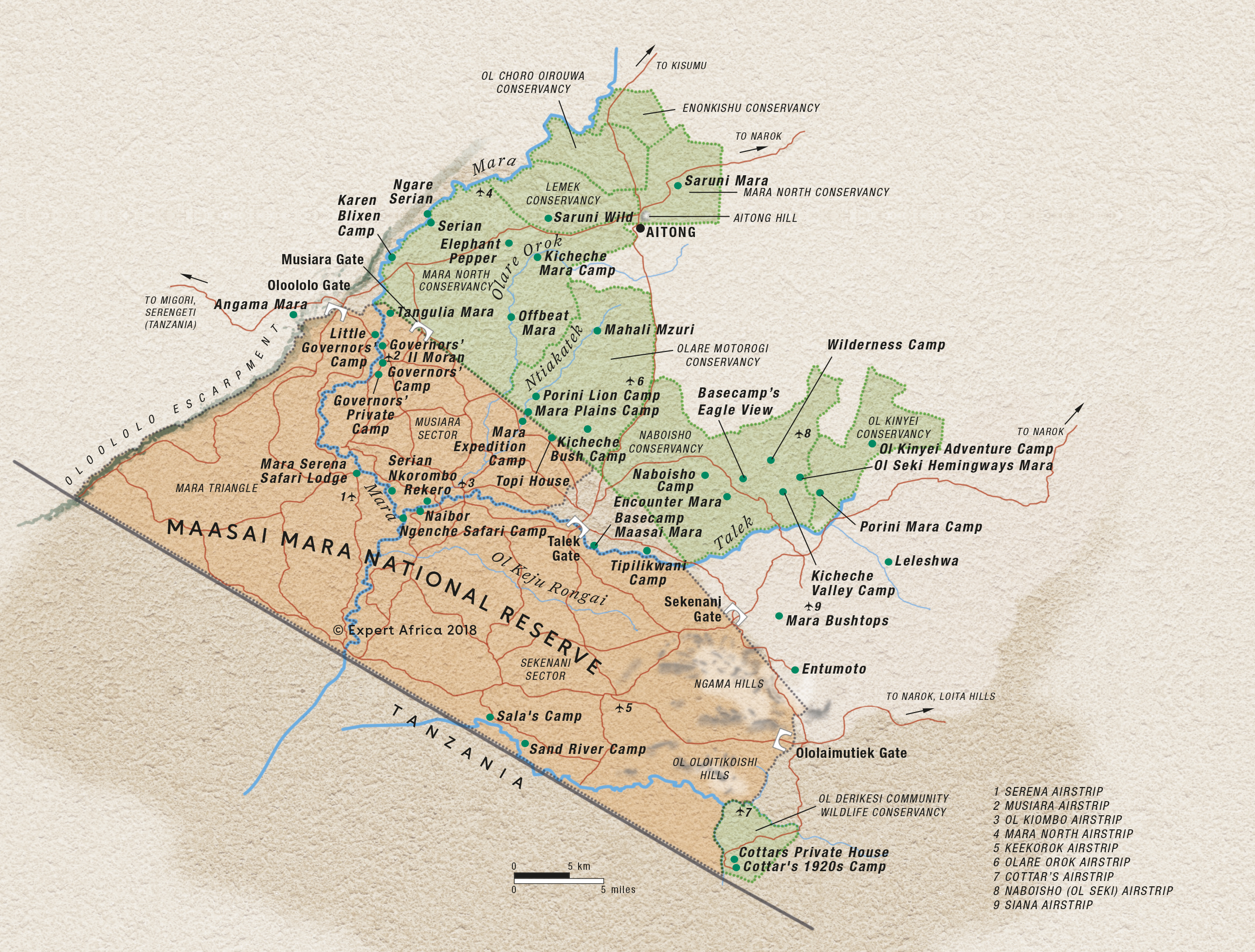
Maasai Mara Conservancies: Safaris
The Maasai Mara Conservancies offer some of Kenya’s most exclusive and wildlife-rich safari experiences, set on the edges of the famed Maasai Mara National Reserve.
Here, you can explore wide open plains on game drives with expert guides, track wildlife on foot, enjoy night drives to spot elusive nocturnal creatures, and connect with local Maasai communities. With fewer vehicles and carefully managed visitor numbers, the conservancies provide an intimate, low-impact alternative to the busier reserve.
Safaris in the Maasai Mara Conservancies combine perfectly with time in other parts of Kenya. Head north to Samburu for dramatic arid landscapes and rare northern species, or to Laikipia for rhino tracking and innovative conservation experiences. The Rift Valley’s lakes, including Lake Nakuru and Lake Naivasha, offer birdwatching and scenic beauty, while the Kenyan coast - whether Diani, Watamu or Lamu – provides idyllic beaches and Swahili culture, rounding off a varied and memorable Kenyan adventure.
We’ve created a wide range of safari and holiday ideas that include the Maasai Mara Conservancies. Talk to us for more details about which safari combination will suit you best – and we’ll always tailor these to suit you perfectly.

Purple Grenadier Fly-In Safari
6 days • 2 locations
NAIROBI AIRPORT TO NAIROBI AIRPORT
Fantastic guiding from intimate, well-run mid-range tented camps, in superb conservancy locations: this safari is all about making the most of the incredible wildlife in Laikipia and the Maasai Mara.
US$6,390 - US$8,800 per person

Striped Hyena Safari
5 days • 3 locations
NAIROBI AIRPORT TO NAIROBI AIRPORT
Just one example of a possible itinerary for keen walkers, this safari enables you to experience the sounds and sights of the bush, and its wildlife, in an unusually direct way.
US$5,700 - US$6,990 per person

Black Kite Fly-in Safari
10 days • 4 locations
NAIROBI AIRPORT TO NAIROBI AIRPORT
Explore Kenya in-depth with visits to Nairobi and Meru national parks, the Mara Conservancies and Amboseli. Nestled in remoter regions, four camps provide fantastic access to rich game, a range of activities and beautifully diverse landscapes.
US$10,410 - US$14,150 per person

African Finfoot Fly-in Safari
7 days • 3 locations
NAIROBI AIRPORT TO NAIROBI AIRPORT
After a unique start in Nairobi National Park, classic, luxurious camps combine for a high-end and exclusive safari in fantastic wildlife destinations.
US$11,230 - US$17,340 per person

African Hawk-Eagle Fly-in Safari
7 days • 2 locations
NAIROBI AIRPORT TO NAIROBI AIRPORT
Two luxurious camps provide relatively quiet game-viewing within Laikipia and the Mara ecosystem. Situated on private conservancies, both Lewa Wilderness and Naboisho offer the chance to sight all of the "Big 5" and to enjoy a range of safari activities.
US$9,360 - US$16,430 per person

Hamerkop Fly-In Safari
8 days • 2 locations
NAIROBI AIRPORT TO NAIROBI AIRPORT
Different wildlife, contrasting camps and a whole host of activities, this is a safari for those wanting to get out and about and not just sit in a vehicle.
US$7,430 - US$10,960 per person

Peregrine Falcon Fly-In Safari
6 days • 2 locations
NAIROBI AIRPORT TO NAIROBI AIRPORT
Discover two of Kenya’s quieter wildlife havens with visits to Meru National Park and Mara North Conservancy. Top-quality sister camps provide considerable comfort and a range of activities by which to explore the game-rich surroundings.
US$7,840 - US$8,980 per person

Tawny Eagle Fly-in Safari
7 days • 2 locations
NAIROBI AIRPORT TO NAIROBI AIRPORT
Explore Laikipia and the Maasai Mara ecosystem with stays in the Ol Pejeta and Naboisho conservancies. Two smart yet authentically rustic bush camps provide a traditional safari experience, offering a high standard of guiding and excellent level of care.
US$6,550 - US$8,630 per person
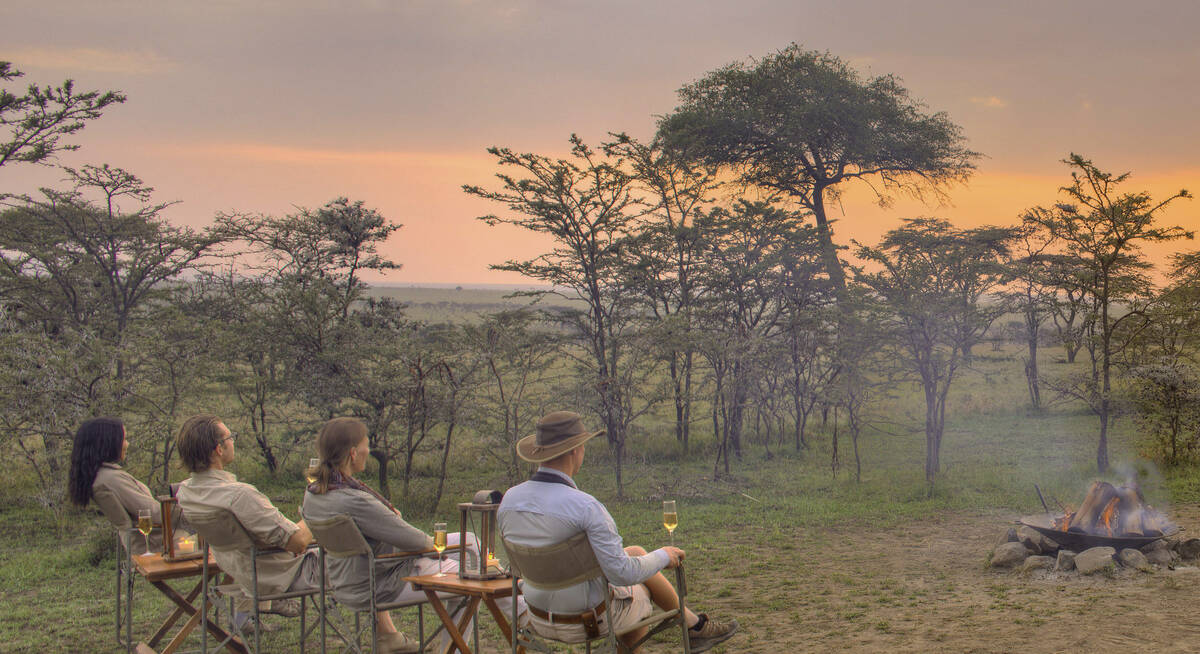
De Brazza Monkey Fly-in Safari
9 days • 3 locations
NAIROBI AIRPORT TO NAIROBI AIRPORT
Enjoy a range of activities in the remote wilderness of northern Kenya before exploring the wildlife-rich plains of the Mara ecosystem. Private vehicles and guides heighten the personalisation of this highly immersive safari.
US$13,540 - US$16,320 per person
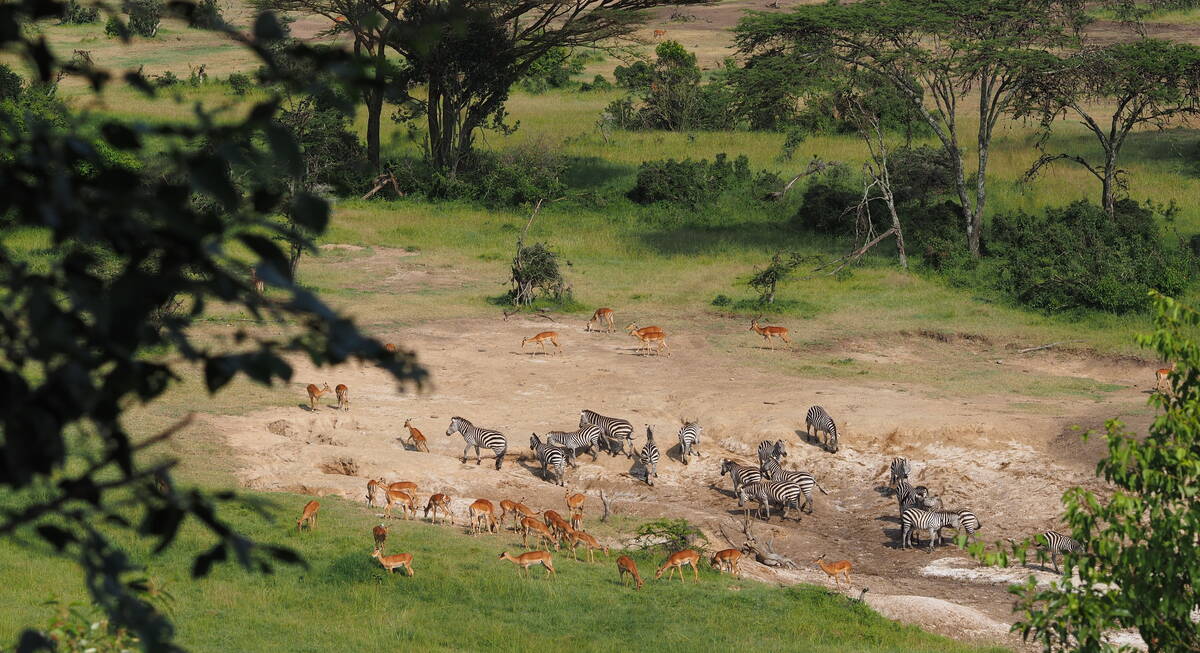
Wahlberg's Eagle Fly-in Safari
6 days • 2 locations
NAIROBI AIRPORT TO NAIROBI AIRPORT
A great value safari in Laikipia and the Maasai Mara that provides an immersive, authentic bush camp experience with activities for families of all ages.
US$5,880 - US$6,450 per person
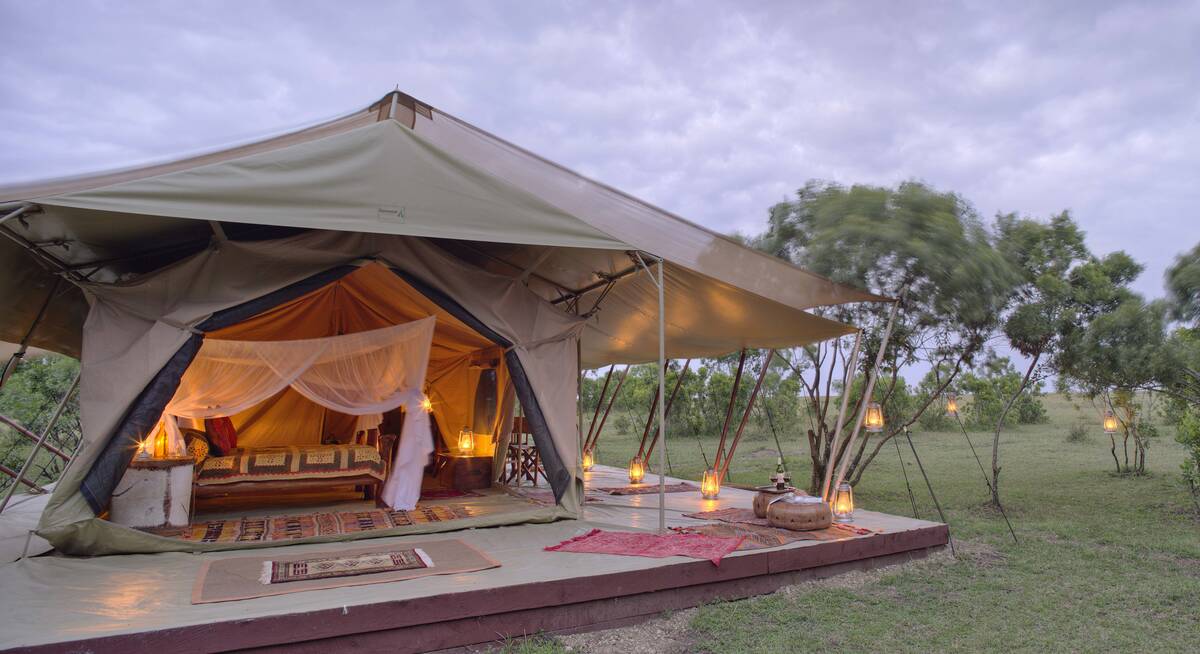
Lanner Falcon Fly-In Safari
8 days • 3 locations
NAIROBI AIRPORT TO NAIROBI AIRPORT
Three sister camps offer access to wonderfully remote regions across northern Kenya and the Maasai Mara ecosystem. Enjoy an exclusive safari experience focused on great wildlife, superb guiding and considerable comfort, with a range of activities.
US$7,140 - US$8,400 per person
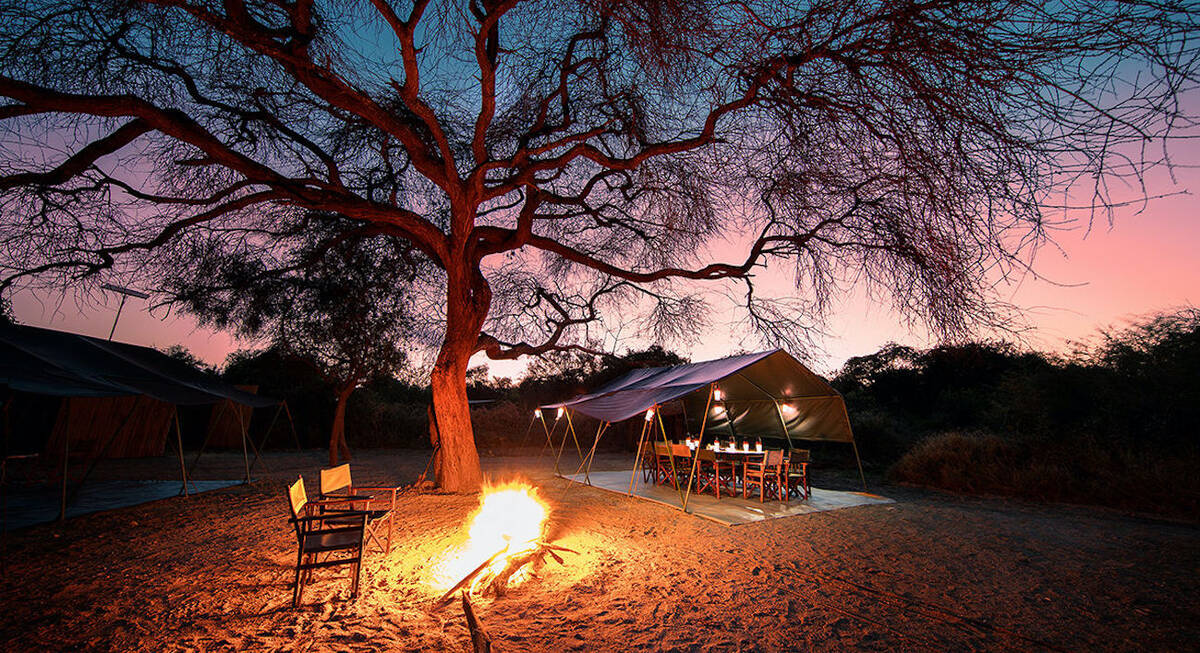
Golden Weaver Fly-In Safari
6 days • 2 locations
NAIROBI AIRPORT TO NAIROBI AIRPORT
A rustic, adventurous week on safari with great community involvement that offers incredible value for money in two very different locations – the Amboseli and Maasai Mara ecosystems.
US$3,720 - US$3,720 per person
Best 30 lodges and safari camps in the Maasai Mara Conservancies
Here are our recommendations for great places to stay in the various conservancies around the Maasai Mara.
Staying in the Maasai Mara Conservancies offers one of Kenya’s most exclusive safari experiences, combining exceptional wildlife viewing with authentic cultural encounters and low visitor density. Accommodation here is thoughtfully positioned across the conservancies to preserve the ecosystem while offering prime access to game-rich areas, ensuring guests enjoy both privacy and proximity to nature. Most properties are small-scale, with a strong emphasis on sustainability and immersion, ranging from classic tented camps with canvas walls and lantern light to more contemporary eco-lodges with stylish, open-plan designs. The variety allows for everything from barefoot luxury to rustic adventure.
These camps and lodges are designed not just for viewing the Mara ecosystem, but for deeply experiencing it – making them ideal bases for memorable safaris.
Ask us for more details of which camps are where, and what is likely to suit you best.

Kicheche Bush Camp
Kicheche Bush Camp is a smart and intimate tented camp with a relaxed atmosphere and the perfect base in the Mara for keen photographers.

Kicheche Mara
Kicheche Mara Camp has just ten tents and a rustic and comfortable feel. It is set by a stream in a pretty area of the Mara ecosystem's Mara North Conservancy.

Kicheche Valley
Kicheche Valley is a boutique tented camp in a wooded district of the Mara ecosystem's Naboisho Conservancy, with plenty of wildlife in the area.

Naboisho Camp
Naboisho Camp is one of the most luxurious of the handful of camps in the Naboisho Conservancy. It offers day and night game drives, game walks and full creature comforts in the bush.

Offbeat Mara
Offbeat Mara is a small traditional camp that appeals to safari traditionalists, located in one of the Maasai Mara’s quiet conservancies.

Encounter Mara
Encounter Mara is located in the private Naboisho Conservancy – a game-rich area of the Mara ecosystem – and offers a contemporary take on the traditional, low-impact luxury safari camp.

Elephant Pepper Camp
Elephant Pepper Camp is a small 10-tent bush camp, put together in the traditional "campaign" style, and including a large honeymoon/family tent.

Serian
Serian is a luxury tented camp on the east bank of the Mara River in the Mara North Conservancy. It is the sister camp of Ngare Serian, on the west bank.

Mara Plains Camp
Mara Plains is one of the very best camps in the Mara ecosystem. Located in the Olare Motorogi Conservancy, just outside the Mara reserve, it has access to three wildlife-viewing areas.

Basecamp Eagle View
Basecamp Eagle View is a community-focused safari camp in the Naboisho Conservancy, with a strong emphasis on responsible tourism and a spectacular location.

Kicheche Fly Camp
Kicheche Walking Wilderness Fly Camp is a temporaray dome tent camp set up for participants in Kicheche's two-day walking safari between Kicheche Valley and Kicheche Bush Camp.

Hemingways Ol Seki
Magnificently located tented lodge on a bluff looking south across the Naboisho Conservancy toward the Maasai Mara National Reserve.
Excursions in Maasai Mara Conservancies
Optional, extra day-trips and excursions that are possible while you’re staying in the Maasai Mara Conservancies. Talk to us: these excursions are usually best arranged before you go.
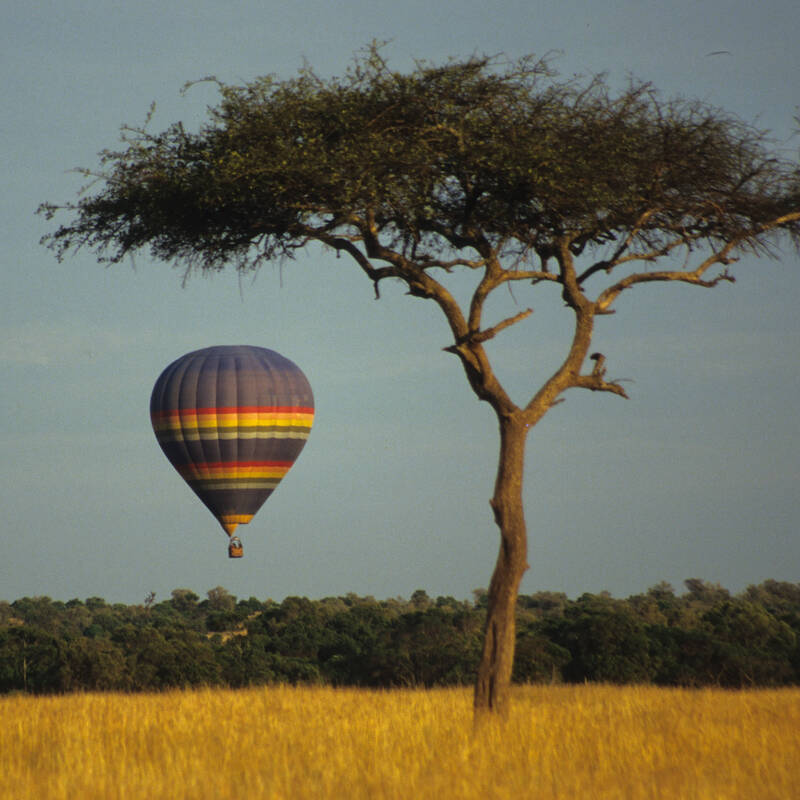
Balloon flight over the Mara
3 hours in total - morning only
With the sun rising over the Loita Hills, you scramble into the balloon basket for the start of a once-in-a-lifetime experience. You’re about to go drifting with the breeze above the trees and plains of one of the world’s greatest wildlife regions.
More about Balloon Safari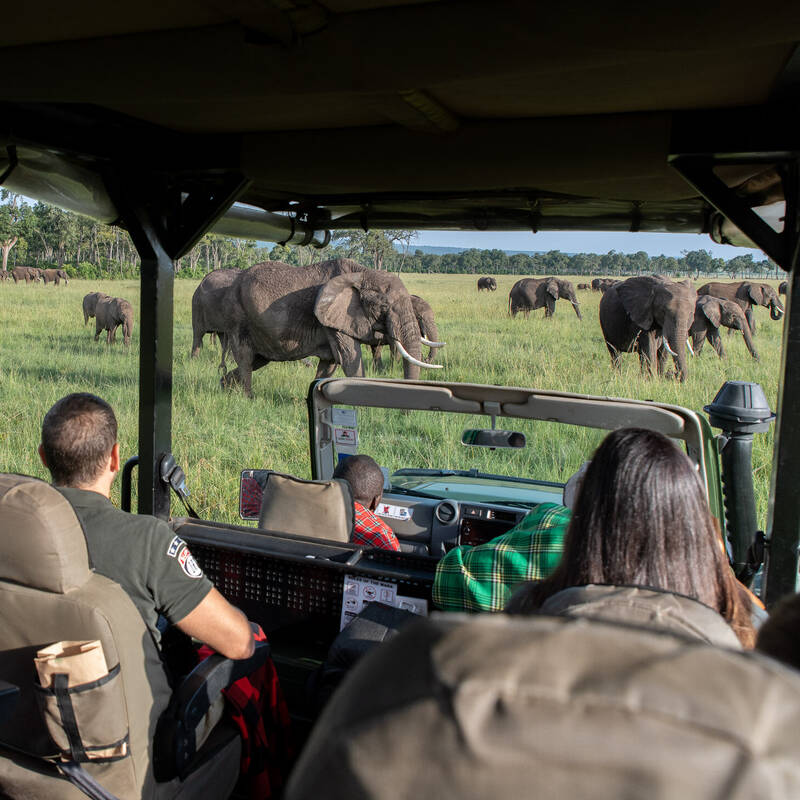
Safari in Maasai Mara National Reserve
All day from sunrise to sunset
If you're not staying in the Maasai Mara National Reserve itself, you're likely to be staying in one of the outstandingly wildlife-rich Maasai-owned private conservancies just outside the reserve boundary. A full-day game drive in the reserve gives you the chance to visit the Mara River and see some of the reserve's fabled wildlife locations.
More about Maasai Mara Safari
Looking for inspiration on where to travel next?
Visit our trip chooser to explore your options and find inspiration for your perfect African adventure
Inspire meFREQUENTLY ASKED QUESTIONS
Our Expert Guide to Safari in the Maasai Mara Conservancies
To help you plan your safari in the Maasai Mara Conservancies, we’ve put together a guide covering all the essentials.
What is the difference between the Maasai Mara Conservancies and the Maasai Mara National Reserve?
The National Reserve is a 1,510km² government-managed protected area divided into two – the Mara Triangle side and the Narok side. It is open to all visitors, including self-drive tourists, and tends to attract higher vehicle concentrations, especially around big cat sightings and during the migration.
In contrast, the conservancies are community-run areas located on Maasai-owned land bordering the reserve. They operate under community-led models in partnership with tourism operators, emphasising sustainable tourism. Only guests staying within a conservancy can enter it, reducing vehicle density and offering more exclusive wildlife viewing. Activities like guided walks and night drives – prohibited in the national reserve – are also permitted.
Conservancies provide crucial income to local Maasai families via land lease fees and employment, supporting both conservation and livelihoods. This dual mission, combined with improved management and guest experiences, makes the conservancies an innovative complement to the reserve’s more traditional model.
What sets the conservancies apart is their low-impact tourism model. Strict limits on vehicle numbers and guest beds per area ensure uncrowded, intimate safari experiences, often including walking safaris and night drives – activities not permitted inside the main reserve. Local Maasai communities benefit directly from tourism through land lease payments, employment, and guide training.
What are the advantages of staying in the conservancy versus the reserve?
Conservancies provide a more intimate safari experience. Visitor numbers are tightly controlled, and only guests staying in a particular conservancy can access it. This results in far fewer vehicles at wildlife sightings, especially around big cats, enhancing the quality of the experience. In contrast, parts of the national reserve, particularly the Narok side, often suffer from overcrowding, though the Mara Triangle is better managed.
The conservancies also allow a broader range of safari activities. Guests can enjoy guided bush walks and night drives – experiences not permitted in the reserve. These opportunities offer deeper engagement with the ecosystem and its nocturnal life.
Economically and ethically, conservancies offer significant benefits. They operate on Maasai-owned land through lease agreements, providing families with direct income and employment. This model supports both community livelihoods and conservation efforts, creating a sustainable tourism structure that benefits all stakeholders.
Overall, conservancies deliver a more exclusive, varied, and responsible safari experience compared to the traditional, and often crowded, National Reserve.
What safari activities are available in the Maasai Mara Conservancies?
Night drives are another highlight exclusive to conservancies. These excursions provide a rare opportunity to observe nocturnal wildlife such as aardvarks, porcupines, and predators on the hunt – nocturnal experiences unavailable in the reserve due to strict regulations.
Traditional game drives in the conservancies are also more exclusive. With restricted vehicle numbers and access limited to camp guests, sightings – especially of big cats – are less crowded and more rewarding. This fosters a respectful and unhurried wildlife experience.
Overall, the conservancies provide a richer safari itinerary, combining classic game drives with walking safaris and night explorations, all in a less congested, community-driven setting.
Are the Maasai Mara Conservancies a good option for family or multi-generational safaris?
Many conservancy camps accommodate families warmly. Some properties have no minimum age for children, and even those that do often make exceptions with private vehicle bookings. Family units or exclusive-use camps, such as Basecamp Mara Houses, provide space, privacy, and tailored activities suited to different age groups.
The range of activities is ideal for diverse interests and energy levels. While older guests enjoy serene game drives or birdwatching, younger ones can participate in nature walks, learn bush skills from Maasai guides, or visit local communities. Some camps also offer dedicated children’s programs, keeping younger travellers engaged while adults relax.
The conservancies’ low visitor density ensures a peaceful atmosphere, and the ability to book private vehicles enhances comfort and scheduling flexibility. This helps families travel at their own pace—an essential factor for multi-generational groups.
With a strong focus on conservation and cultural immersion, the conservancies provide meaningful and memorable experiences that appeal to every generation, making them an outstanding choice for family safaris.
Can I see the migration river crossings in the Mara conservancies?
The most iconic wildebeest river crossings - where breakaway herds of hundreds or even thousands of animals plunge into the crocodile-filled waters of the Mara River - occur primarily within the Maasai Mara National Reserve. Key crossing points are located all along the Mara River where it meanders south through the national reserve. These locations are famed for their photogenic and intense scenes during the peak migration season from July to October.
By contrast, while conservancies such as Mara North, Olare Motorogi, and Mara Naboisho host spectacular concentrations of wildlife, they do not encompass the Mara River itself. Visitors to these conservancies may see parts of the migration, including large herds moving across the plains and dramatic predator-prey interactions, but not the classic river crossings.
However, staying in a conservancy does not mean you won’t have access to see a crossing, as many camps offer full-day excursions into the national reserve specifically for this purpose. This allows visitors to enjoy the benefits of the conservancies – privacy, flexible activities, and conservation support – while still accessing the migration’s dramatic highlights.
Is there malaria in the Maasai Mara Conservancies?
The Maasai Mara, including its conservancies, sits at an elevation of around 1,500m above sea level. This highland environment helps keep mosquito populations low. While this reduces the transmission risk, malaria has not been eradicated entirely, and cases can still occur.
Most safari camps and lodges in the conservancies take precautionary measures to minimise visitors’ exposure to mosquitoes. These often include providing insect repellent and mosquito-screened accommodations. It’s also advisable to wear long sleeves and use repellent, especially in the evening when mosquitoes are most active.
Despite the relatively low risk, it is strongly recommended that you consult your healthcare provider before travel. A suitable course of prophylactic anti-malarial medication is typically advised as a precaution, especially as you will likely travel through other areas of Kenya where the risk is higher, before and after staying in the conservancies.
What wildlife can I see in the Maasai Mara Conservancies?
These conservancies are home to an extraordinary concentration of animals. Big cats are a particular highlight – lion, leopard, and cheetah sightings are frequent, and often experienced without the vehicle congestion found in the reserve. The open landscapes and low visitor density allow for uninterrupted viewing and remarkable photographic opportunities.
In addition to predators, the conservancies are rich in herbivores. Large herds of elephant, giraffe, buffalo, and zebra roam the plains year-round. During the migration season, wildebeest spread across the plains, offering the chance to witness dramatic predator-prey interactions even if the famous river crossings occur inside the reserve.
Smaller species such as jackals, servals, bat-eared foxes, and a range of antelope – including impala, eland, and topi – are also commonly seen. Night drives may reveal nocturnal wildlife like bush babies and aardvarks, adding to the diversity of sightings.
Explore the best camps and lodges to see wildlife in the Maasai Mara Conservancies, based on real reports from Expert Africa travellers.
What’s the best time to visit the Maasai Mara Conservancies?
From July to October, the conservancies are at their most dramatic due to the annual wildebeest migration. While the famous Mara River crossings occur in the national reserve, the conservancies host large herds and intense predator-prey interactions. Wildlife densities are high, and the landscape is vibrant, making this peak season ideal for first-time visitors or those eager to witness the migration spectacle.
The green seasons (April-May and November-early December) offer outstanding game viewing with fewer visitors. Wildlife remains abundant year-round, and the conservancies’ low vehicle numbers ensure intimate sightings even outside the migration period. January to March is particularly good for predator activity, as cubs are often visible and hunting scenes are common. April and May, while wetter, can be rewarding for photography and lush scenery.
Are there any cultural experiences in the Maasai Mara Conservancies?
These conservancies are located on land owned by Maasai communities and operate on a partnership model, where local families lease their land to tourism operators. As a result, cultural integration is at the heart of the safari experience. Visitors have the opportunity to engage with the Maasai in meaningful ways that go beyond standard tourist encounters.
Most camps employ staff from the local community, and many camps offer visits to nearby Maasai villages, where guests can learn about traditional customs, architecture, and daily life. These visits are often led by local guides who share personal stories and cultural insights, making the experience more immersive and respectful. Activities may include witnessing traditional dances, observing beadwork or spear-making, and learning about livestock management – an integral part of Maasai culture.
Some conservancies, like Mara Naboisho, also support community programmes and schools, giving guests the chance to understand and contribute to local development efforts. Children especially benefit from these visits, gaining cross-cultural awareness in a natural setting.
Overall, cultural experiences in the conservancies are deeply rooted, respectful, and enriching, offering a genuine connection with the Maasai people who have called this land home for more than 300 years.
